The volcanic landscape of Lanzarote scattered with whitewashed villages has an austere quality, with spiky cactus and exotic palms, softened by a fringe of golden beaches. Situated just off the coast of Africa, the climate of the Canary Islands is balmy year round, making this a favourite winter sun destination. But look beyond the popular holiday resorts and you’ll find plenty of things to do in Lanzarote, from vineyards and volcano tours to the many cultural attractions designed by artist Cesar Manrique.
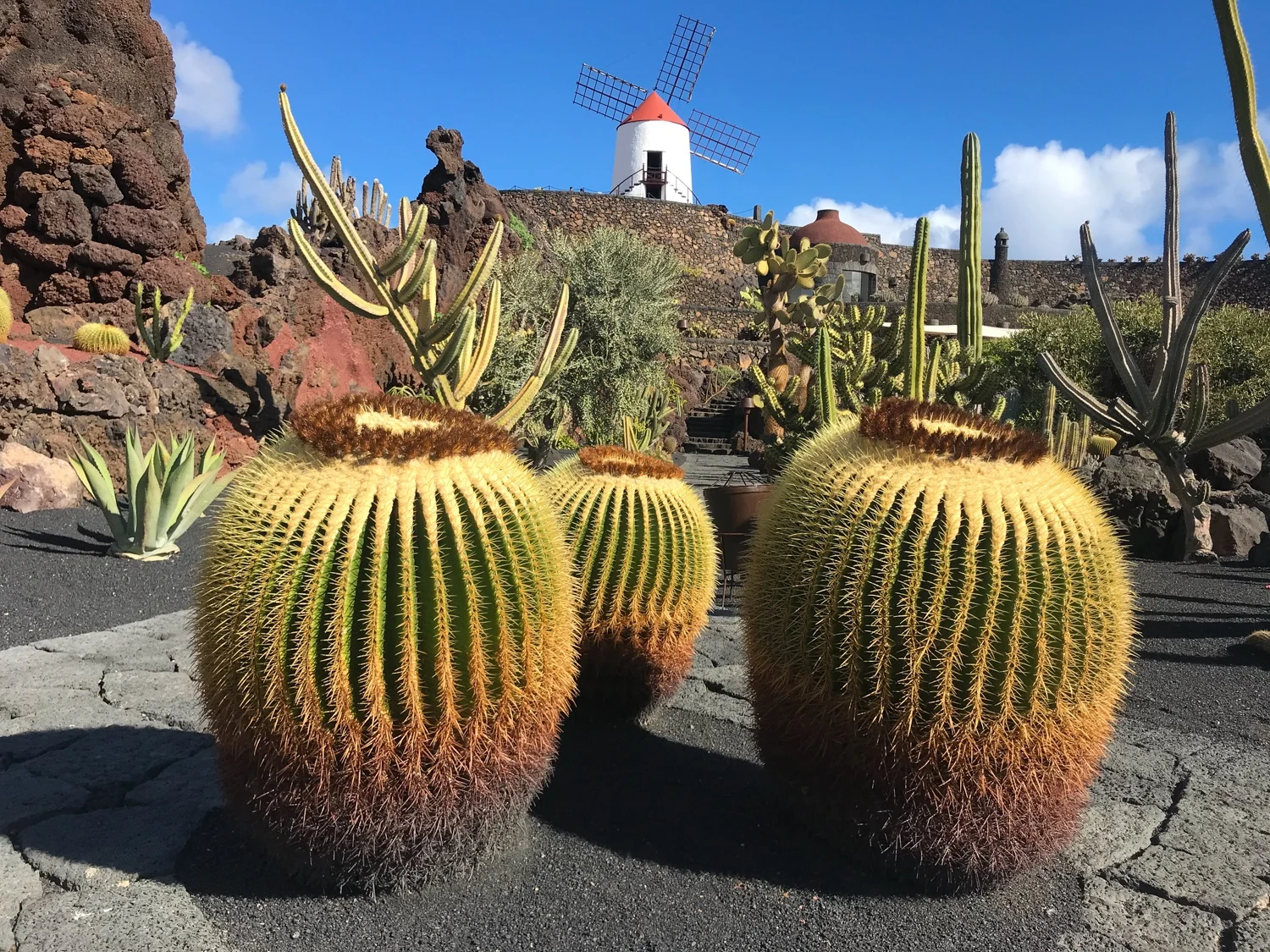
This article may contain affiliate links that provide commission on purchases you make at no extra cost to you. As an Amazon Associate I earn from qualifying purchases.
My top 5 things to do in Lanzarote
With so many amazing places to visit in Lanzarote (read on for over 30 that I recommend!), you may not have time to see them all, even on the typical 7-10 day break. So for those short of time I’ve listed my top 5 things to do first, to get you started. We stayed at the centrally located Finca Malvasia on this leg of the trip.
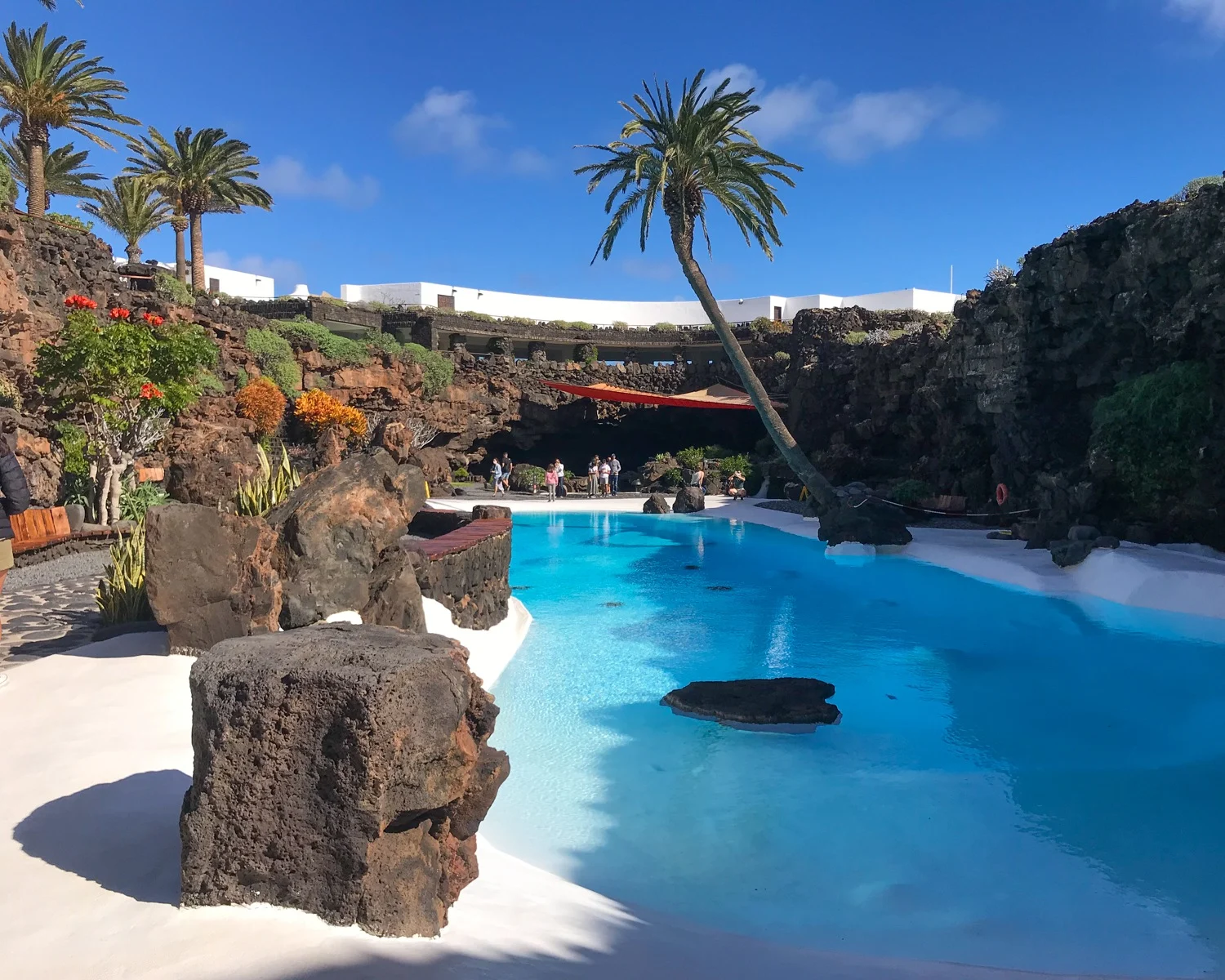
- Timanfaya National Park or the surrounding Parque Natural de los Volcanes – to discover the unique volcanic landscapes of Lanzarote.
- Take a wine tour and go bodega hopping in the La Geria wine region – to taste the quality white wines and see how the vineyards thrive, despite the lack of water.
- Visit Playa Papagayo and the string of rocky coves nearby – beautiful and undeveloped, they sit within a protected reserve, for sheltered swimming on the warm south coast of Lanzarote.
- Visit Jameos del Agua, created by celebrated local artist Cesar Manrique – it’s a volcanic cave, turquoise lagoon, restaurant and events space all in one. If you can’t make it, try and visit at least one of the Cesar Manrique sites scattered around Lanzarote.
- Take a day trip to La Graciosa – the smaller island to the north of Lanzarote which is just half an hour by ferry and great for cycling and swimming.

1. Timanfaya National Park
The austere landscape of Lanzarote is shaped by the volcanic eruptions of the past, notably those from 1730-1736. During these six years a third of the island was covered with lava flow and ash. The Timanfaya National Park was created in 1974, taking a slice out of the surreal moonscape left by the cooling lava and it’s one of the most popular things to see in Lanzarote.
There are several different things to do within the park, which is accessed from the road between Mancha Blanca and Yaiza. Since the different attractions are spread along the road, you’ll ideally need to visit the Timanfaya National Park by car or take a guided tour.
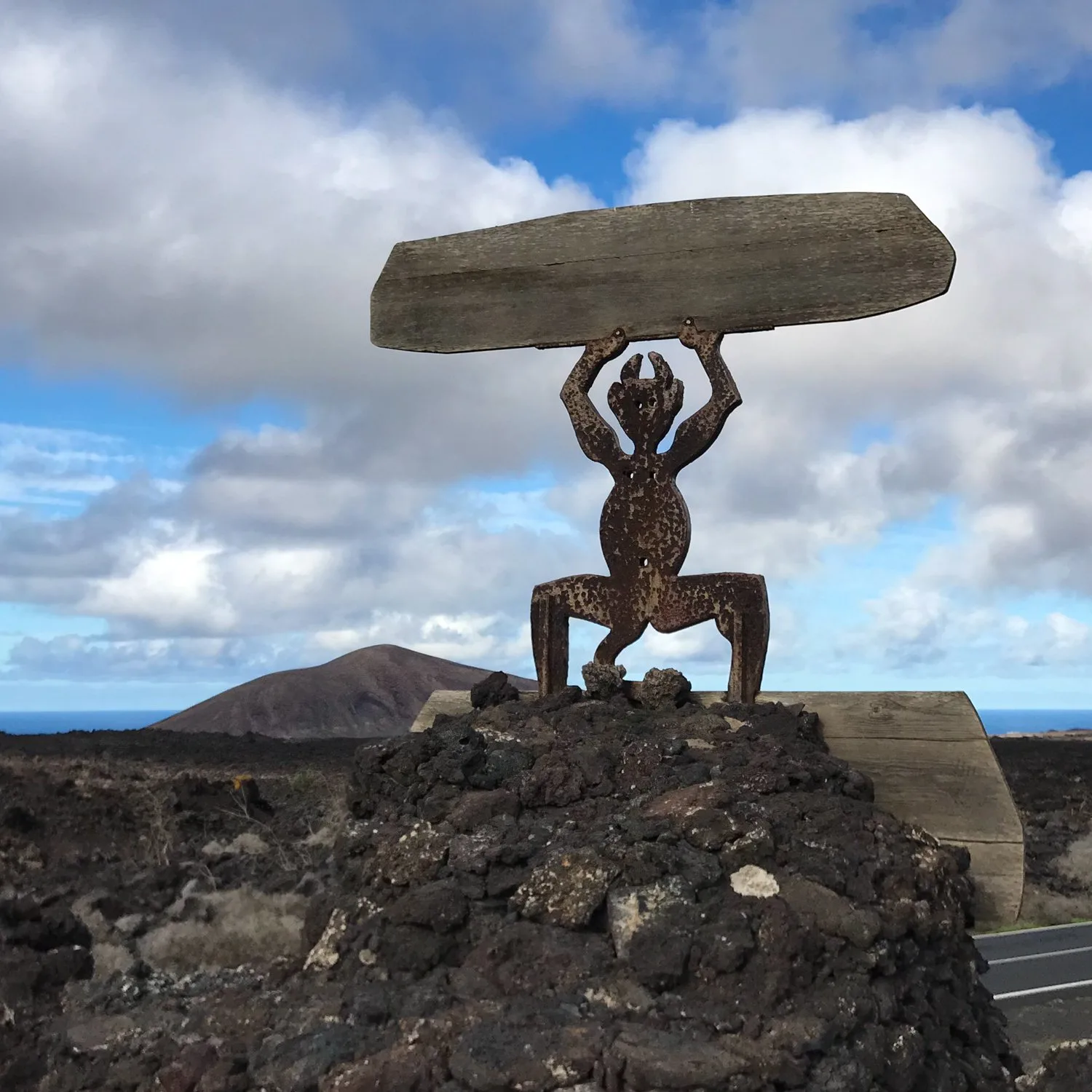
Discover why Lanzarote is a top winter sun destination in Europe
What to see in Timanfaya National Park
Timanfaya National Park tickets are available at the booth for the Montañas del Fuego or Fire mountains, allowing you to drive up the access road to the car park. Leaving your car here, the ticket includes a 30 minute coach tour on the Ruta de los Volcanes that winds through the park to view the charcoal and ochre moonscape.
At the end of the tour the guides create a water geyser and demonstrate the geothermal heat of the active volcano. You can also access the adjoining El Diablo restaurant designed by Cesar Manrique where chicken and steaks are roasted over an open barbeque, heated by underground volcanic activity.
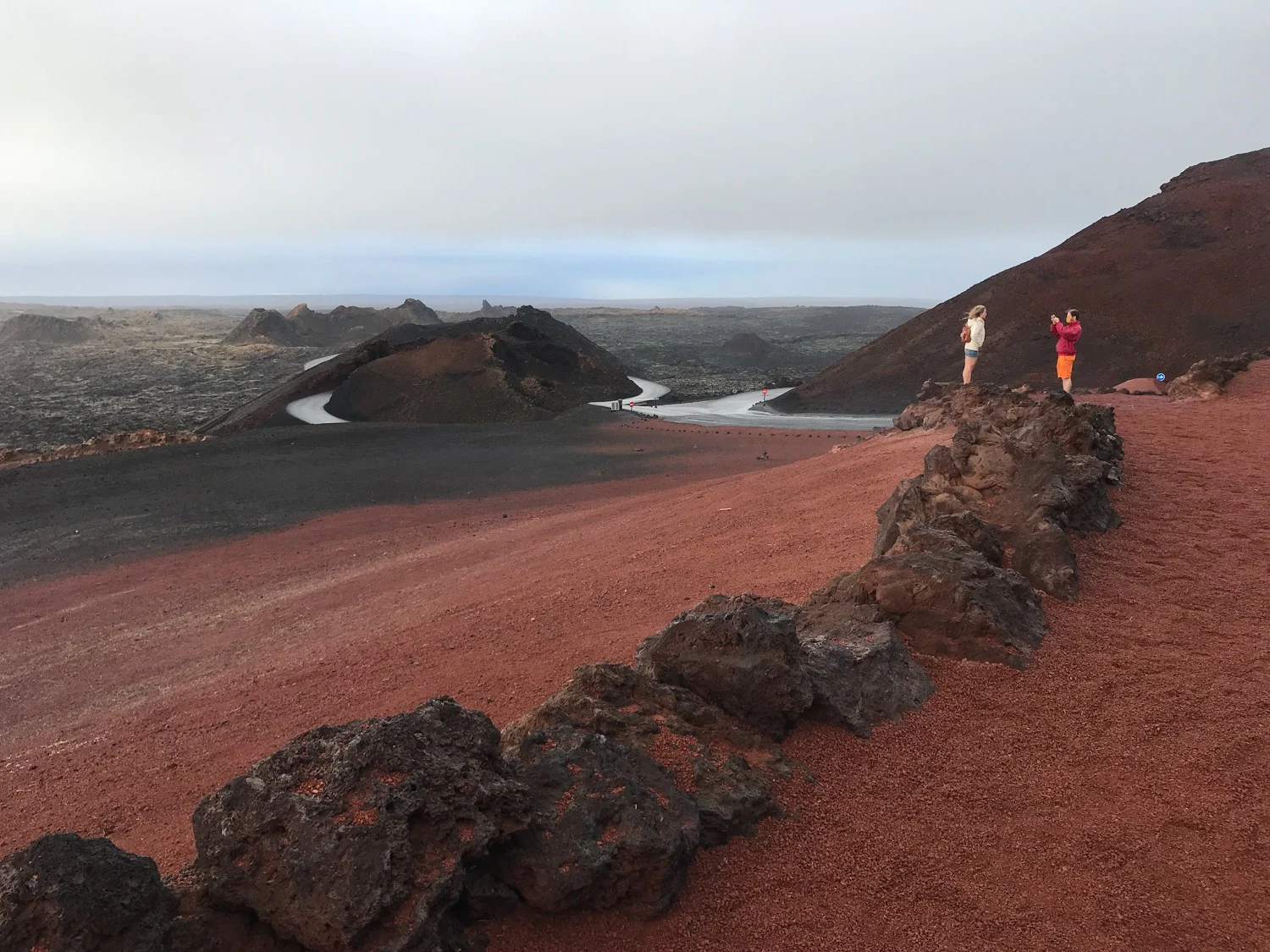
A little further along the main road towards Mancha Blanca is the Timanfaya visitor centre. It’s free to visit and has a viewing platform over the volcanic lava fields, as well as interesting displays to explain the volcanic activity.
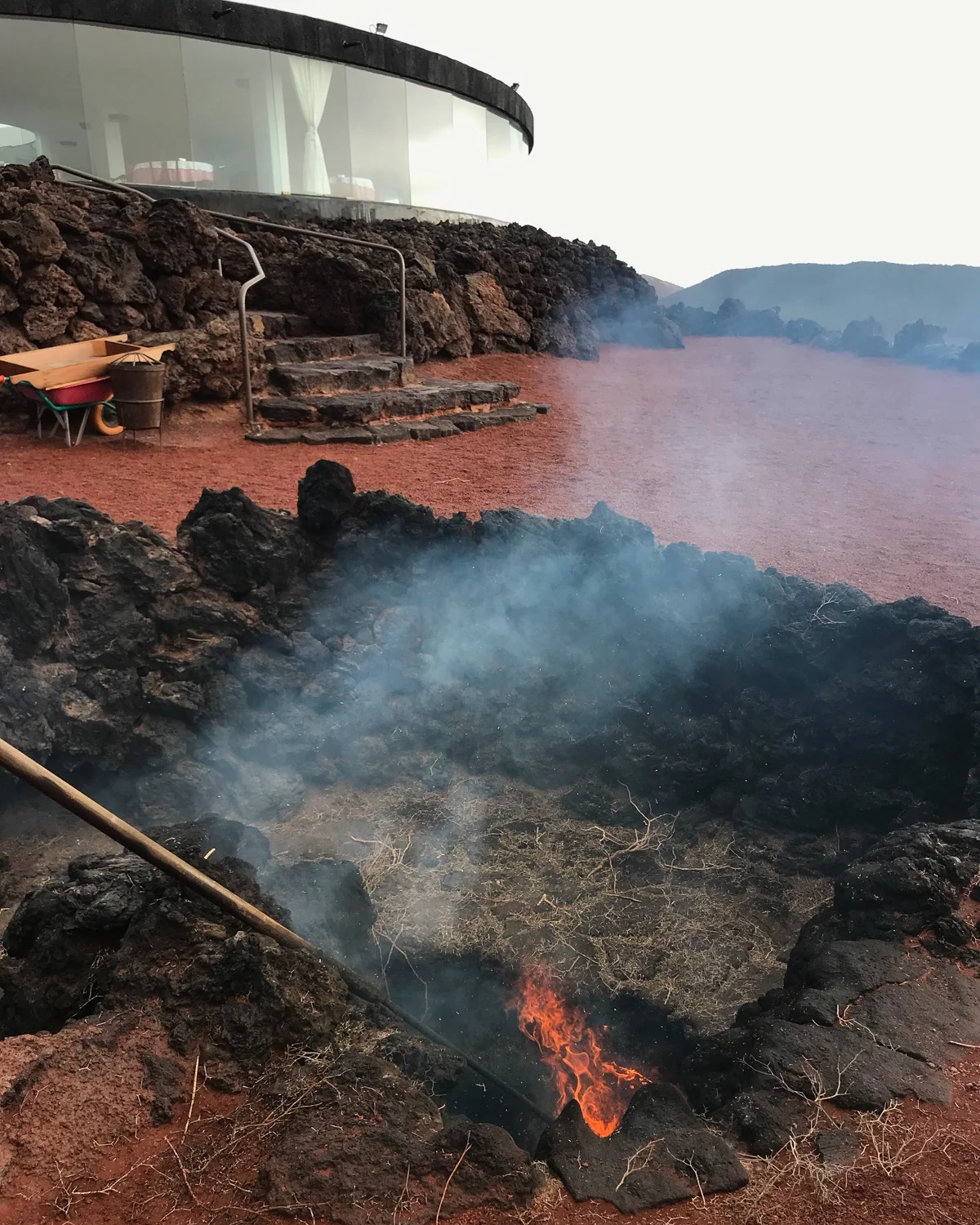
Also just off the road in the Yaiza direction is the Echadero de Camellos or camel station. Here you can take a ride in the camel train and visit the small museum to learn how camels were used in the past to work the land. The cost is €12 per camel for 2 people for a 20 minute ride.
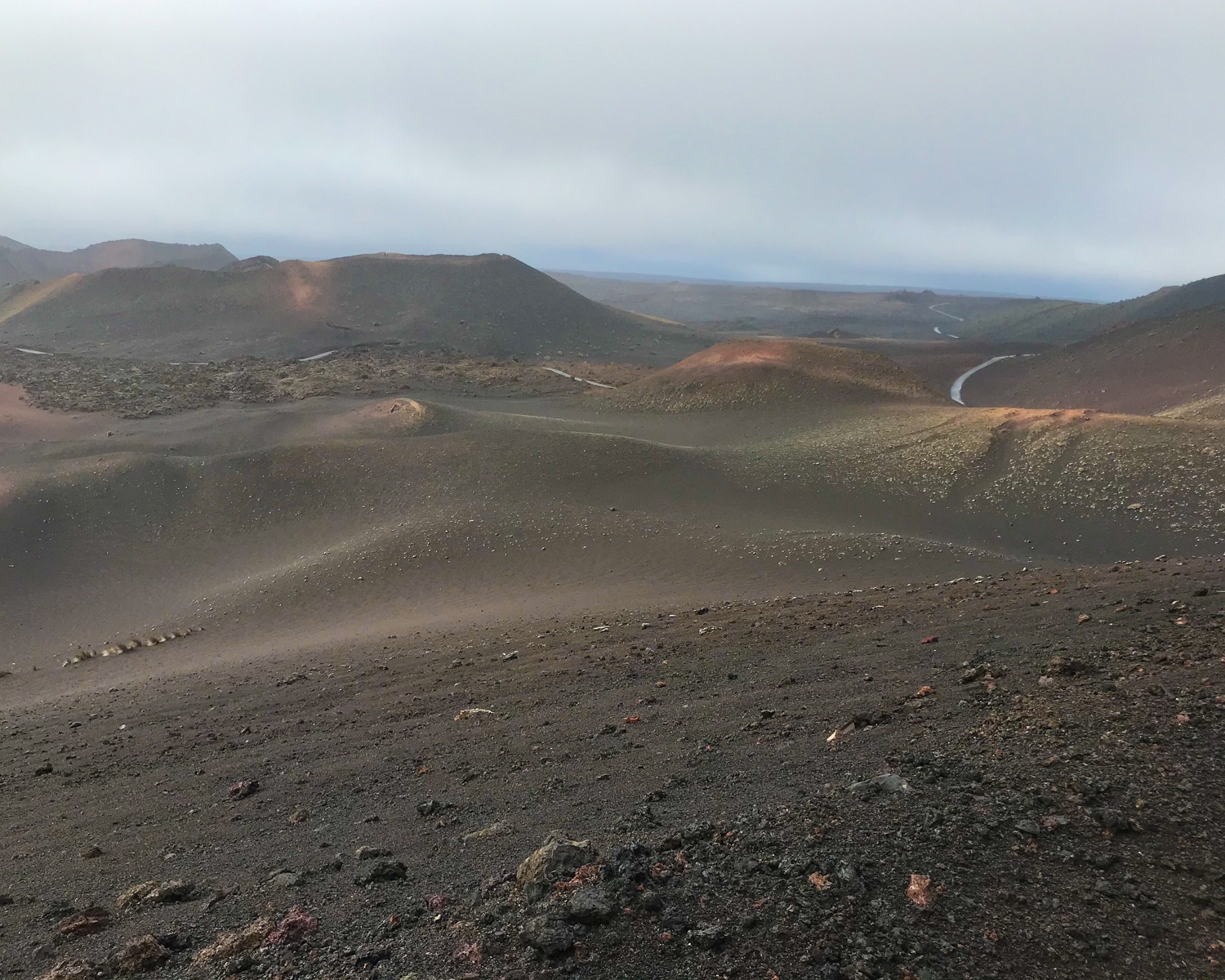
Visitors on a budget can drive along the Mancha Blanca to Yaiza road through the park and look around the visitor centre for free. If you don’t want to pay for the Montañas del Fuego tour, an alternative is to drive to the parking spots in the nearby Parque Natural de los Volcanes, where there are interpretation boards and walking trails to some of the volcanoes.
To learn more about the park and activities available, read my article: Timanfaya National Park and the volcanoes of Lanzarote
2. Parque Natural de los Volcanes
Much of the volcanic landscape outside the Timanfaya Park is included in the Parque Natural de los Volcanes. There are parking areas with information boards and walking trails to a number of the volcanoes.
A great way to learn more about the geology, flora and fauna of this area is with an expert guide, on the 3 volcanoes tour we took with Eco-insider. If you prefer to visit independently, the following volcanoes have parking areas and walking trails around them.
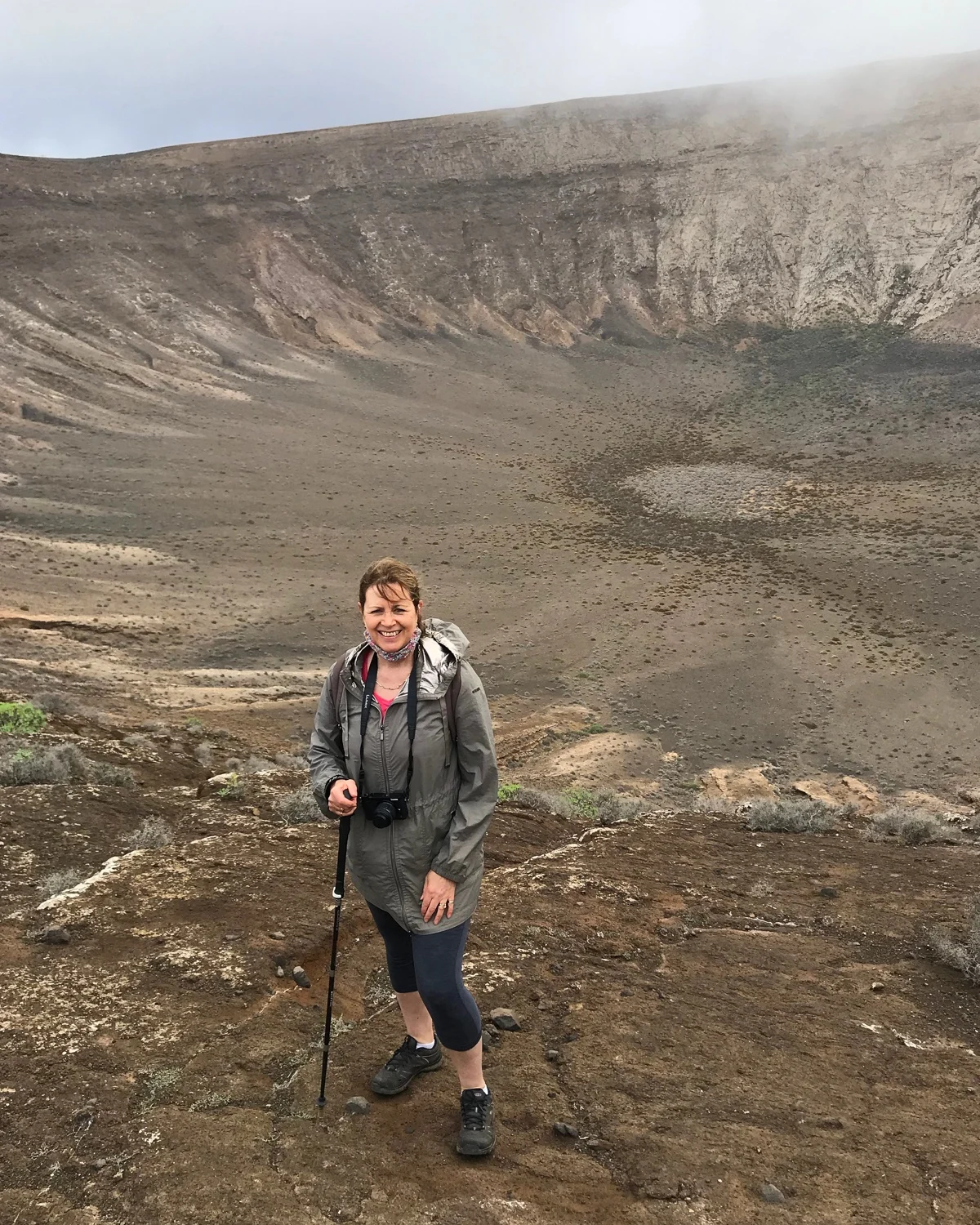
Walking trails in the Parque Natural de los Volcanes
- Caldera Blanca / Montana Blanca – Head west from Mancha Blanca to find the car park at the start of this walking trail. This round trip takes a few hours, through the badlands or malpais, as the lava fields are known. Passing the smaller Caldereta, you’ll reach Caldera Blanca for an easy climb to the top of the crater and walk around the rim with views towards the coast. If you don’t have time for the long walk, the 3 volcanoes tour with Eco-insider will take you directly to the base by land rover.
- Montana Colorada / Caldera Colorada – an easy trail from a parking area runs around the volcanic cone, although you are not allowed to climb it. Beside the trail is a huge volcanic bomb which is thought to have been deposited by the lava flow in the 1730s eruptions.
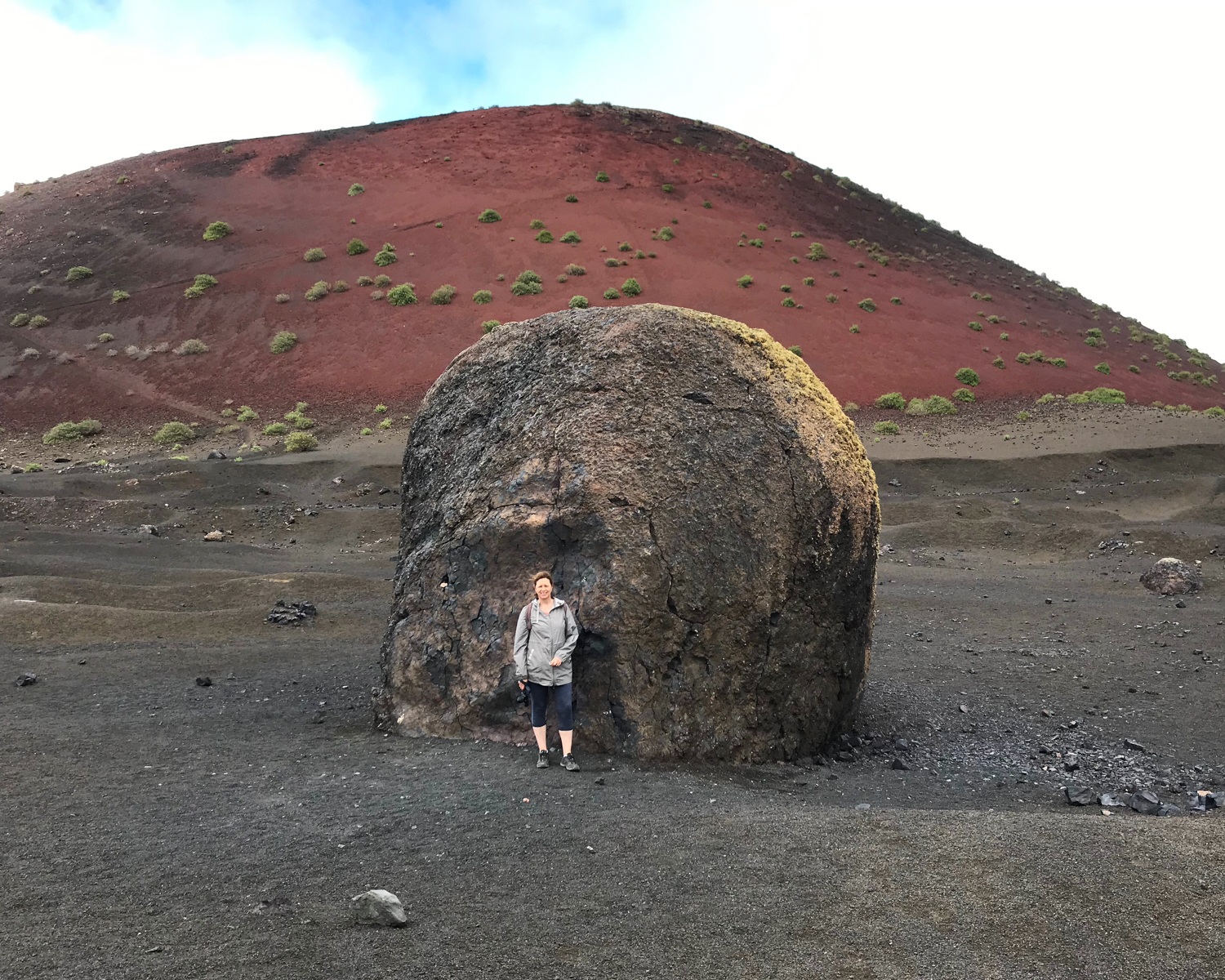
- Caldera de los Cuervos / Volcán el Cuervo – From the parking area a well marked trail leads towards the crater and runs right inside, then around the crater to take you back to the car park.
- Montaña Los Rodeos – This 4 hour walk takes you along a straight dirt track to a high volcanic cone, with a trail that runs up to the peak, for views over the surrounding area. There is a parking area just south of La Mancha.
Read my article about our walking tour in the Parque Natural de los Volcanes and our 3 volcanoes tour with Eco-insider.
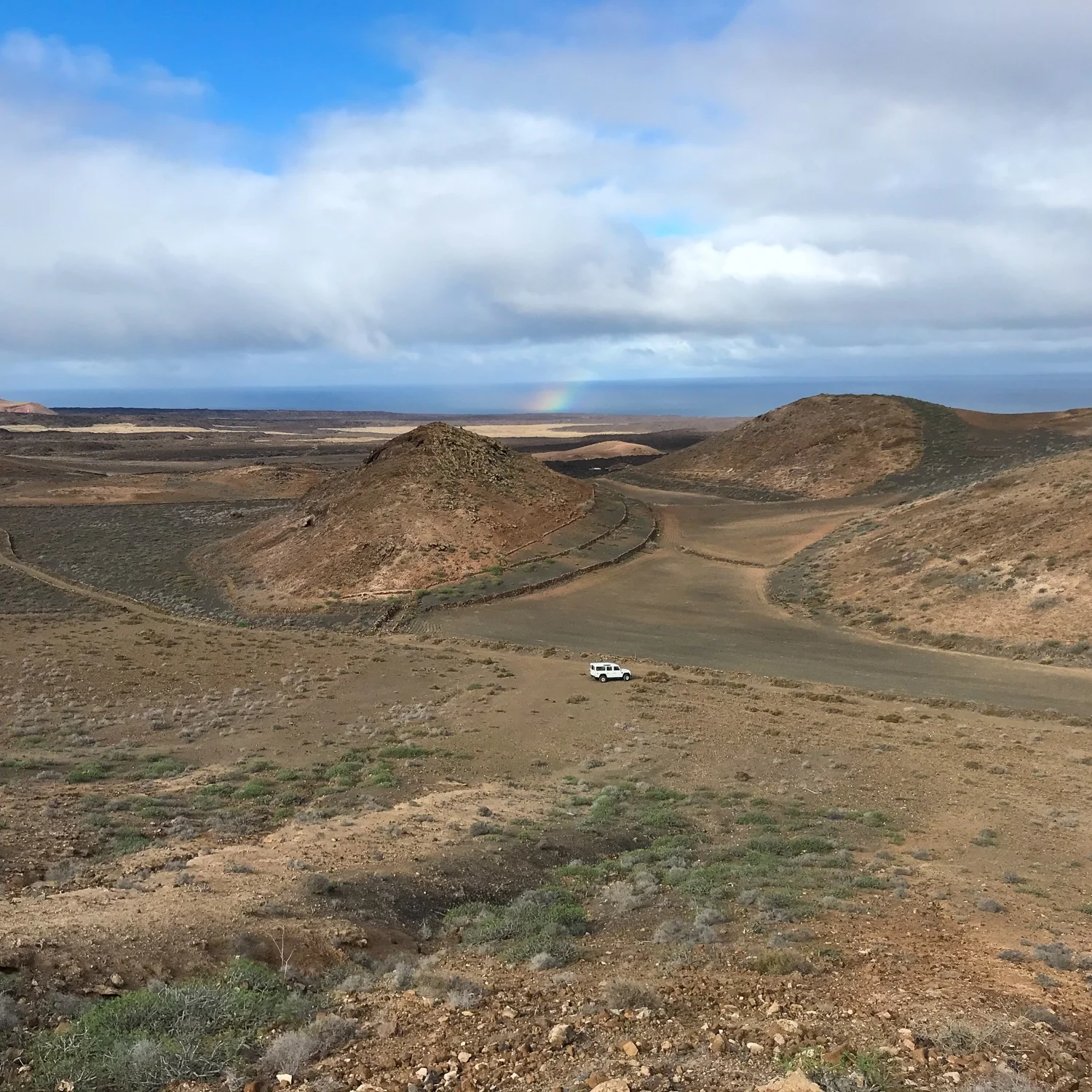
3. Lanzarote wines in the La Geria region
The La Geria region of Lanzarote is where you’ll find the vineyards and wineries, to learn about the island’s unique style of viniculture and taste the high quality wines. While the sweet Malmsey wine of the Canary Islands was praised by Shakespeare, most of the Lanzarote vineyards were planted after the 1730 eruptions, which covered the fertile farmlands with volcanic ash. Finca Malvasia Vineyard, where we stayed, is set in a working vineyard in the heart of this region.
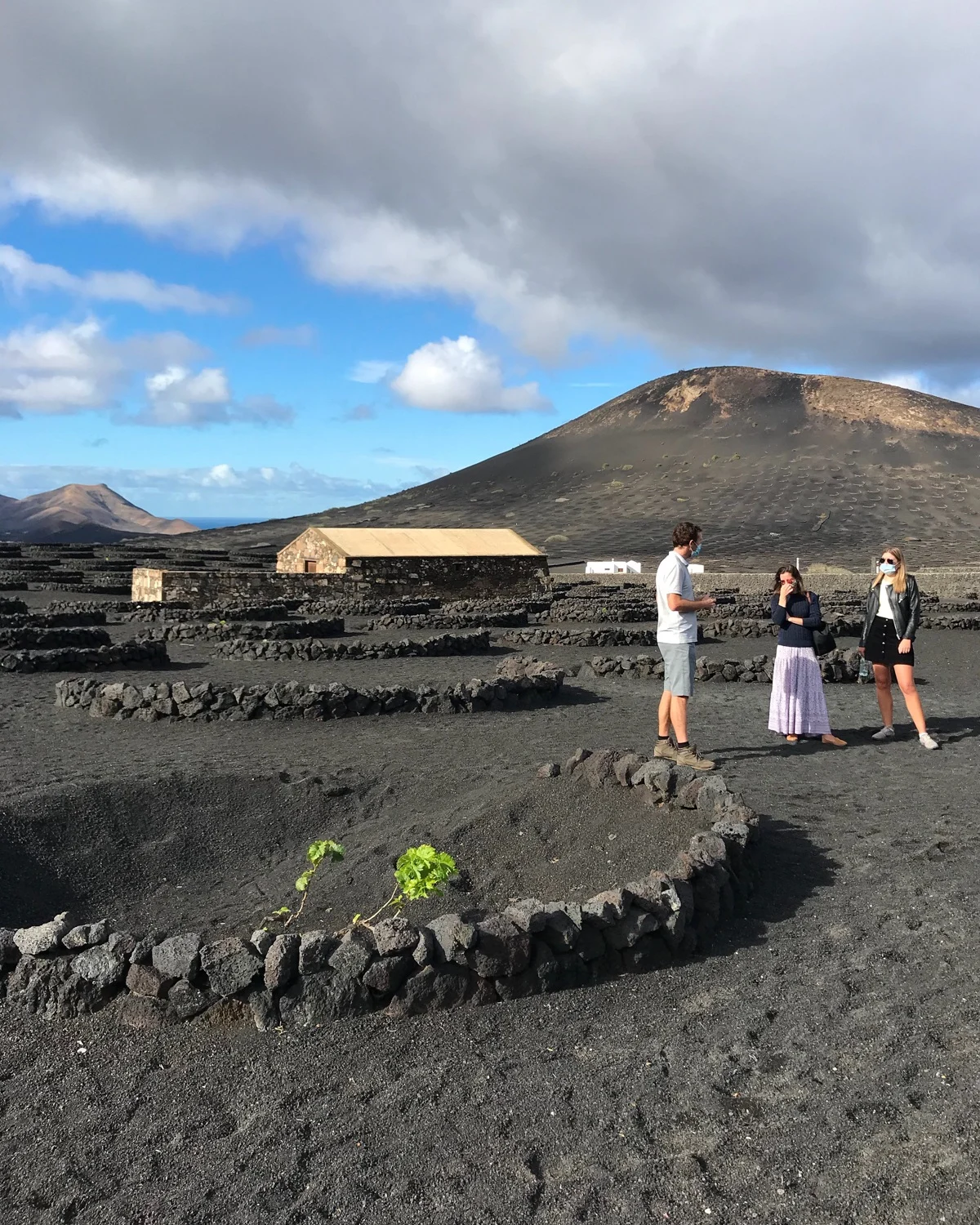
The vineyards have a stark appearance, with vines planted individually in hollows, then covered in a mulch of grey picon gravel. With very low rainfall, the vineyards receive moisture from the northern trade winds and the dew that is channelled to the base of the vine. Low semi-circular stone walls known as zocos protect the vines and help to create a sheltered microclimate.
Making a bodega hopping wine tour is a fun thing to do in Lanzarote, either with a company like Wine Tours Lanzarote or on your own by driving around the different wineries. The main grape variety of Malvasia Volcanica makes a light, fresh white wine, but you can also look out for varieties such as Diego, Listan Negro and the Moscatel used to make sweet, perfumed dessert wines.
Check out my 7-day itinerary for hiking in La Gomera in the Canary Islands

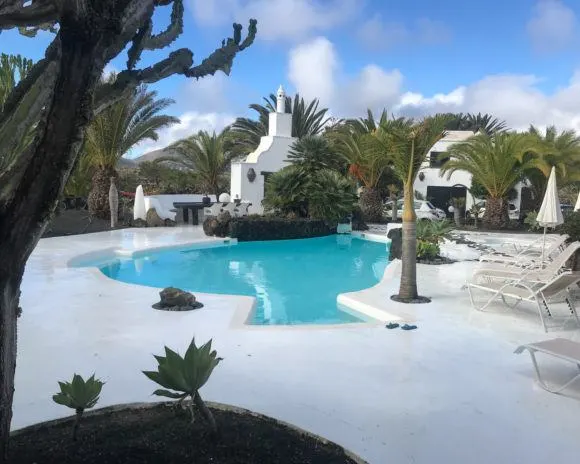
Looking for a place to stay in Lanzarote? We can recommend the boutique vineyard accommodation at Finca Malvasia – read my review
Wineries to visit in Lanzarote
It’s easy to spot the wineries on the road between Monumento al Campesino and Uga, and they all offer wine tastings either as a small taste to try before you buy, or sold by the glass from their bar or restaurant. Larger wineries such as El Grifo or Bodegas Rubicon offer a wide range of wines and additional things to see like a wine museum or restaurant.
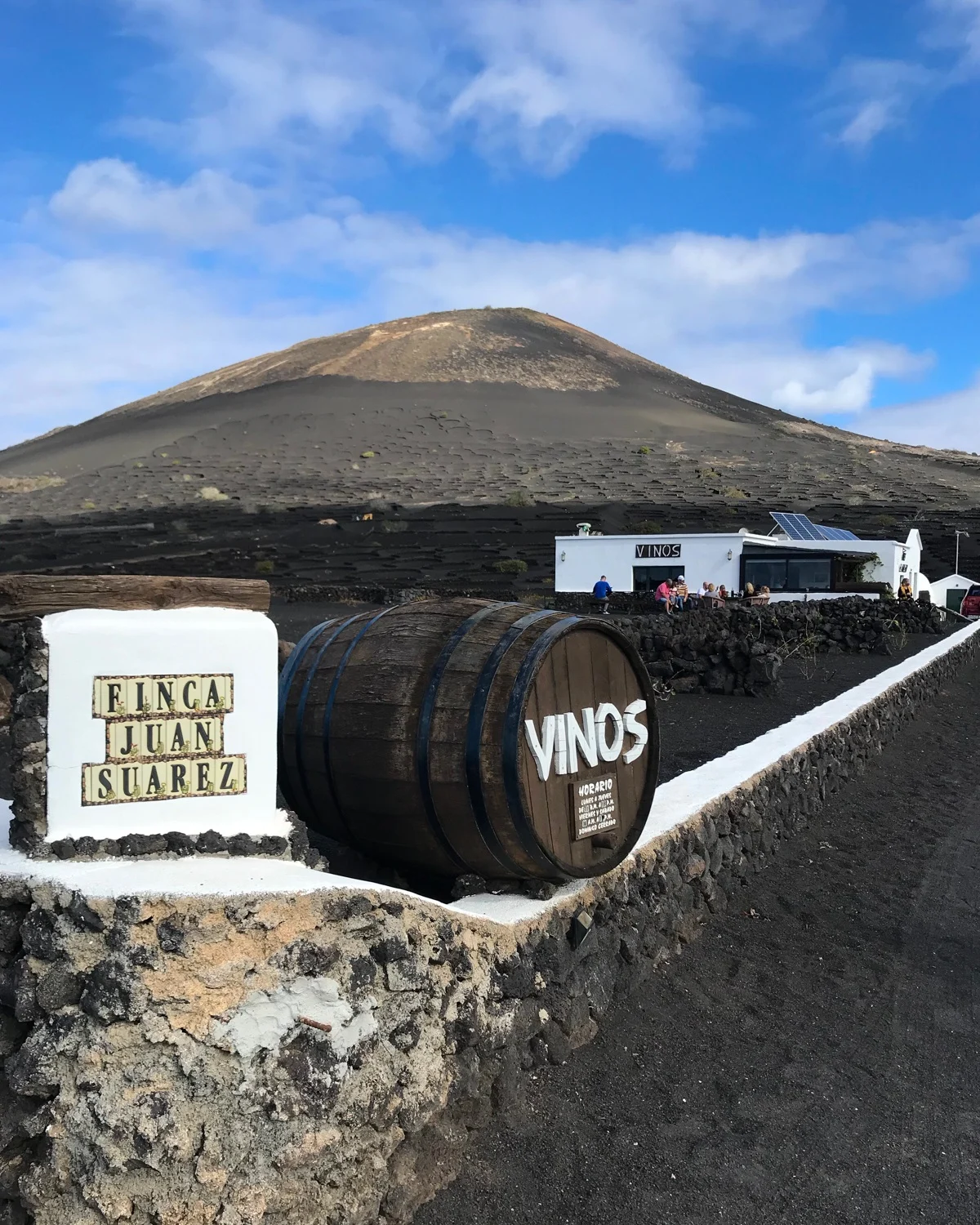
It’s also fun to explore down the side roads to find smaller boutique wineries like the El Tablero winery that sells direct to the public or the Vega Volcan smallholding that we discovered on our tour with Wine Tours Lanzarote. If you like hiking, you may enjoy this La Geria vineyards hiking tour which includes a wine tasting.
You can read more about Lanzarote wine in my article about our tour of the vineyards and wineries
4. Lanzarote beaches – Playa de Papagayo
Some of the most beautiful beaches in Lanzarote are around Playa de Papagayo to the south of the island, which provides an unspoiled alternative to the busy holiday resorts. This string of coves can either be accessed from the large car park at Playa Papagayo or by turning off on side tracks that lead to other beaches such as Playa Mujeres and Playa Caleta del Congrio.
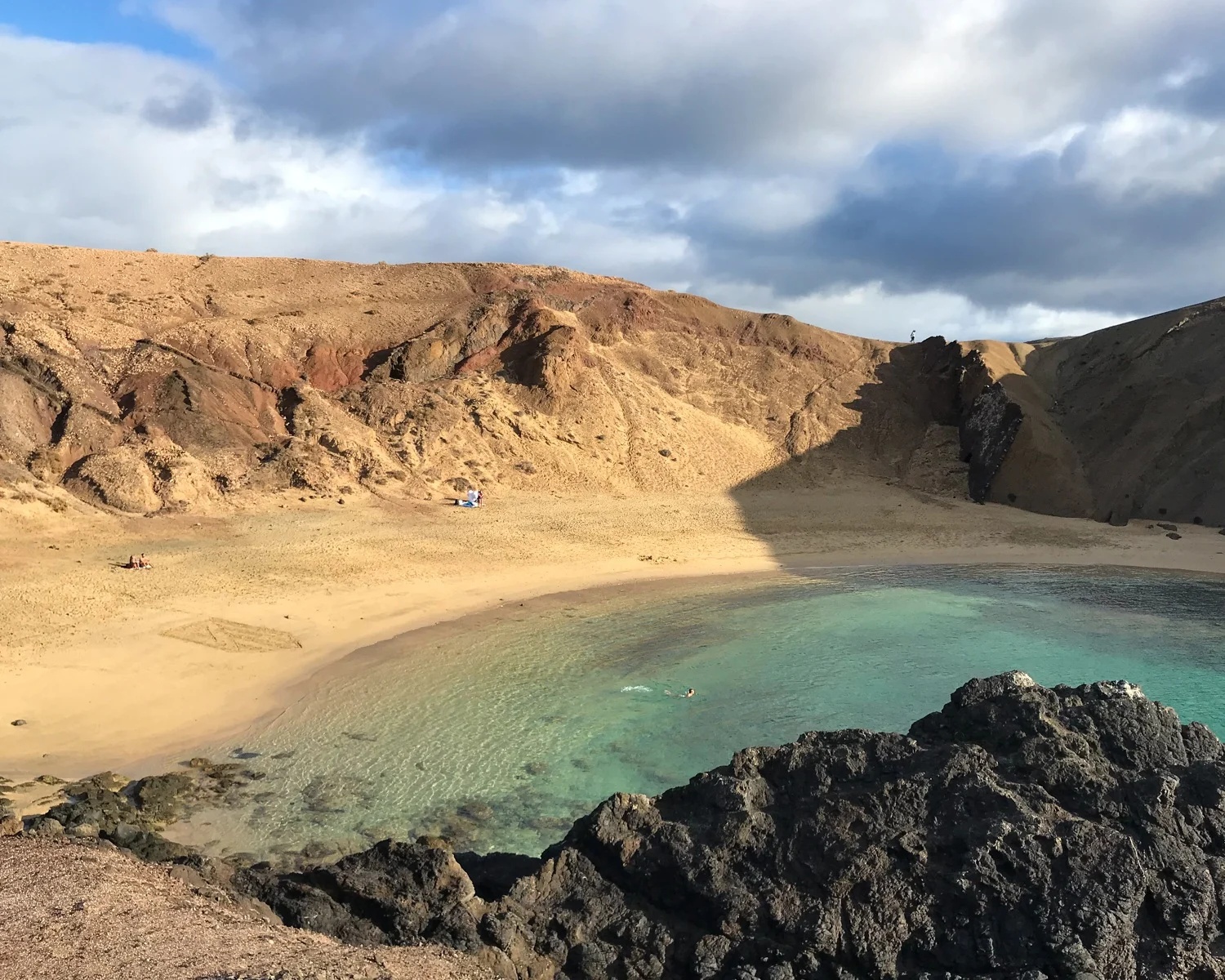
The beaches are within the Los Ajaches reserve so there’s no development here. You’ll need to pay a small charge of €3 to take your car into the reserve, payable at a booth on the entry road. Expect scenic views from the cliff tops, sandy beaches and crystal clear water for swimming, making these beaches a great place to relax for a few hours.
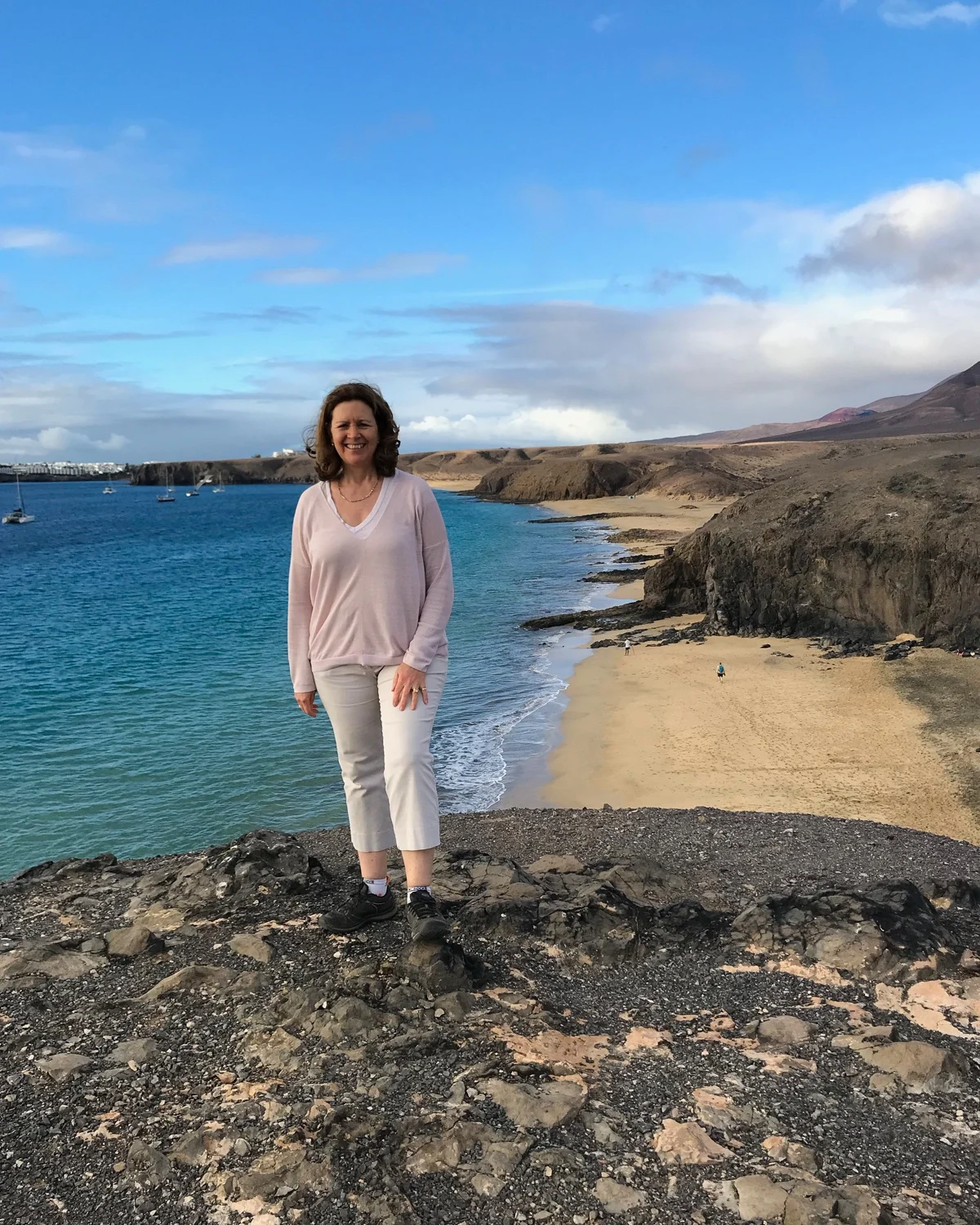
The two beach restaurants get very busy, so bring your own picnic and water if you plan to spend the day here. These beaches are also visited by yachts and boat tours from Puerto del Carmen, so this is another way to enjoy their beauty for a day of sailing and swimming.
5. Jameos del Agua caves
The Jameos del Agua caves are one of the popular Lanzarote attractions designed by Lanzarote’s most famous artist, Cesar Manrique. Entering through a system of lava tubes, you pass a dark and mysterious underground lake, populated by tiny white albino crabs, sitting like tiny stars on the bottom.
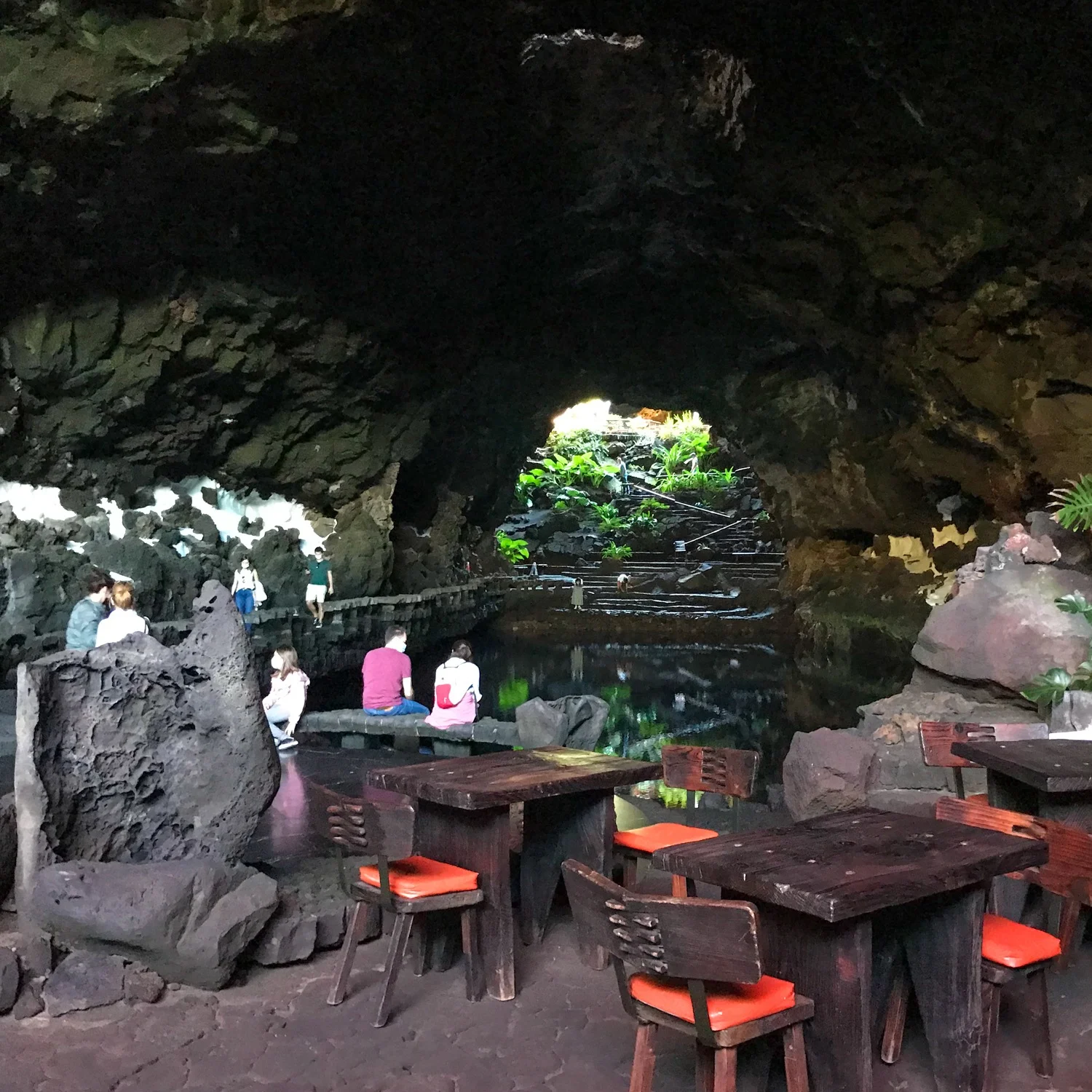
The path leads you up into the sunlight, to a turquoise lagoon surrounded by palm trees and protected by walls of volcanic stone. There’s a 60s vibe and you half expect to spot Roger Moore or Sean Connery surrounded by a bevy of bikini clad Bond girls.

At one end of the lake is an underground auditorium used for concerts, created in another of the lava tubes. Scattered about the site are several cafes and the restaurant offers special evening events with live music. Jameos del Agua is my top tip for instagrammers – it’s incredibly photogenic even though it was created long before Instagram was invented!
This full day tour of Lanzarote includes Jameos del Agua as well as several other places around the island.
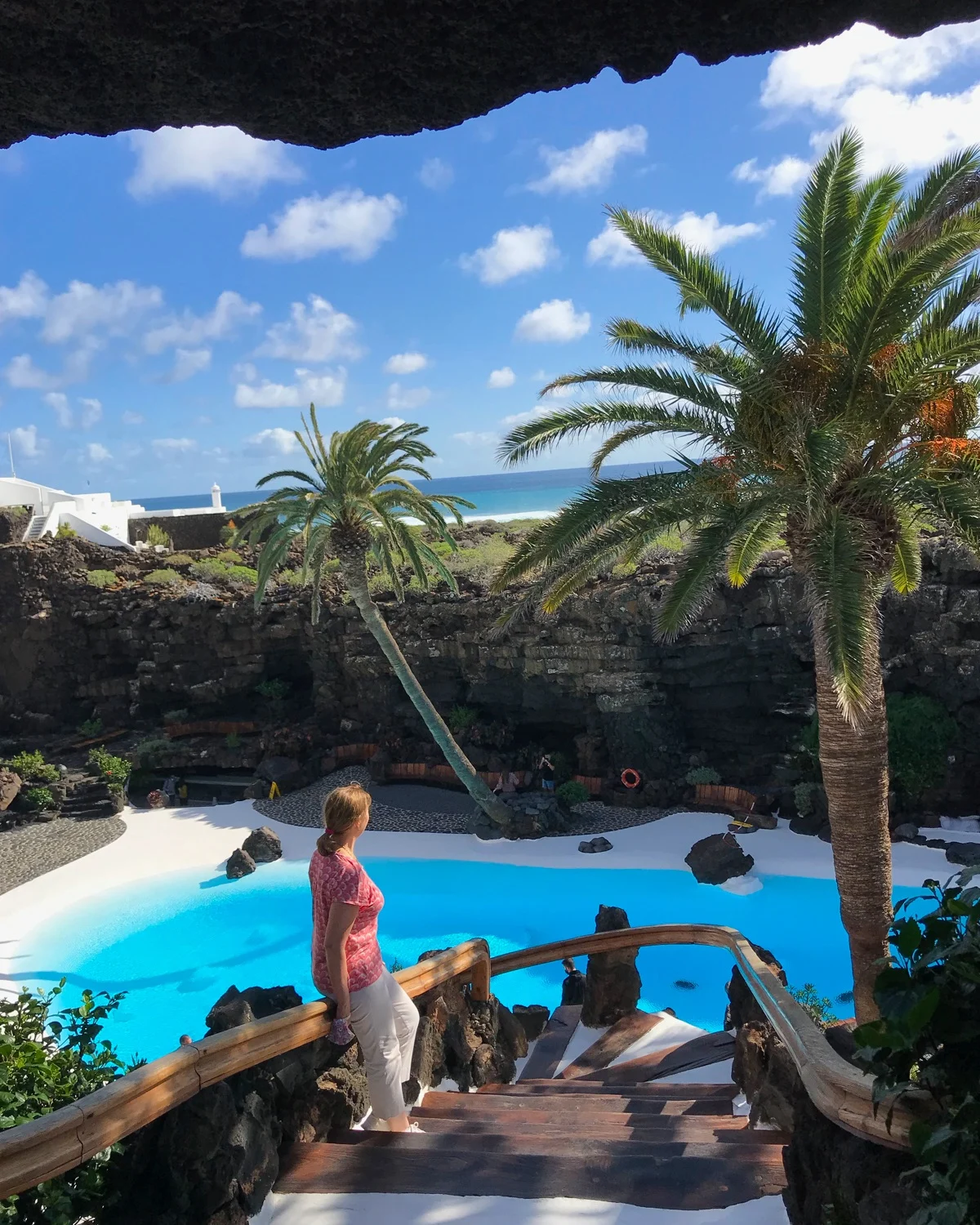
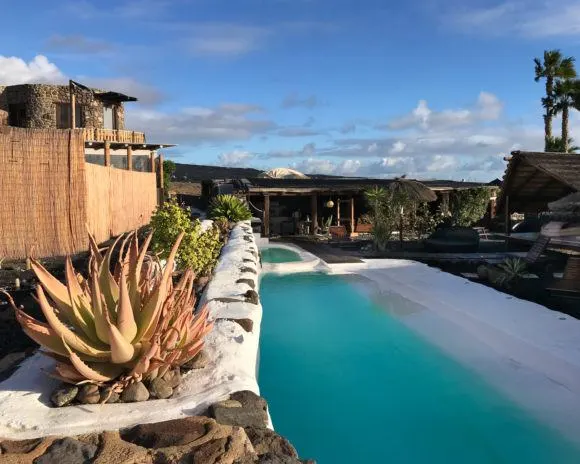
Looking for a place to stay in Lanzarote? We can recommend the eco-village at Finca de Arrieta – read my review
6. A day trip to La Graciosa
Take a day trip to the island of La Graciosa, just north of Lanzarote, for a relaxing day of cycling and swimming. The ferry (book tickets in advance here) takes just 30 minutes from Orzola and is part of the fun of the trip, as you spot seabirds and look up at the looming Famara cliffs topped by the Mirador del Rio. With only a few dirt tracks that criss-cross the island and one main town of Caleta del Sebo, a trip to this unspoiled island is like stepping back in time.
Read my article from our visit: Visit La Graciosa from Lanzarote: a day trip of cycling and swimming
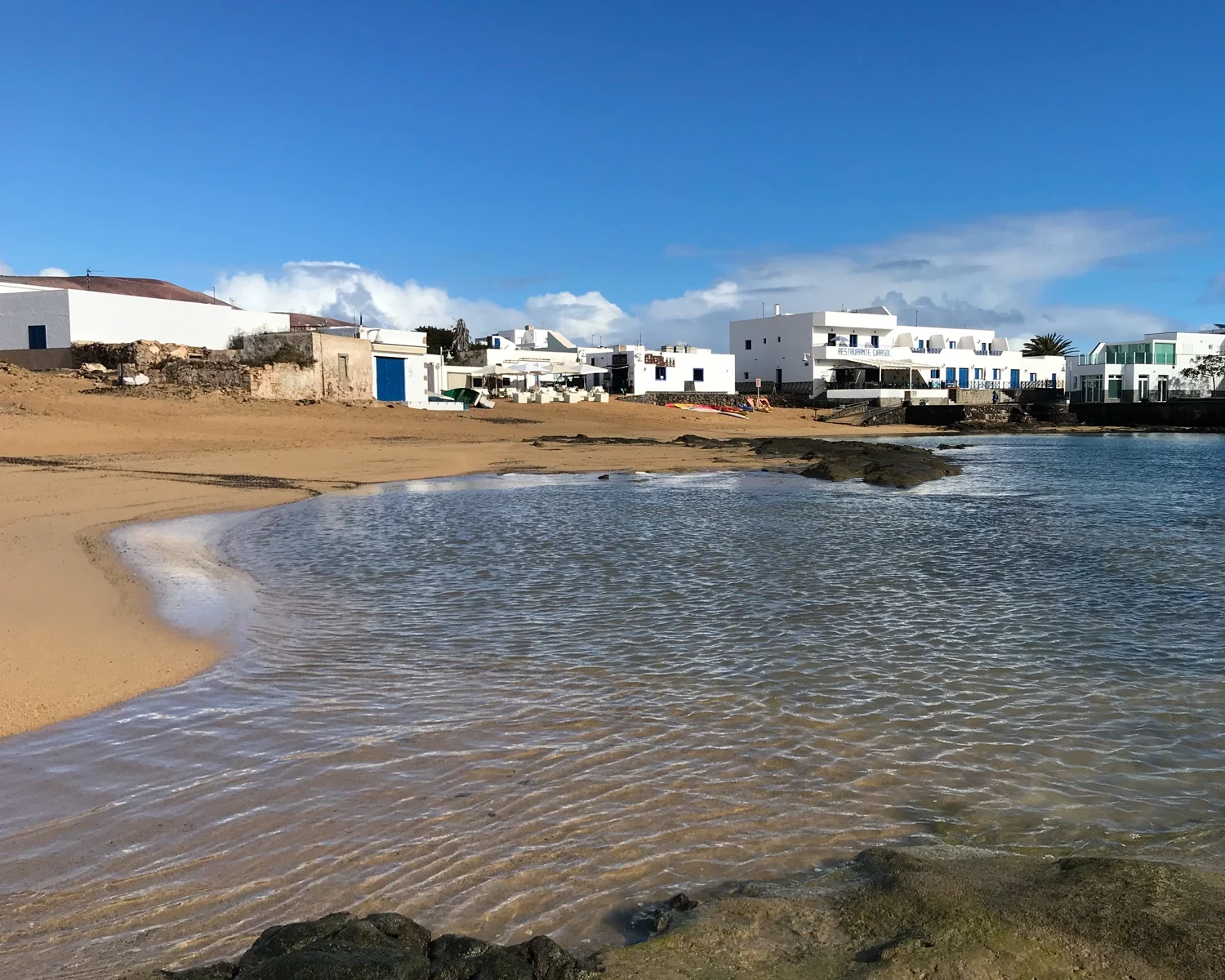
One of the fun things to do in La Graciosa is to rent bikes and cycle through the volcanic landscape to discover golden beaches such as Playa de las Conchas and Playa de la Francesca. There are plenty of cafes and restaurants in Caleta del Sebo where you can eat delicious seafood and admire the views of the ocean and the fishing boats in the harbour. If you love sailing and swimming there are also plenty of sailing trips that will take you to La Graciosa for the day.
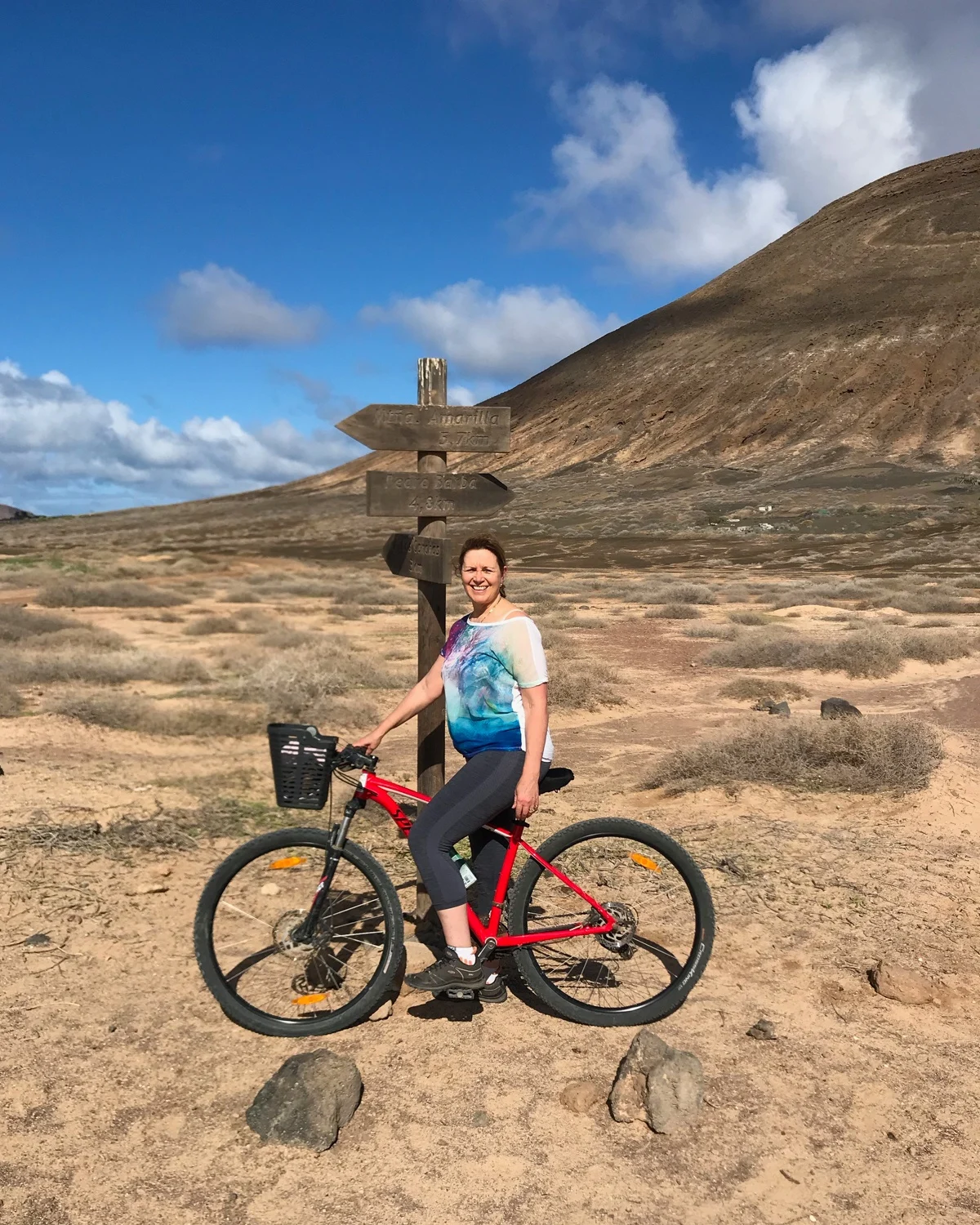
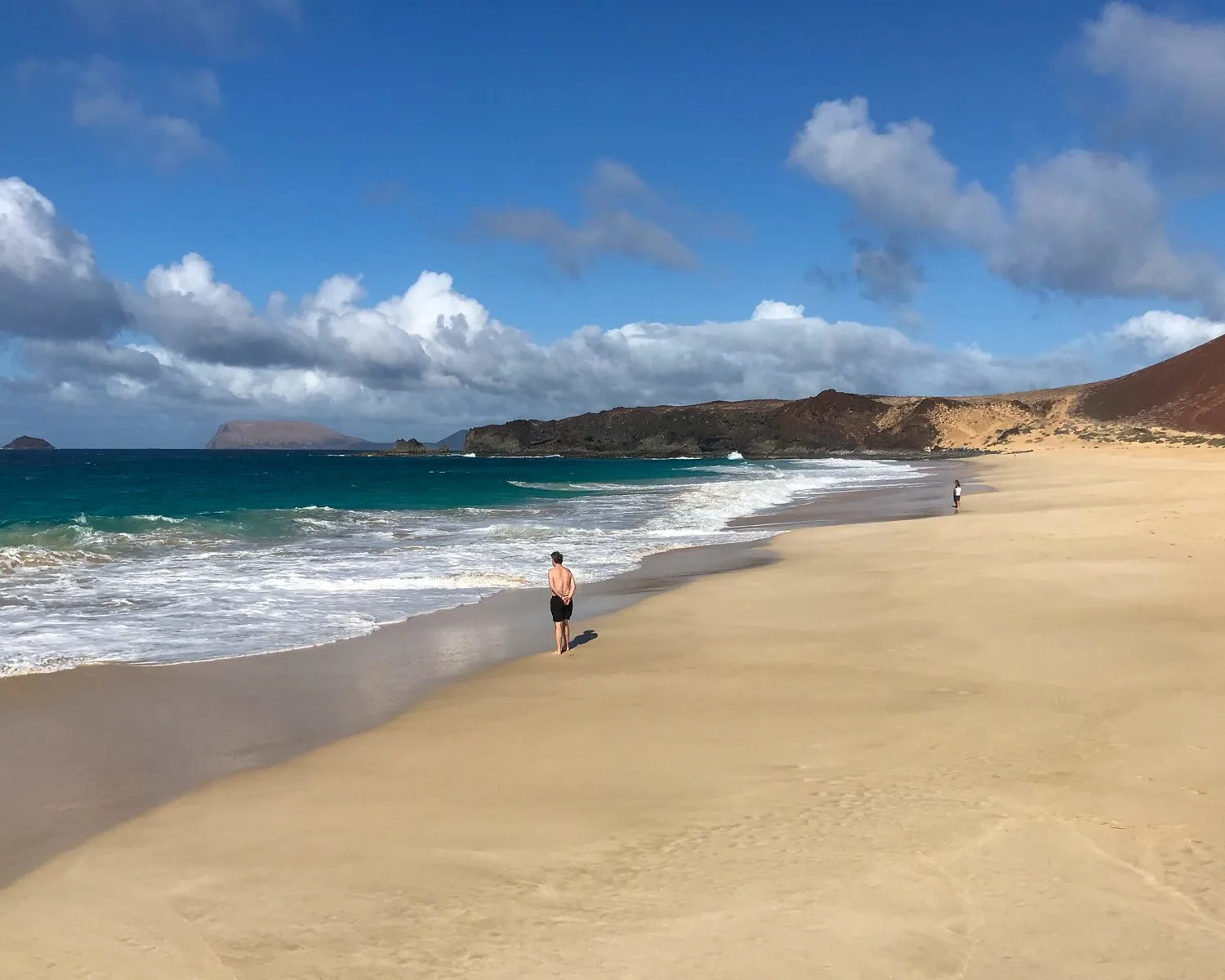
If you prefer, you can also walk the trails to reach the far side of the island or skirt along the south coast for sheltered beaches and swimming. La Graciosa is part of the UNESCO Biosphere reserve made up of the five Chinijo islands and it’s a glorious place to spend a day when the sun is shining .
South Coast – Things to do in Lanzarote
Having covered my top 5 things to do in Lanzarote, let’s take a tour around the rest of the island. We’ll start with the warm and sheltered south coast, home to numerous sandy beaches and the most popular holiday resorts.
7. Puerto del Carmen
Puerto del Carmen is the largest and busiest of the Lanzarote holiday resorts, with sandy beaches and plenty of bars and restaurants. This is where many expats have holiday homes and where you’ll get the typical package holiday experience of sun, sea and relaxation.
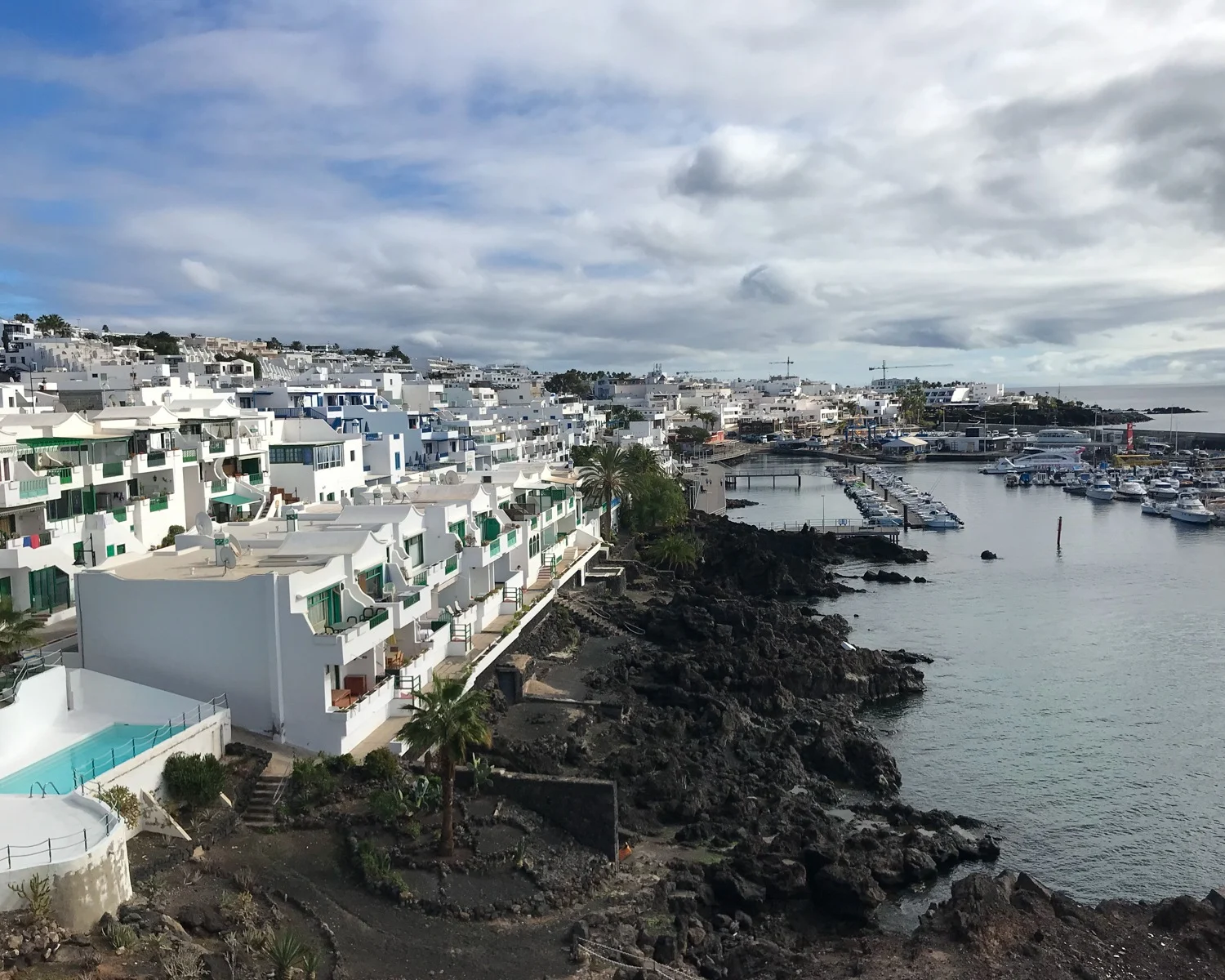
As holiday accommodation is plentiful, Puerto del Carmen is where you are most likely to find a bargain holiday if you are on a budget. Although the resort is a bit busy for my tastes as a place to stay, I enjoyed a wander round and here’s what I’d recommend if you are just visiting;
Explore my La Gomera travel guide – transport, accommodation and things to do
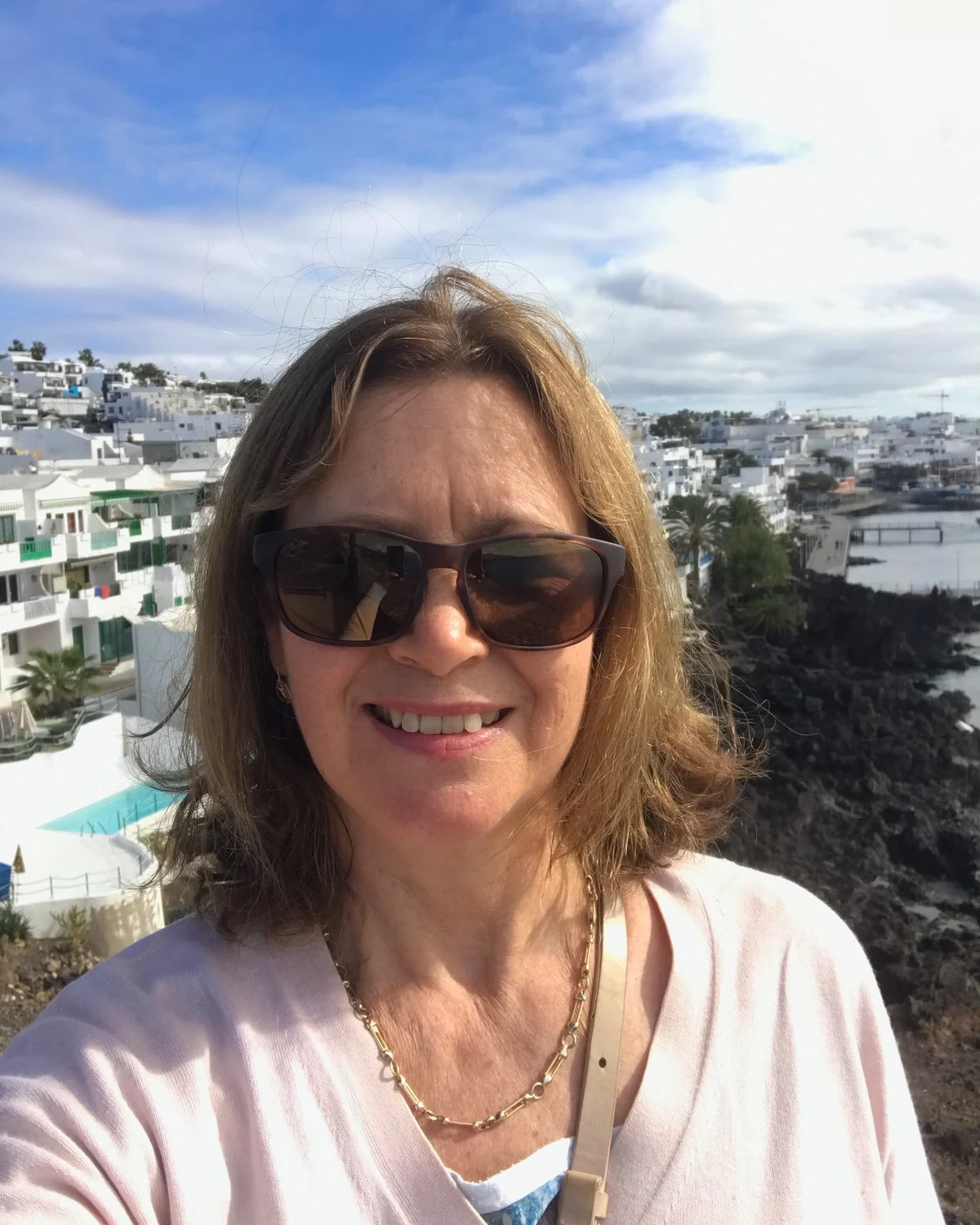
Top things to do in Puerto del Carmen
- Take a stroll from the old town harbour along the boardwalk overlooking the marina.
- If you have time, continue on the coastal walk following the cliffs to Puerto Calero.
- There’s a water bus from the old town harbour of Puerto del Carmen to Puerto Calero with Lineas Romero so you can walk one way and take the water bus on the return.
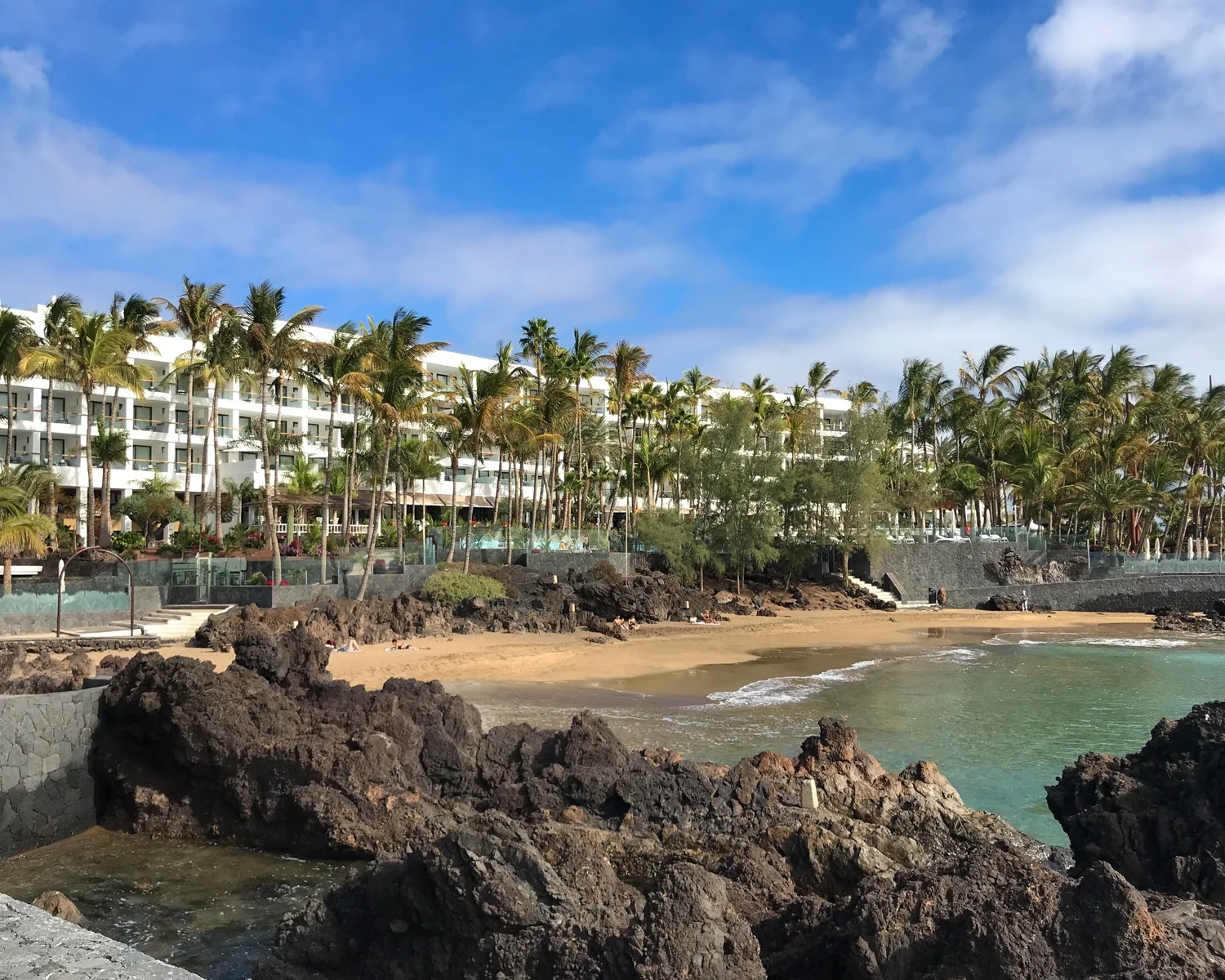
- In the opposite direction you can relax or swim from the beaches of Playa Chica and the long stretch of golden sand at Playa Blanca.
- Diving schools operate from Playa Chica, which is a small beach bounded by rocks, so it’s a good place for beginners to learn to dive.
- There are plenty of bars, restaurants and coffee shops on the strip that backs Playa Blanca as well as in other parts of the resort.
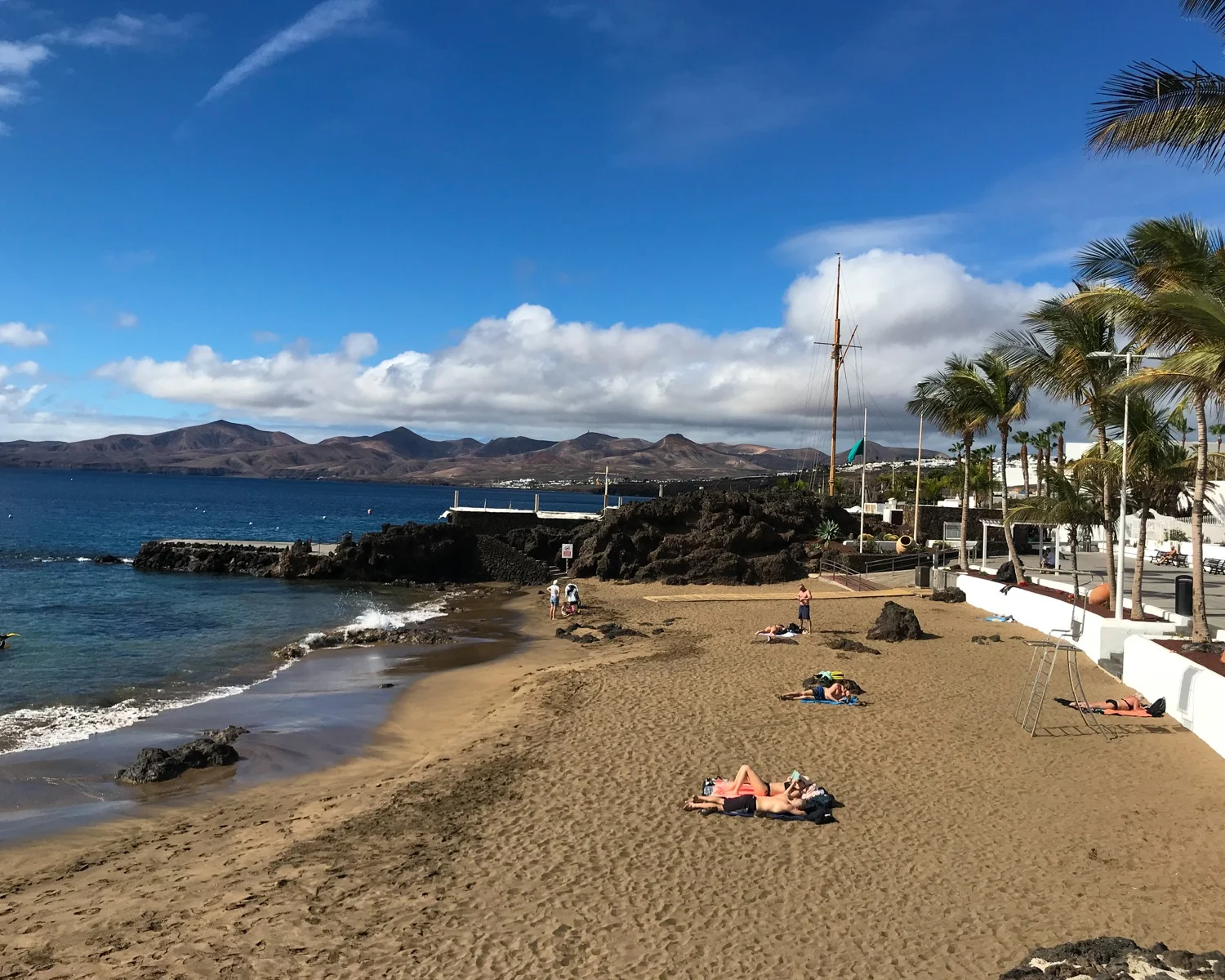
8. Puerto Calero
A little further along the coast from Puerto del Carmen is Puerto Calero, which is not so much a beach resort as a marina that’s oozing with style and money. There is some holiday accommodation but it’s mostly private apartments and villas rather than hotels, and the whole place is a lot smaller than Puerto del Carmen.
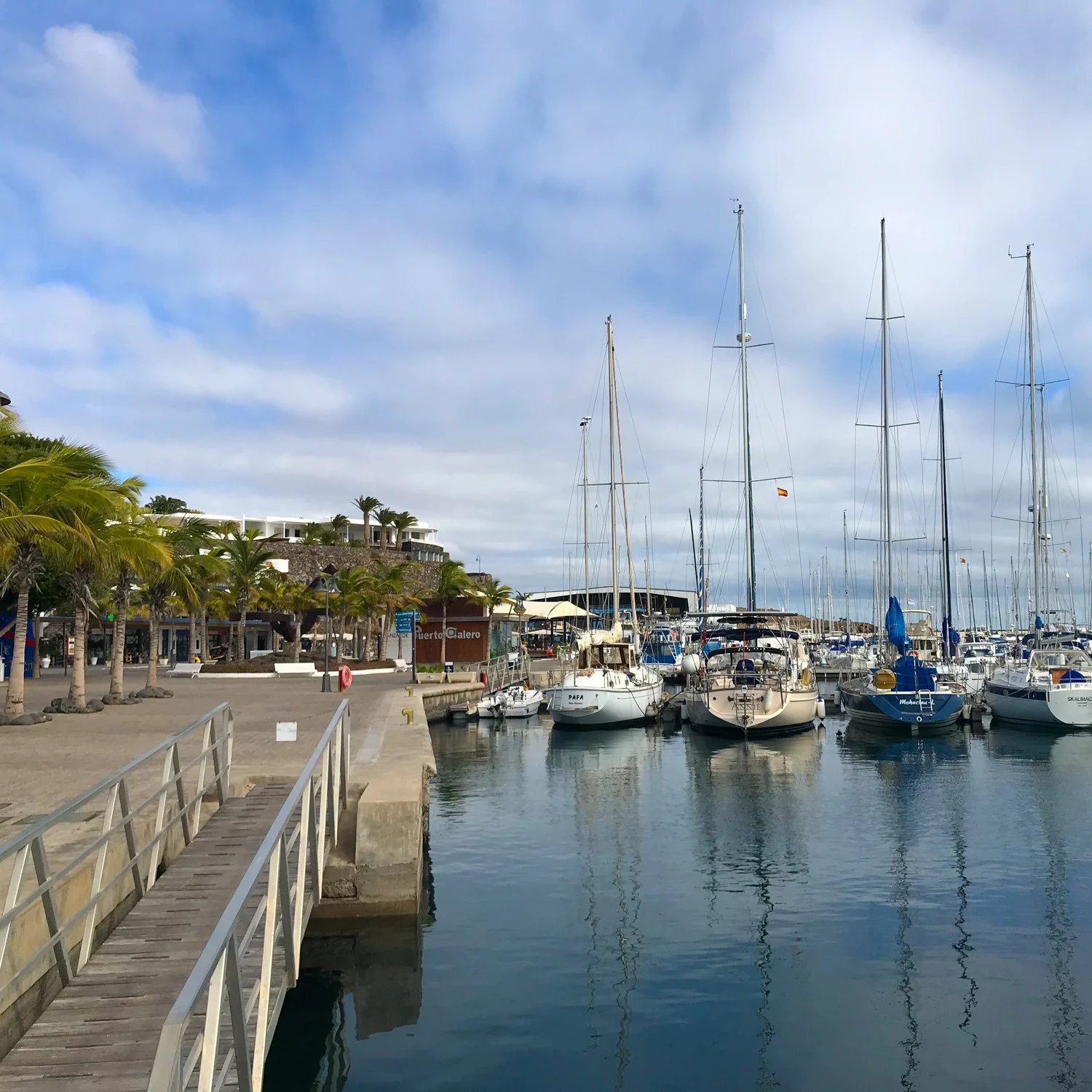
I popped in here for a walk around and thought it was a great place to stop for lunch or dinner at one of the restaurants around the marina. Sadly there’s no beach for swimming, but Puerto Calero will appeal to anyone who enjoys sailing and watching the yachts in the harbour. If you have a taste for designer shopping there’s also a small arcade of upscale clothes shops, with a few more gift stores set back from the marina.
This is also the base for sailing trips along the coast, or you can take the water bus to and from Puerto del Carmen as an alternative to the coastal path.
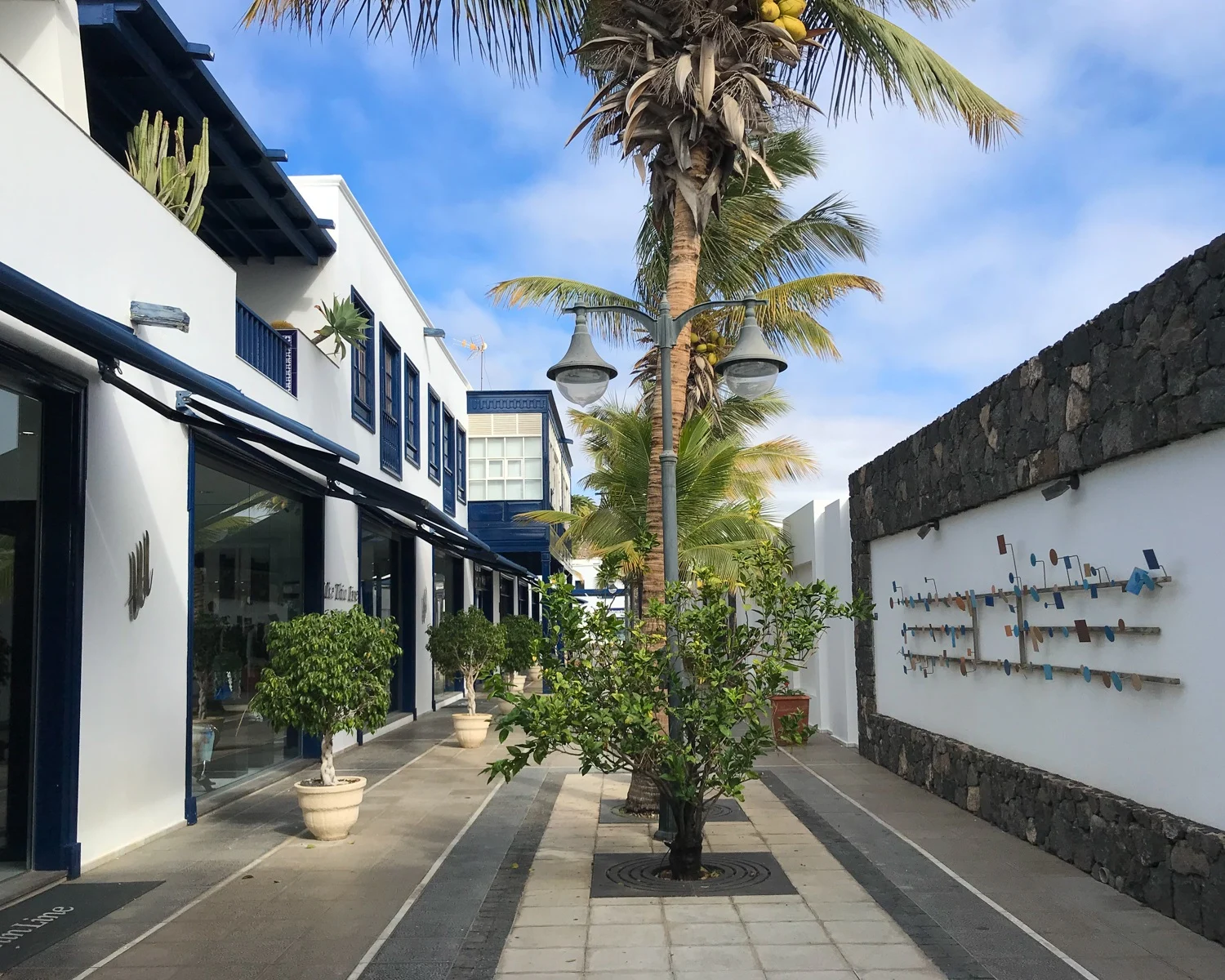
Want to learn more about nearby Tenerife? Explore 20 of! the best things to do in Santa Cruz de Tenerife
9. Arrecife – capital of Lanzarote
As the capital of Lanzarote since the 19th century, Arrecife has more of a working town feel than a holiday vibe. It’s the administrative and commercial centre of the island, with the bustle of locals going about their business. To get a feel for local life I’d recommend spending a few hours here, to wander around the old quarter and see some of the cultural attractions. Here are my top picks for things to do in Arrecife.
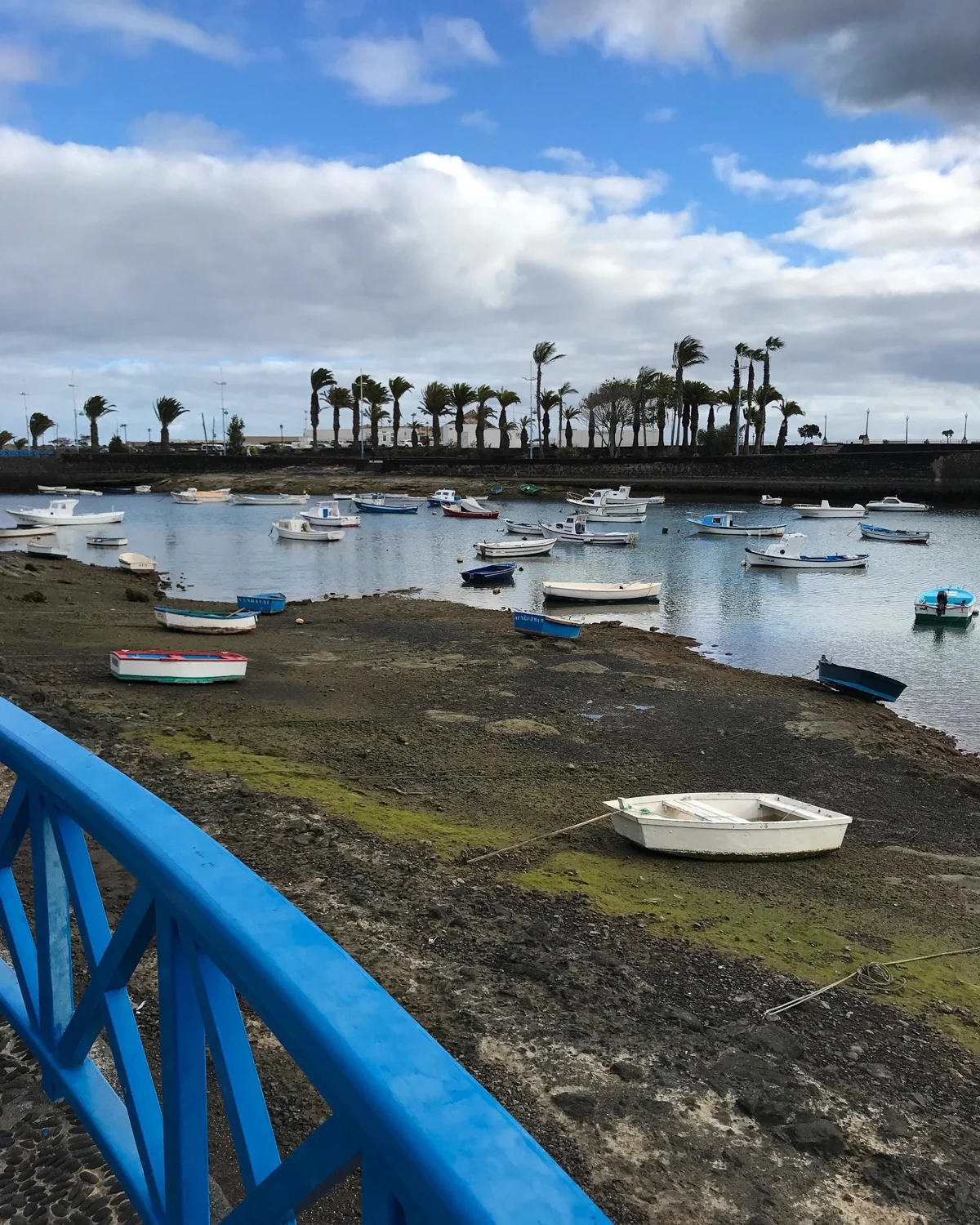
- We started with a wander around the Charco San Gines, an enclosed lagoon full of small fishing boats and leisure crafts that’s lined with cafes and restaurants.
- Our walk continued through the streets of the old quarter, past the old church of San Gines in a pretty square and the enclosed market or Ayuntamiento de Arrecife.
- On one of the main pedestrian streets leading to the seafront we stopped at La Casa Amarilla, which was originally the government headquarters. The elegant old building is now used as a cultural centre with changing exhibitions about life on Lanzarote.
- Reaching the seafront, we crossed the old stone bridge to visit the Castillo de San Gabriel, a small fortress that has been made into a museum about the history of Arrecife.
- Nearby on the seafront is the Casa de la Cultura, an art museum which has some original murals and artworks by local artist Cesar Manrique.
- Further along the seafront is the UNED library belonging to the university which has some original Cesar Manrique murals. It’s not generally open to the public but if things are quiet they may let you in to take a look.
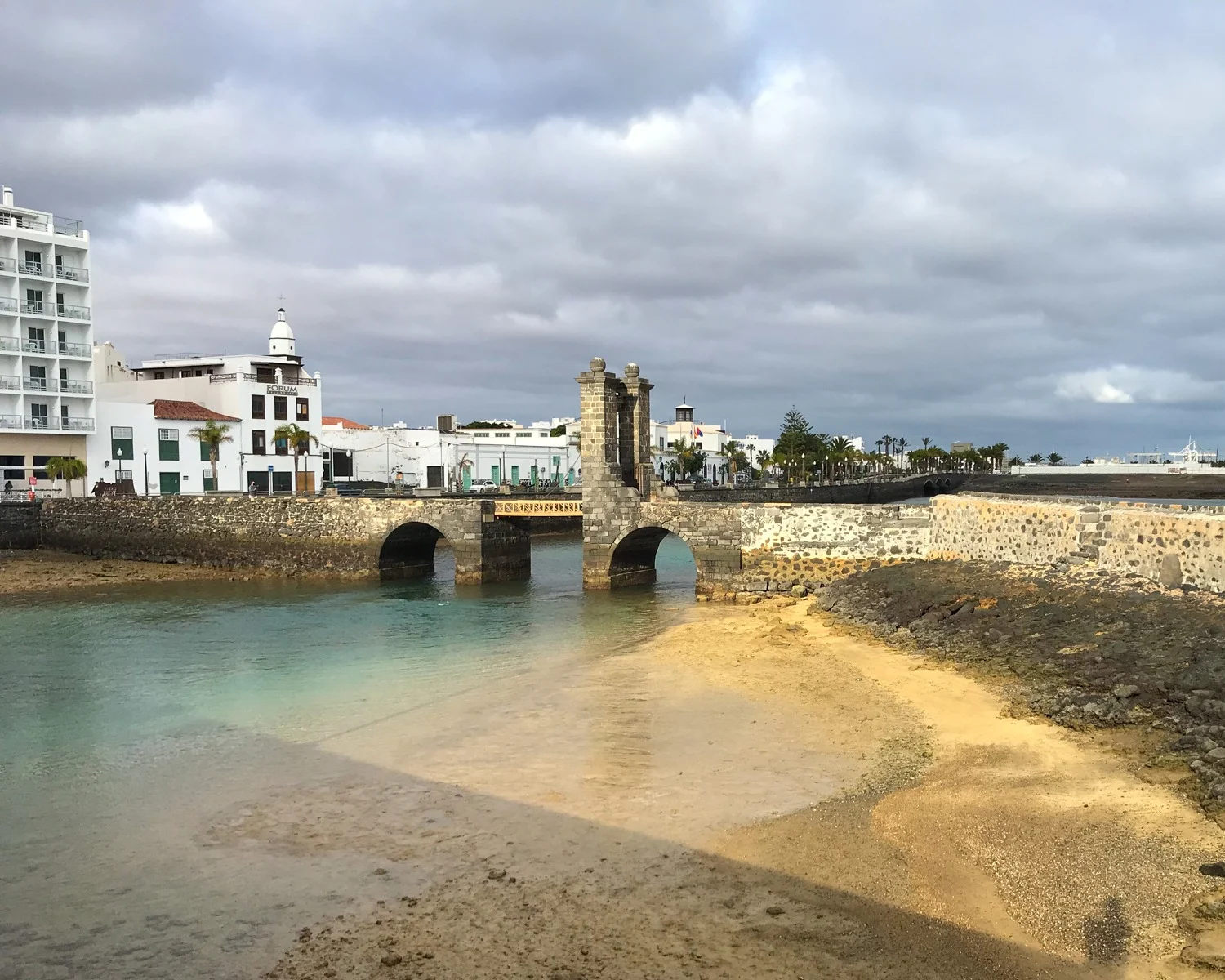
Castillo de San José in Lanzarote
On the outskirts of Arrecife we visited Castillo de San José, a stone fortress guarding the harbour that was built in the 18th century. It now houses the International Contemporary Art Museum which was founded by Cesar Manrique, opening in 1976 to house a collection of contemporary art with leading local artists, including a few of Manrique’s own paintings.
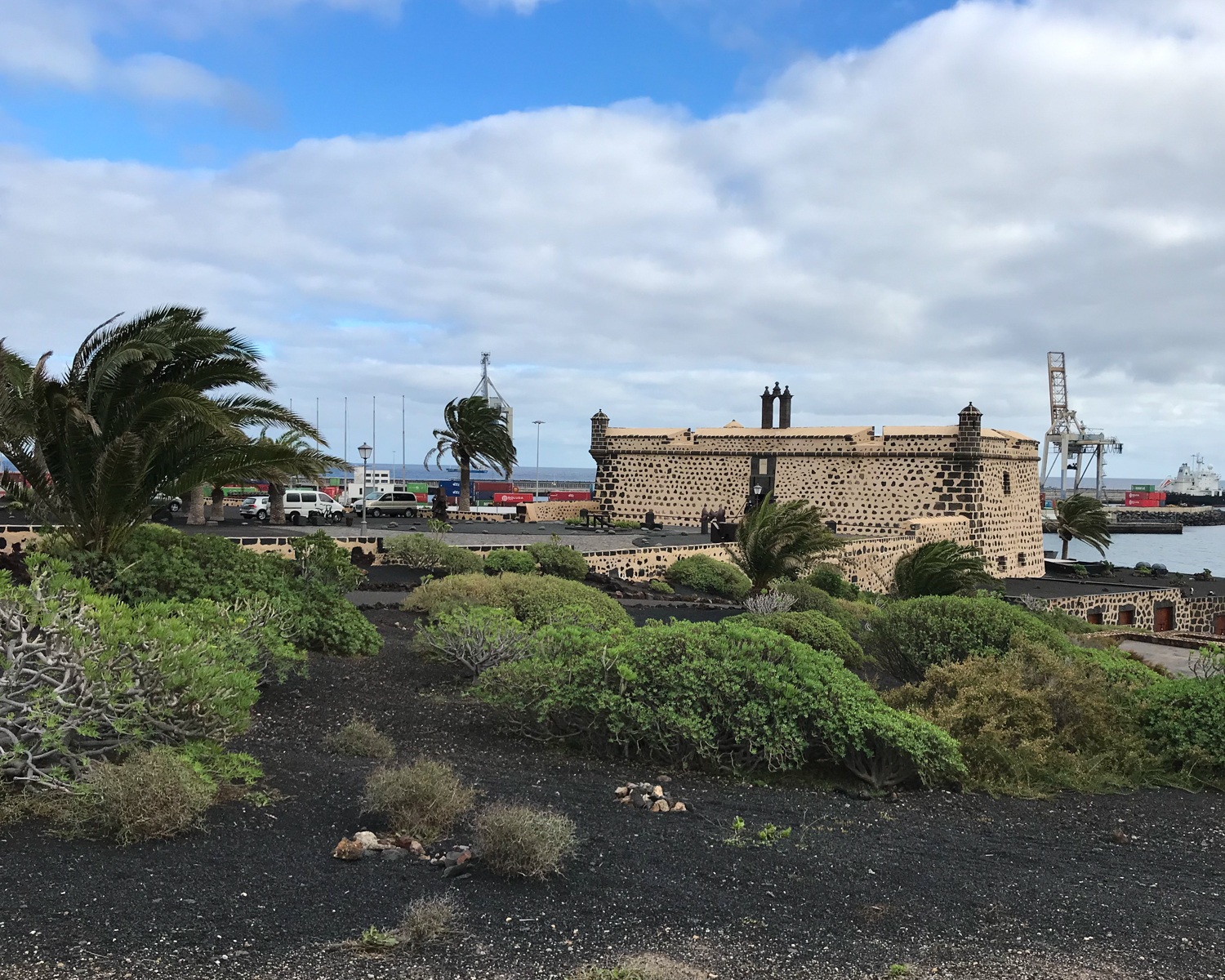
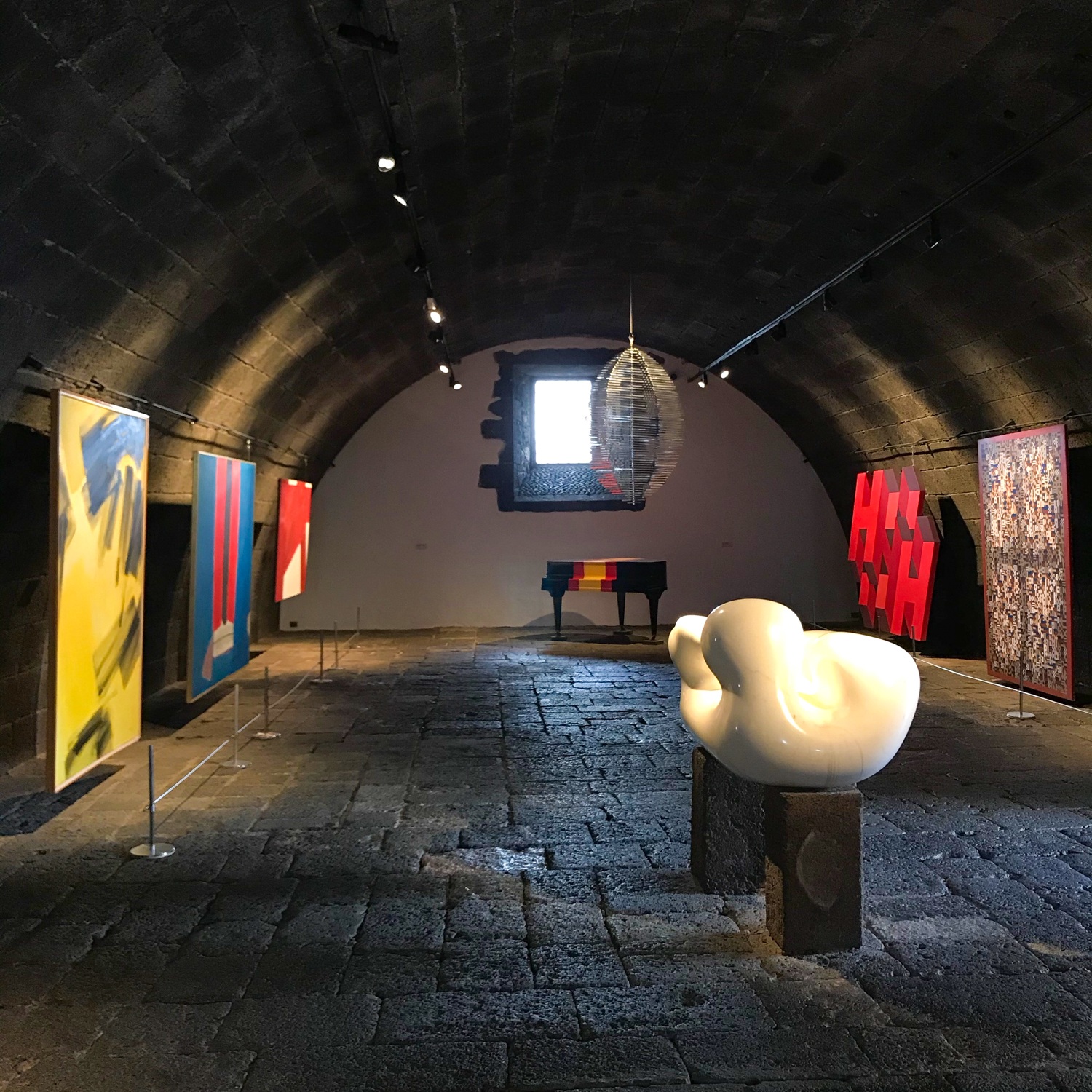
South-West coast – things to do in Lanzarote
The south west coast of Lanzarote is the most sheltered part of the island, home to the glorious beaches around Playa Papagayo that I’ve already mentioned in my top 5 things to do. The main holiday resort here is Playa Blanca, with the swanky Marina Rubicon and from here the road skirts north along the coast with several interesting places to stop.
10. Marina Rubicon
The resort of Playa Blanca is full of holiday apartments and hotels with some pleasant beaches and a strip of shops and restaurants. On the edge of the resort Marina Rubicon is worth a stop, if you enjoy looking at at beautiful yachts and hanging out with the sailing community.
Like many marinas this tends to be a magnet for the stylish crowd, with bars, restaurants and upmarket shopping clustered around the harbour. There’s also an artisan market held at Marina Rubicon on Wednesday and Saturday with a range of local crafts and produce.
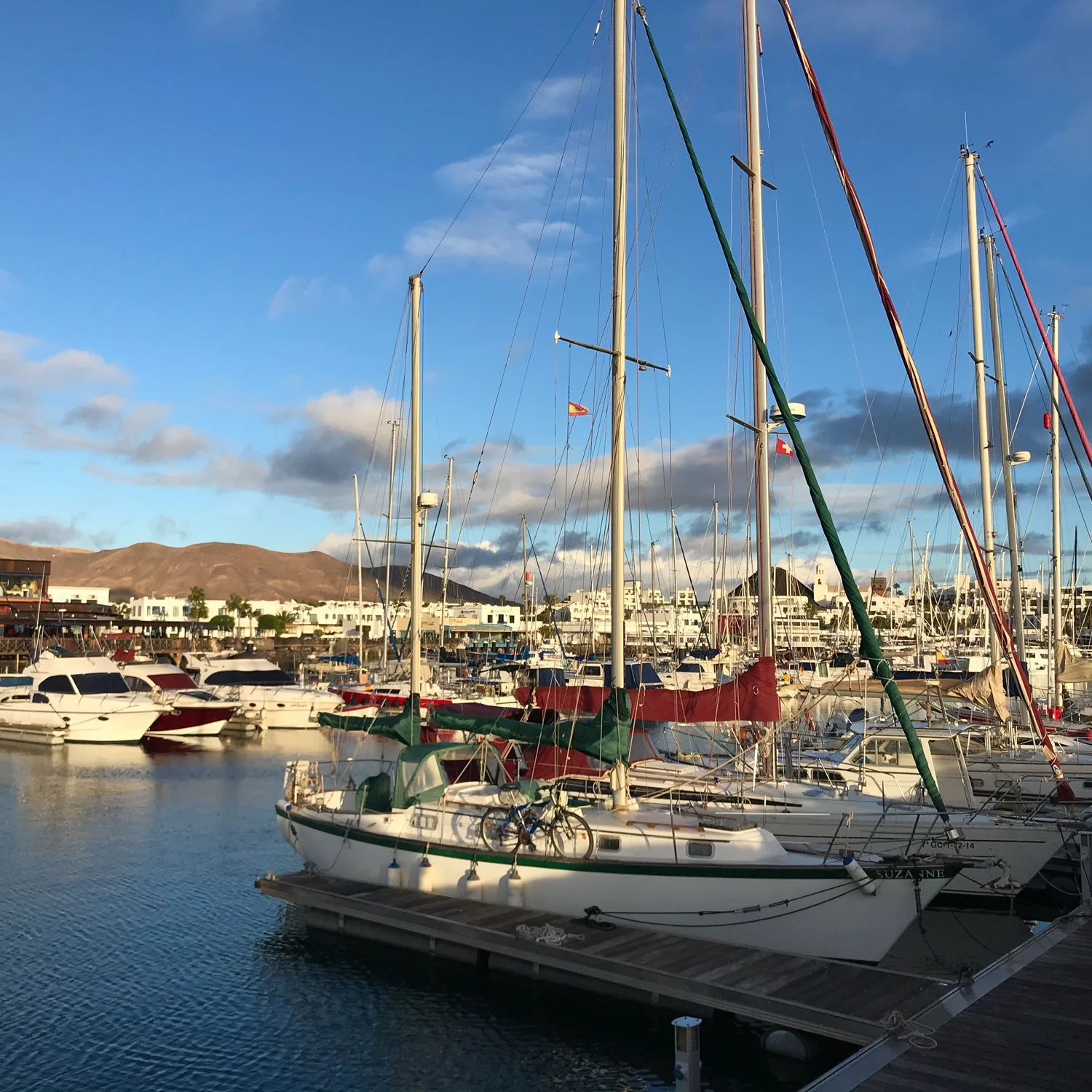
11. Lanzarote Underwater Museum
Just off the coast from Marina Rubicon is the Lanzarote underwater museum, also known as Museo Atlántico which is an underwater sculpture park. Divers will enjoy swimming around the cement figures which are 12 metres deep, created by artist Jason deCaires Taylor.
Dive tours are arranged from Playa Blanca and even if you don’t have a licence, you can take the beginner’s diving package which involves some basic training and then a dive with an instructor. Museo Atlántico has ten different groups of underwater figures which form a natural reef including the famous Raft of Lampedusa, a reference to the refugee crisis in Europe.
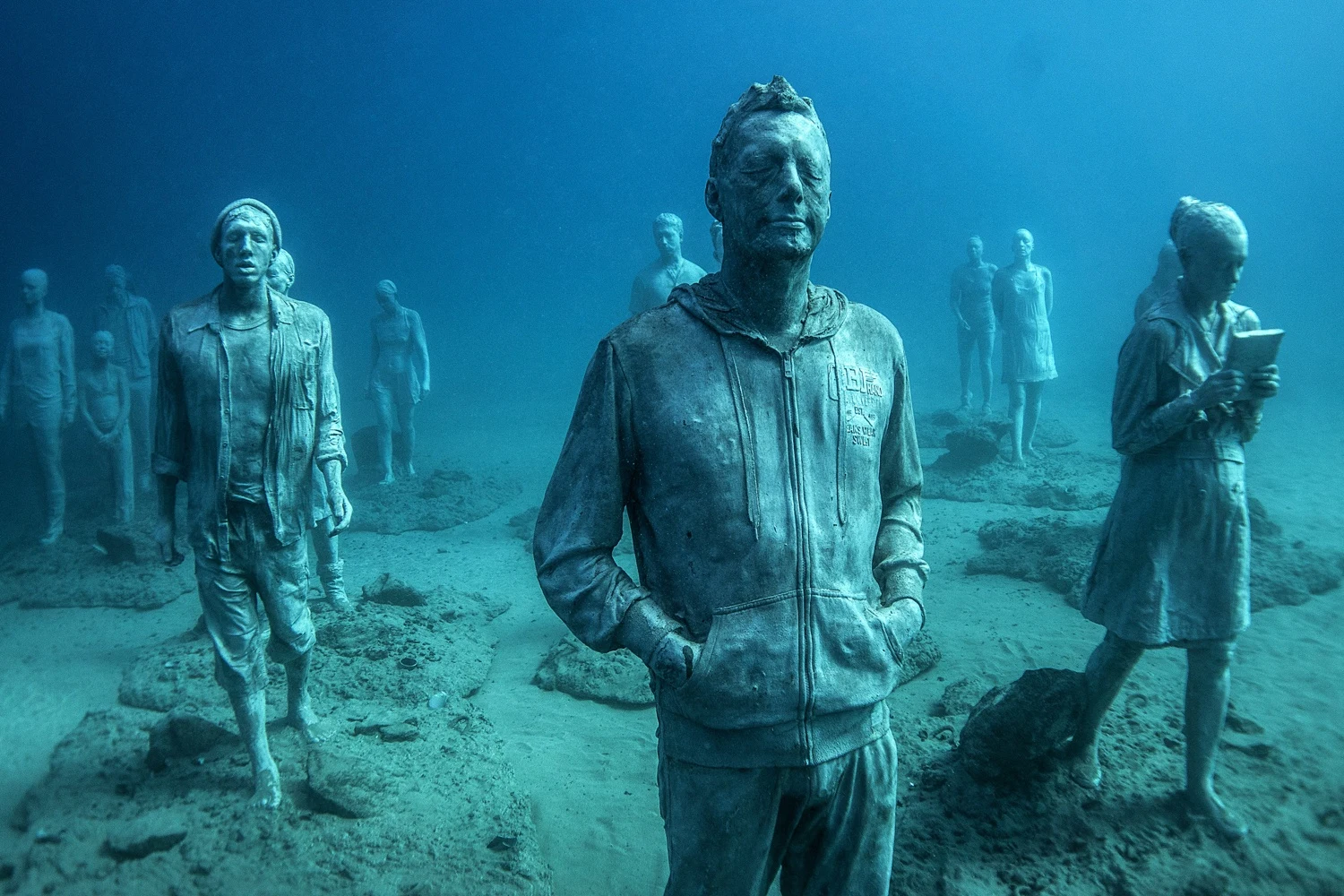
12. Las Salinas de Janubio
Follow the road north from Playa Blanca (along smaller LZ-701 road that runs parallel to the newer LZ-2) and you’ll arrive at Las Salinas de Janubio. This patchwork of salt flats makes a pretty photo at sunset and the Mirador de las Salinas restaurant is a good place to stop for lunch with a view.
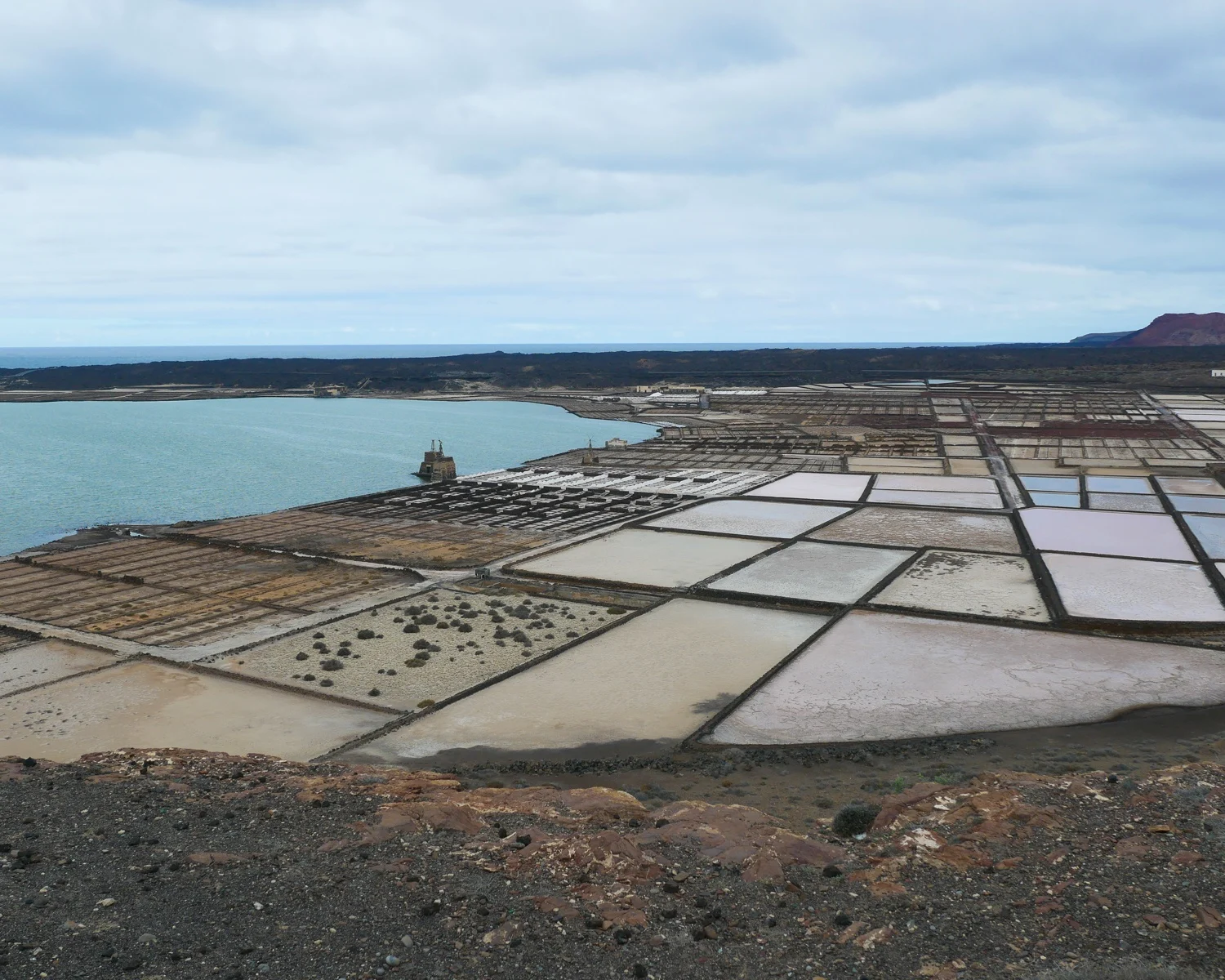
In the past much of the coastline was covered with salt pans, to harvest sea salt that was used to preserve food in the days before refrigeration. Tours are also available of the salt pans run by the Salinas de Janubio on weekdays – check the website for times.
If you continue your drive around the coast, there’s a car park on the headland with access to the black volcanic sand beach of Playa de Janubio.
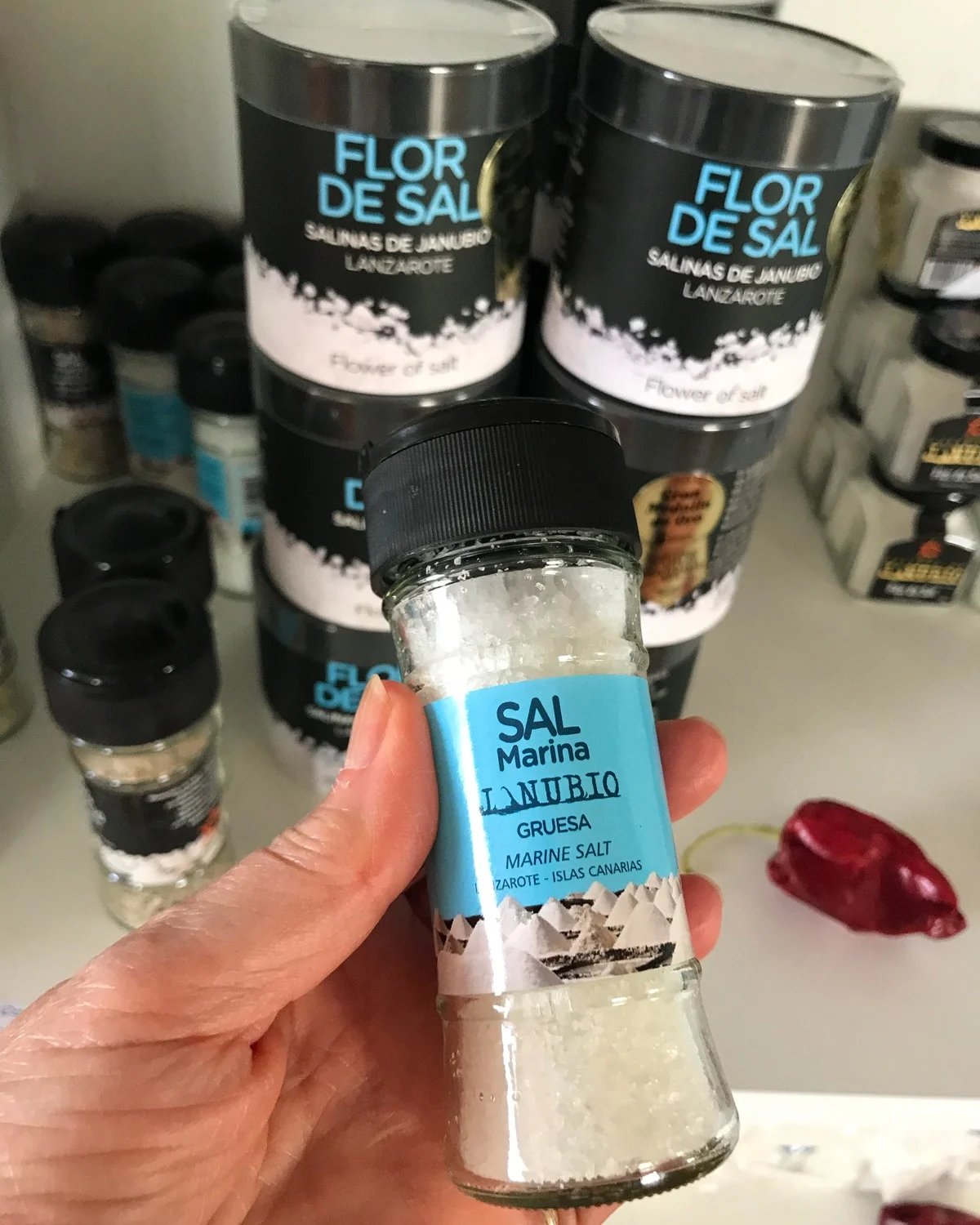
13. Los Hervideros
Continuing on the coast road brings you to Los Hervideros where the waves crash against the cliffs and bubble up through blowholes and lava tunnels. The name Los Hervideros literally means “boiling pots”, since the sea here washes in and out of the caves, churning and throwing up spray.
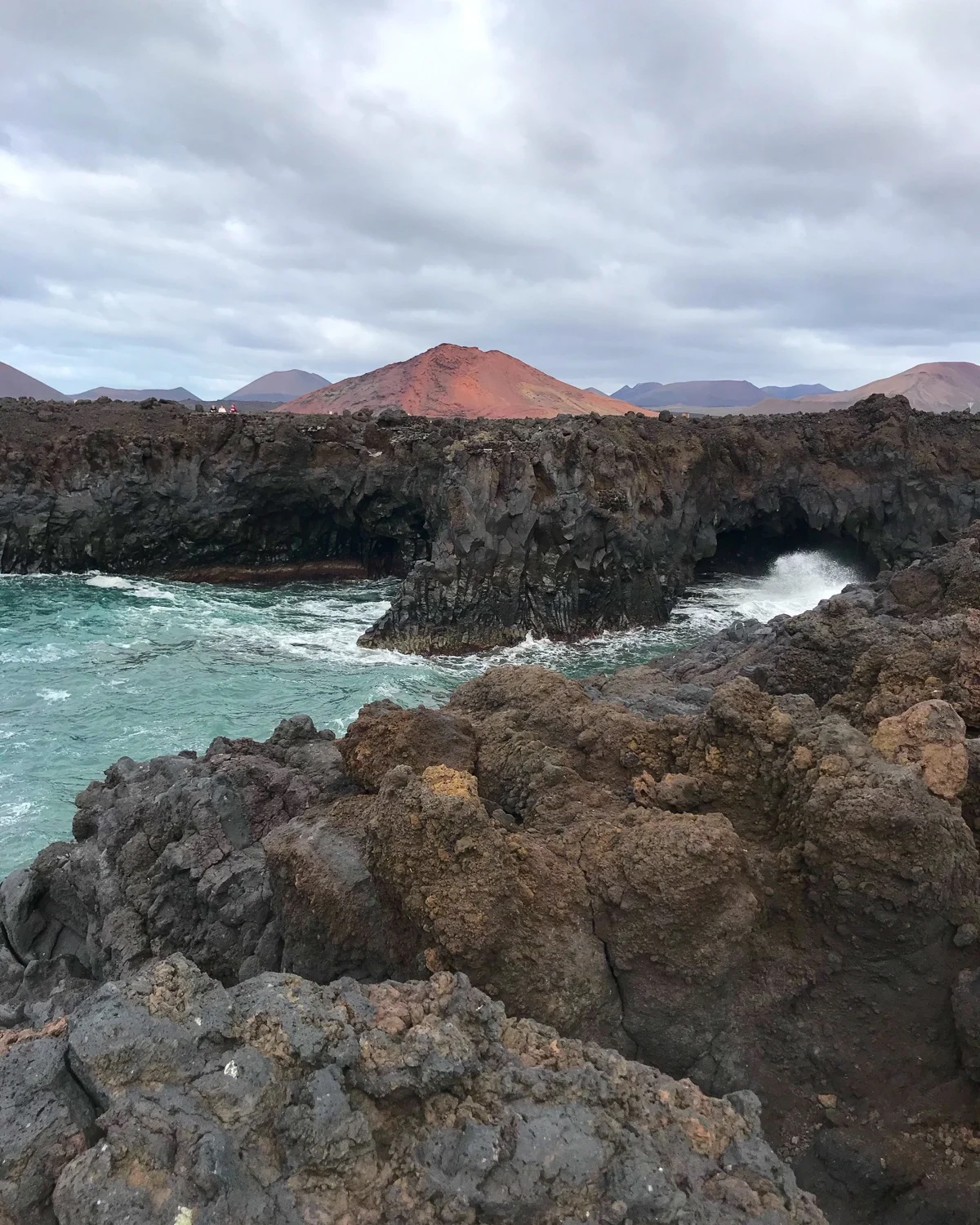
Follow the path from the car park to find balconies and viewpoints where you can feel the power of the Atlantic waves and look down into the blowholes and foaming water.
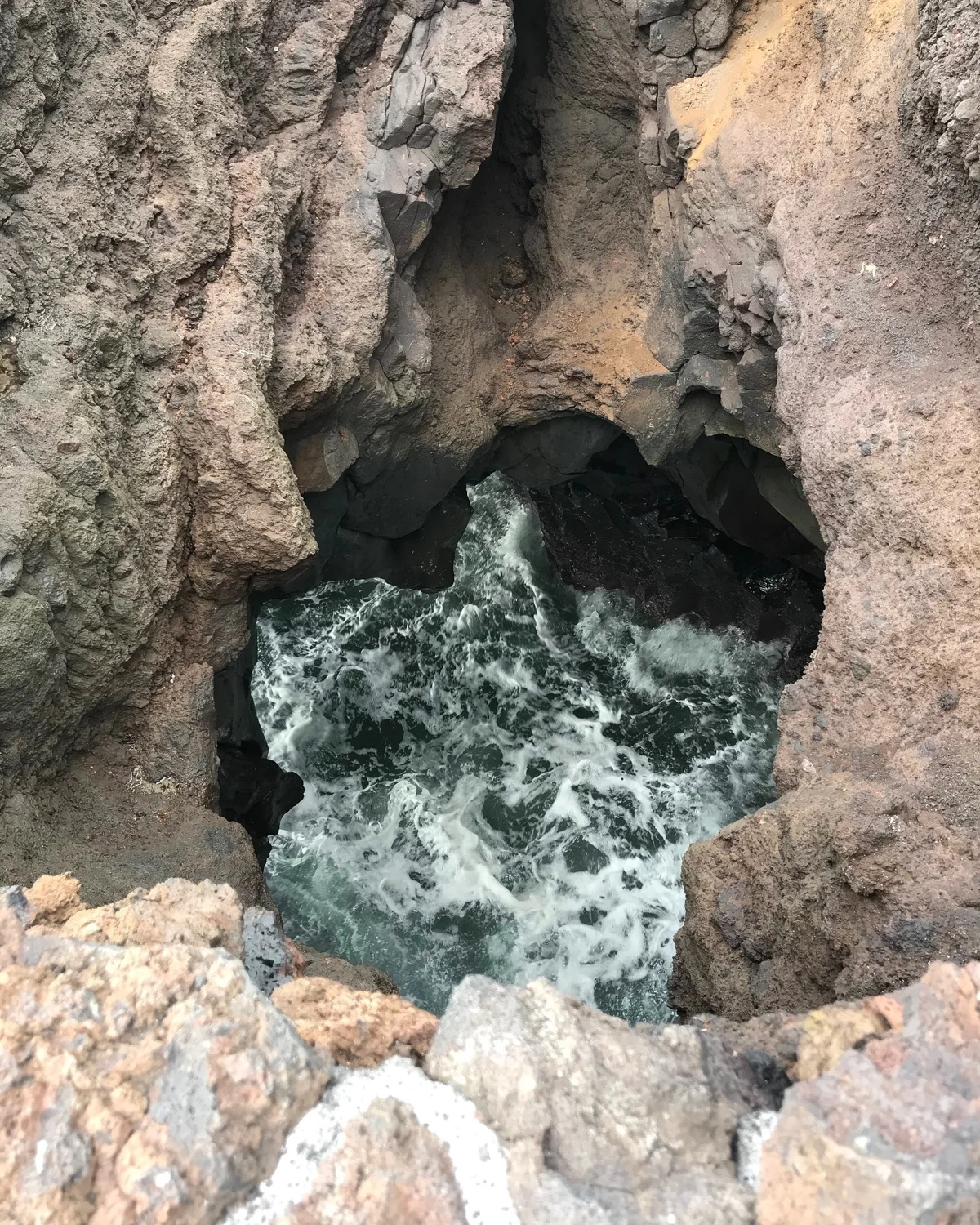
14. Charco de los clicos
Nearby, on the southern edge of the village of El Golfo is the curious green lagoon known as Charco de los Clicos, glowing in the sun like an emerald against the black sand. You can reach it easily in a short walk from the carpark to a viewpoint where you can look down on this green lagoon or “Lago Verde” and the black sand beach.
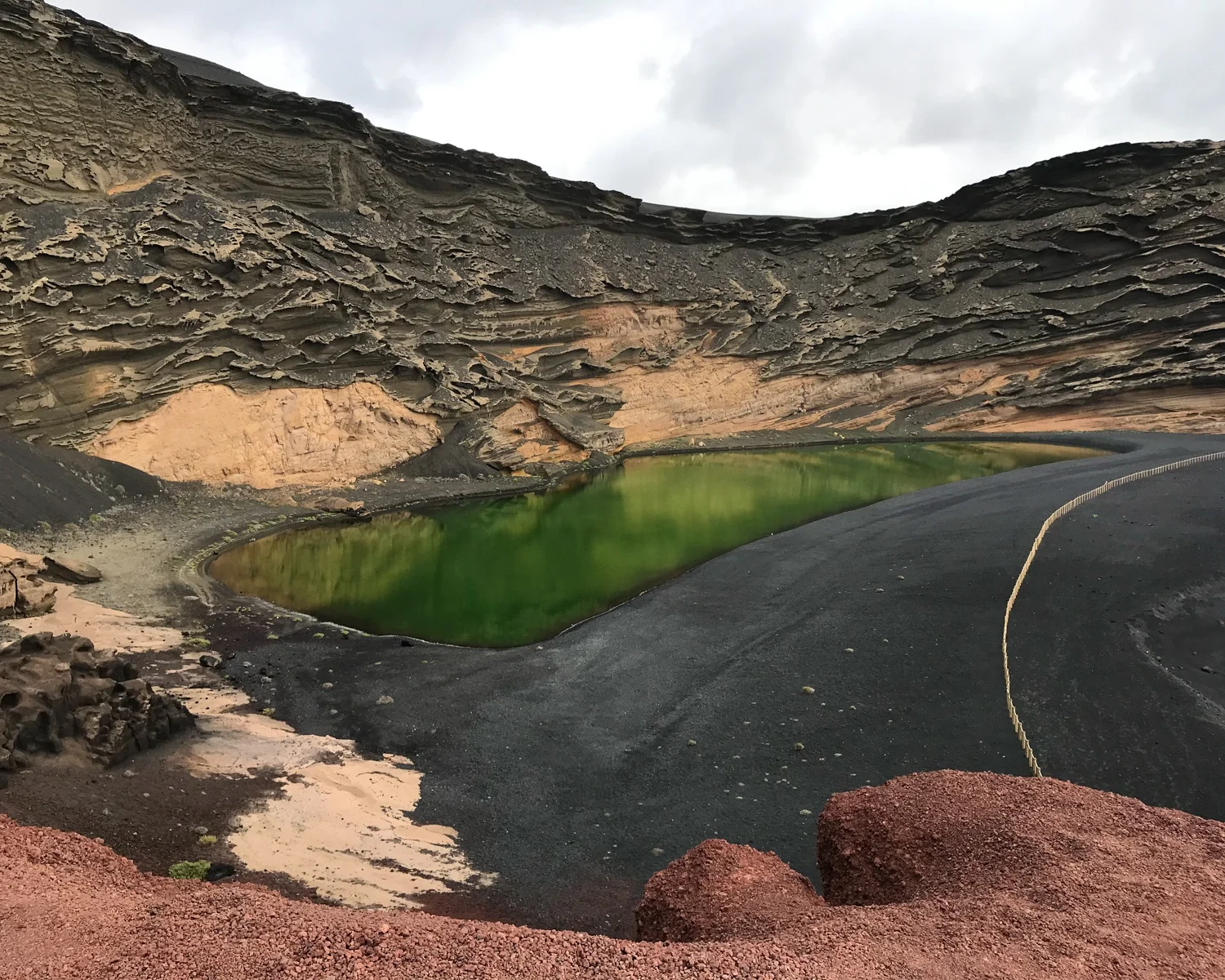
The green colour comes from the algae that live in the water and this area is protected as a nature reserve, with no swimming in the lagoon allowed. A path also leads down to the black sand beach where blue fishing boats are left on the shore, making a pretty picture. If you don’t have a car, this full day tour of Lanzarote includes a stop at Lago Verde and El Golfo.
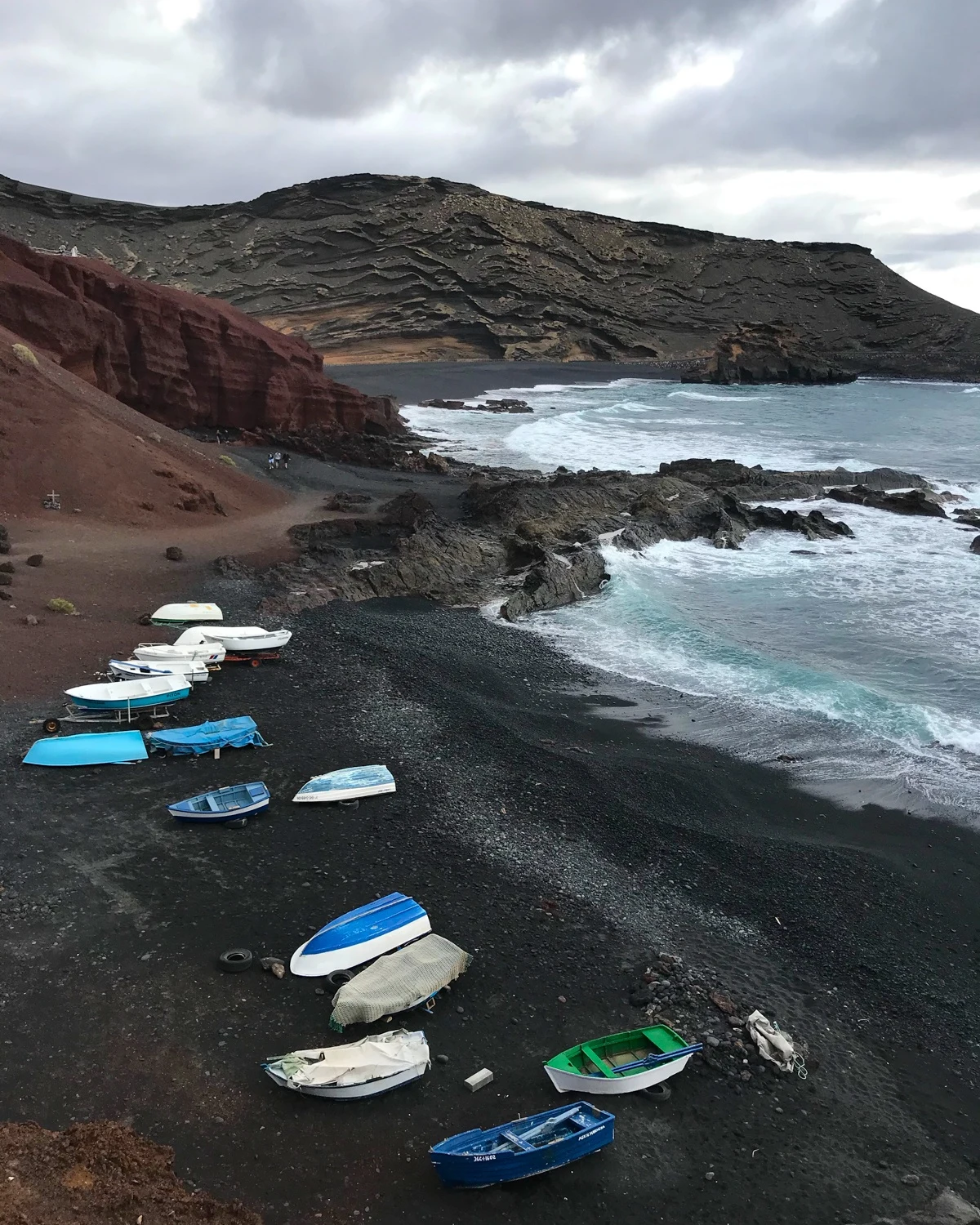
15. El Golfo
After visiting Lago Verde, walk into the village of El Golfo, a quiet fishing village with white houses, that’s known for its seafood restaurants. I can recommend settling down for lunch on one of the restaurant terraces, with a view of the Atlantic waves breaking against the jagged black rocks.
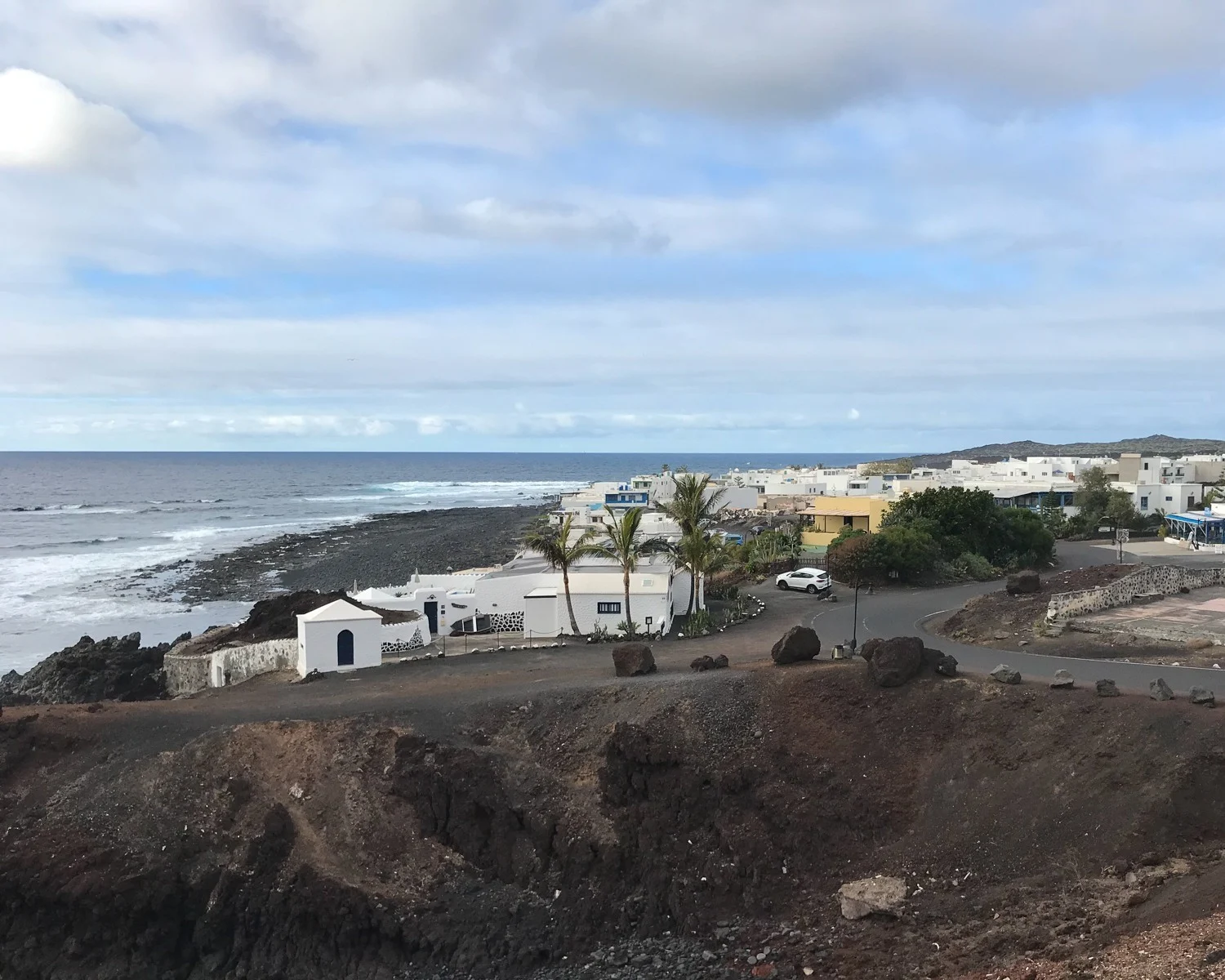
From the car park at the furthest end of the village is a coastal path from El Golfo to Playa El Paso, which runs along the rugged coast on the edge of the Timanfaya lava field.
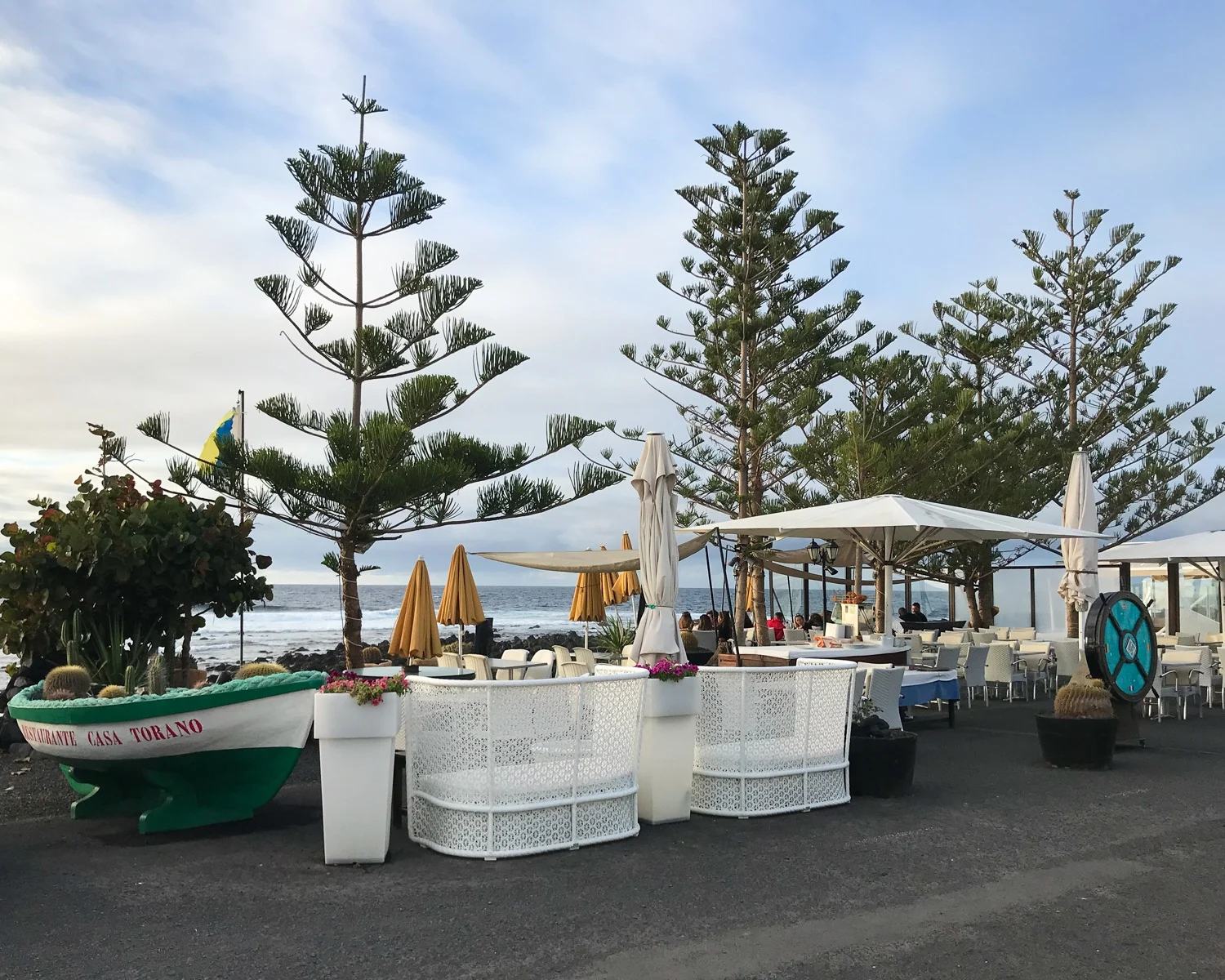
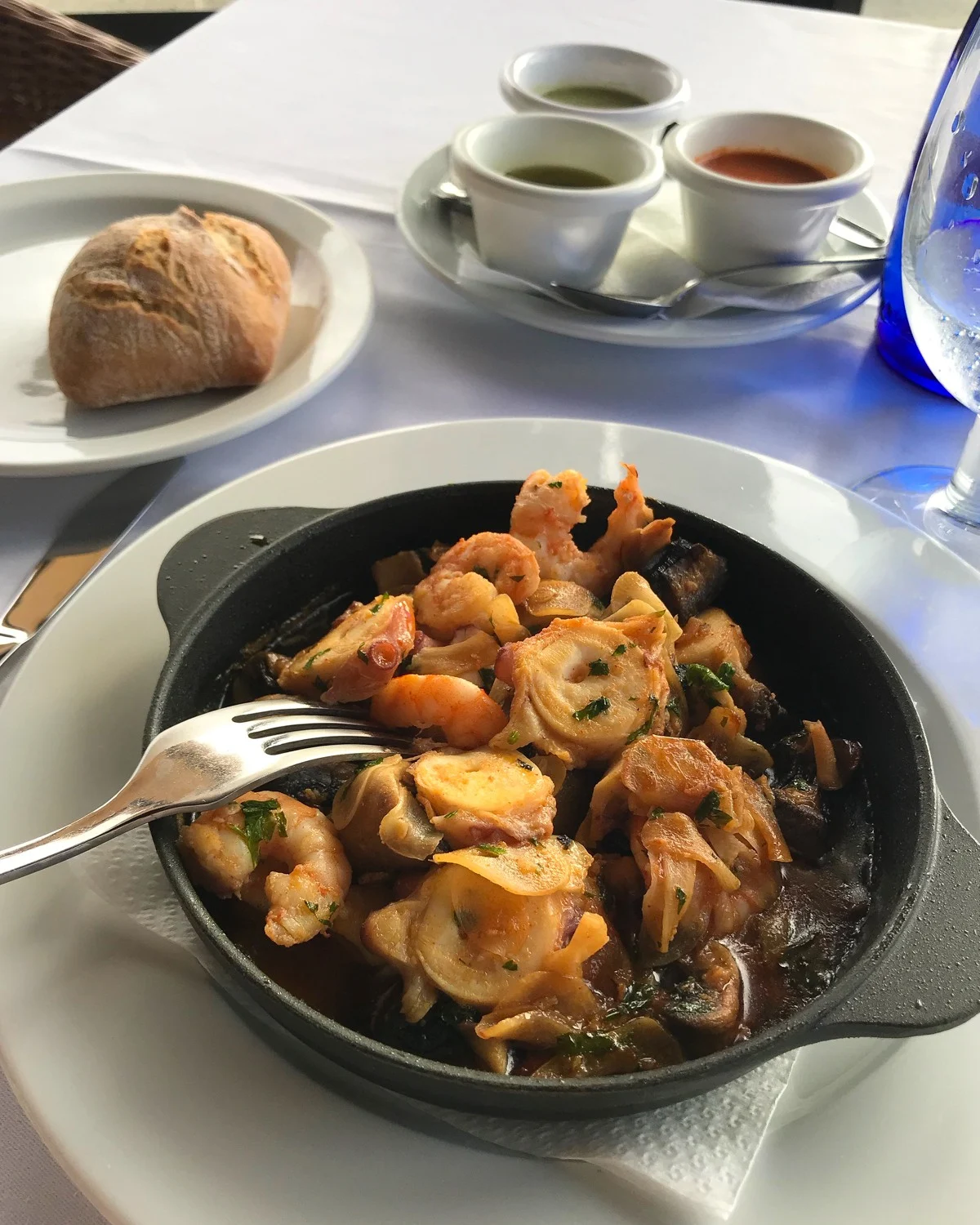
Central region – things to do in Lanzarote
The central part of Lanzarote was once fertile farmland, although much of it was covered by the lava flow and ash from volcanic eruptions in the 1730s. I’ve already mentioned the Timanfaya National Park and the La Geria wine region in my list of the top 5 things to do in Lanzarote but there are several other places that are well worth a stop.
Where to stay in Lanzarote
We stayed in the centre of Lanzarote at Finca Malvasia – boutique rural accommodation in the heart of the La Geria wine region, set among a working vineyard. The stylish cottages converted from the old winery are furnished in contemporary style, around a turquoise Cesar Manrique style swimming pool. Read my review of Finca Malvasia here.
In the north of Lanzarote we stayed at the delightful Finca de Arrieta with Lanzarote Retreats – a small eco-village on the northern coast at Arrieta which has a number of different villas, stone lodges and yurts with a relaxed and friendly vibe, that are ideal for independent travellers. Read my review of Finca de Arrieta here.
For more places to stay check out these Lanzarote hotels.
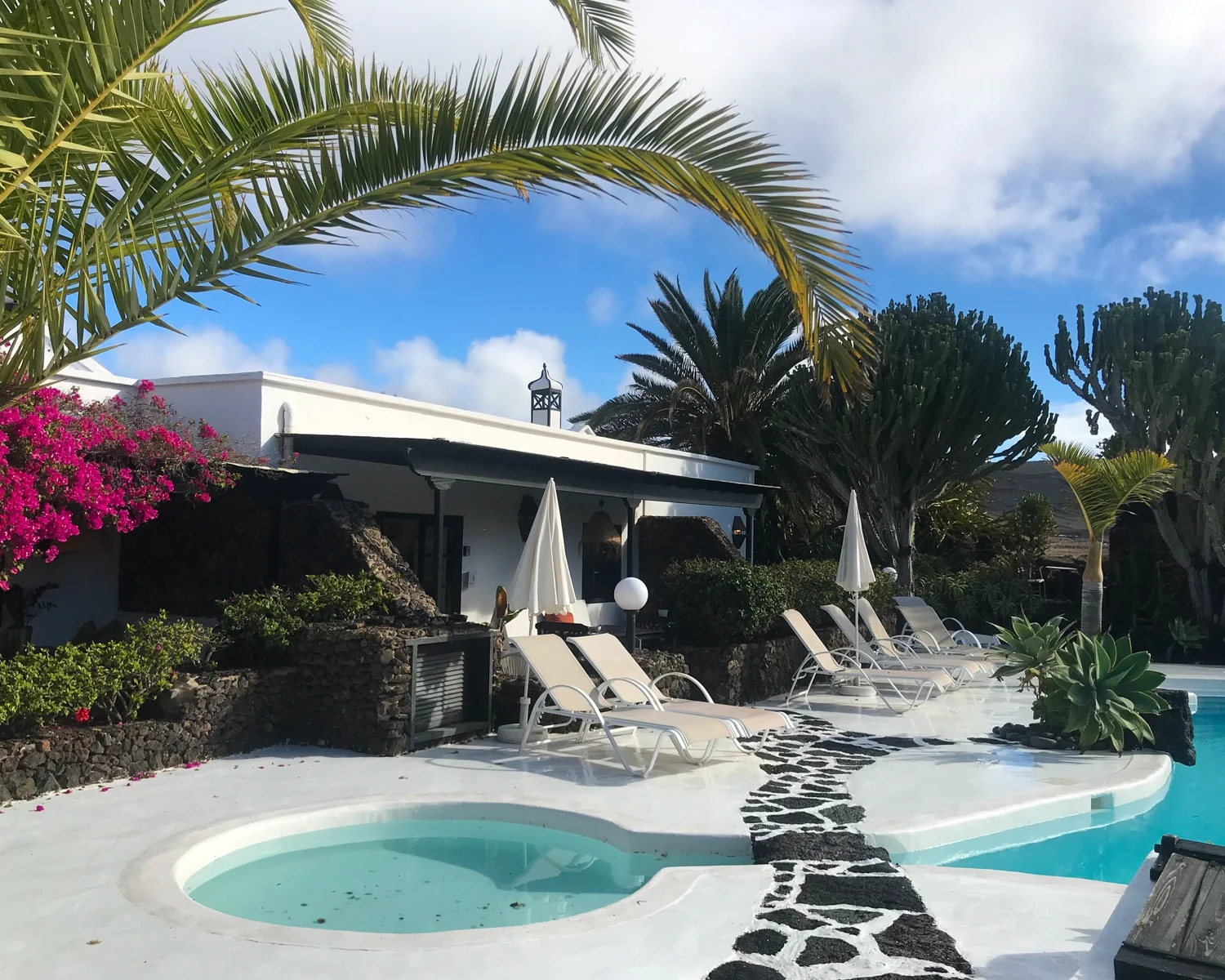
16. Museo-Casa del Campesino
The Museo – Casa del Campesino is one of the sustainable tourism initiatives founded by artist Cesar Manrique and is dedicated to the farmers and artisans of Lanzarote. The traditional finca or farmstead hosts craft shops and workshops set around the courtyard, with an excellent restaurant serving local dishes.
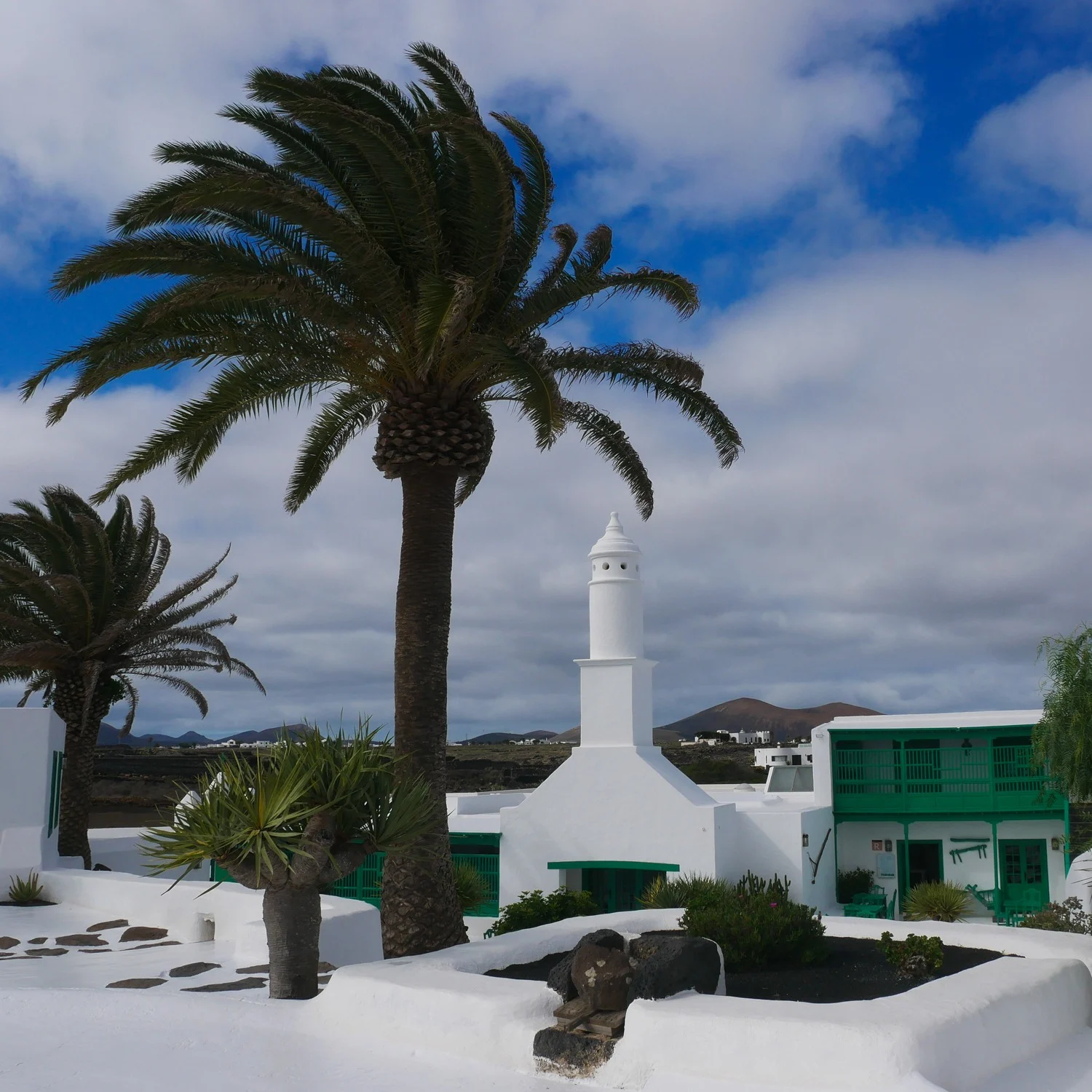
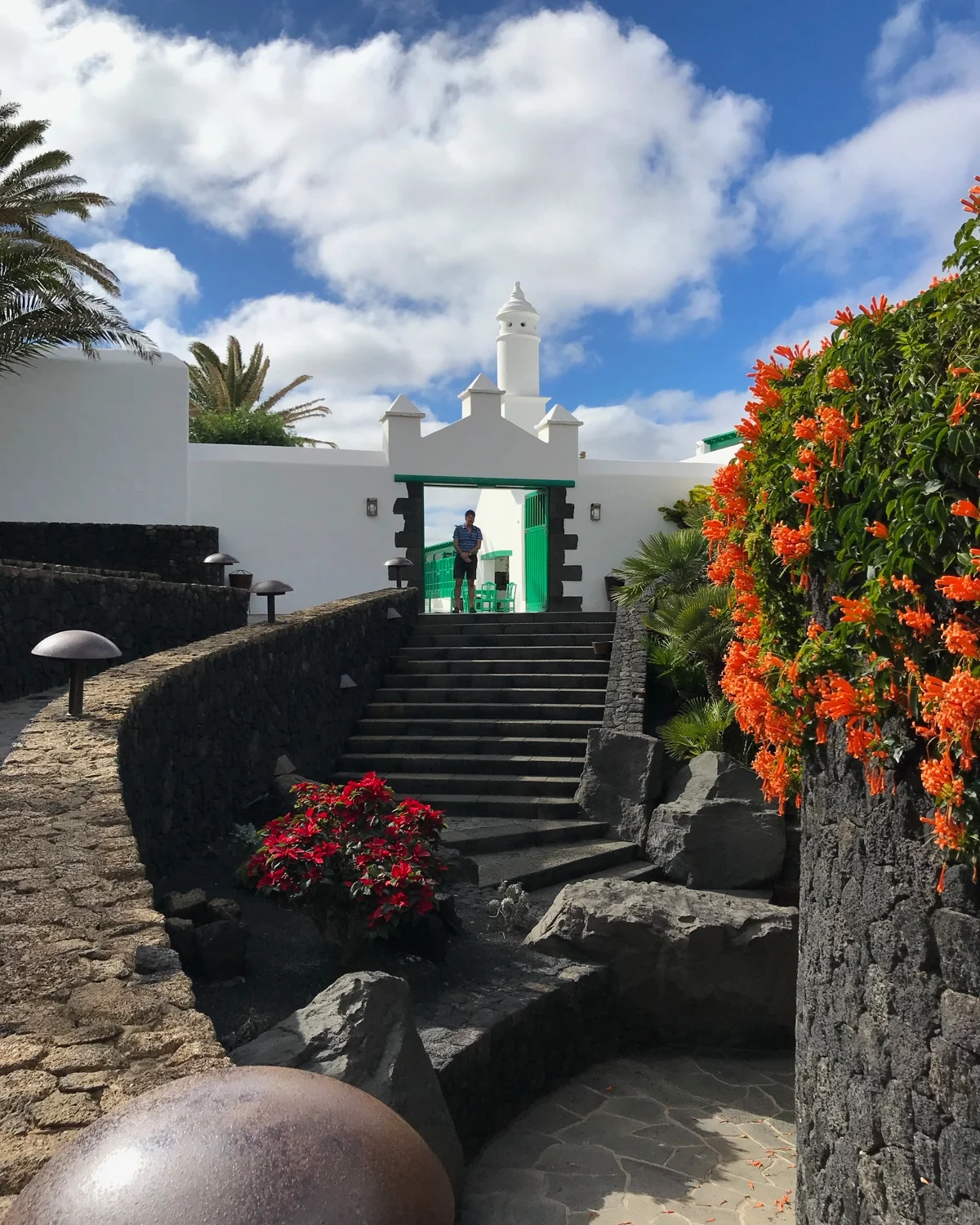
I tried my hand at painting with the red dye from cochineal beetles that feed off the local cactus. Other workshops include making the Mojo Canarian sauce, plaiting palm leaves to make hats and baskets, and baking with the gofio cornmeal.
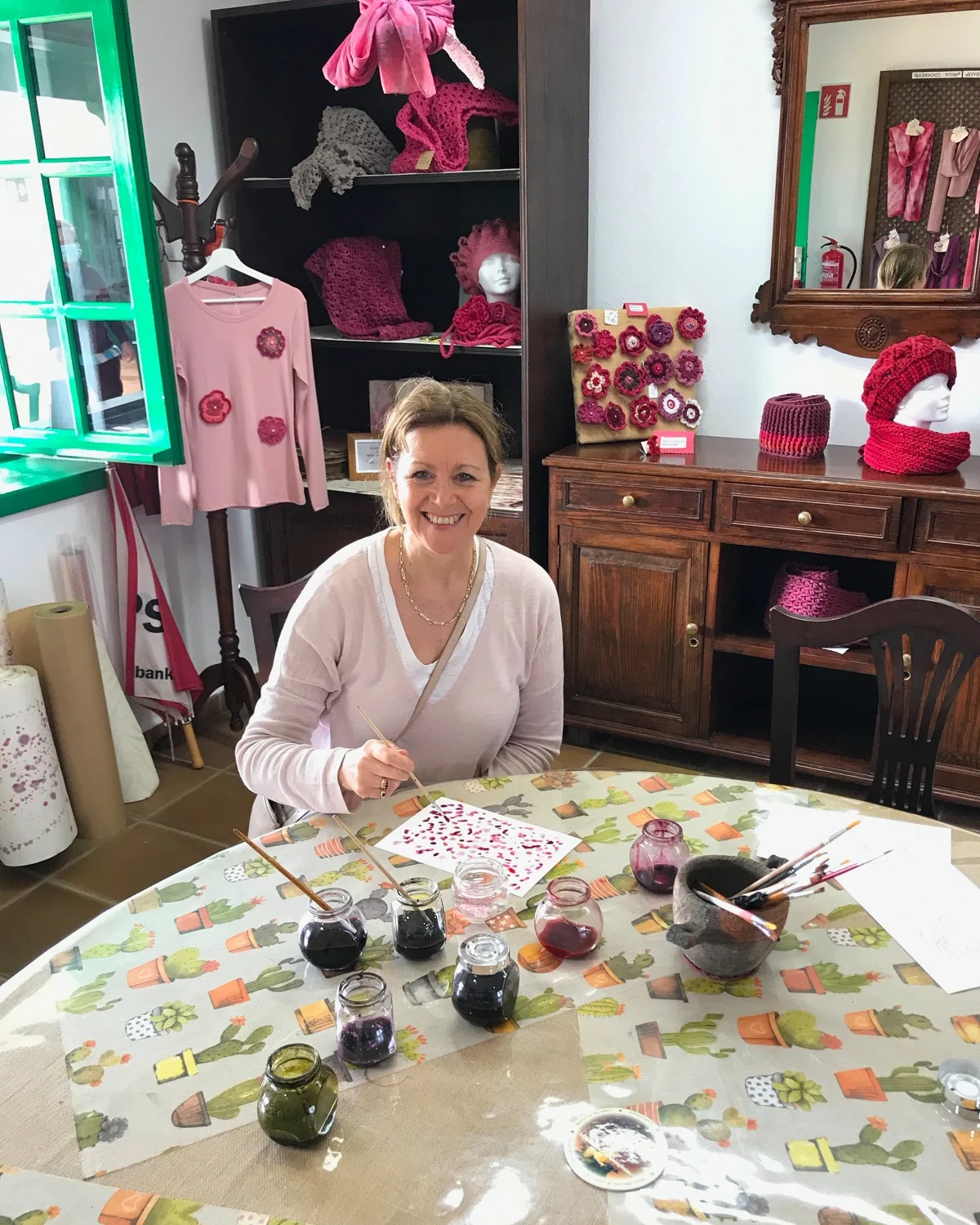
Monumento a la Fecundidad
Next to the Campesino is the Monumento a la Fecundidad (Monument to Fertility) designed by Cesar Manrique as a tribute to the farming communities of Lanzarote. The abstract sculpture made of old water tanks is reminiscent of an ear of corn, a camel or a goat depending on which way you look at it. If you’d like to discover more, you can take this Cesar Manrique full day tour which includes this and many other attractions designed by the artist.
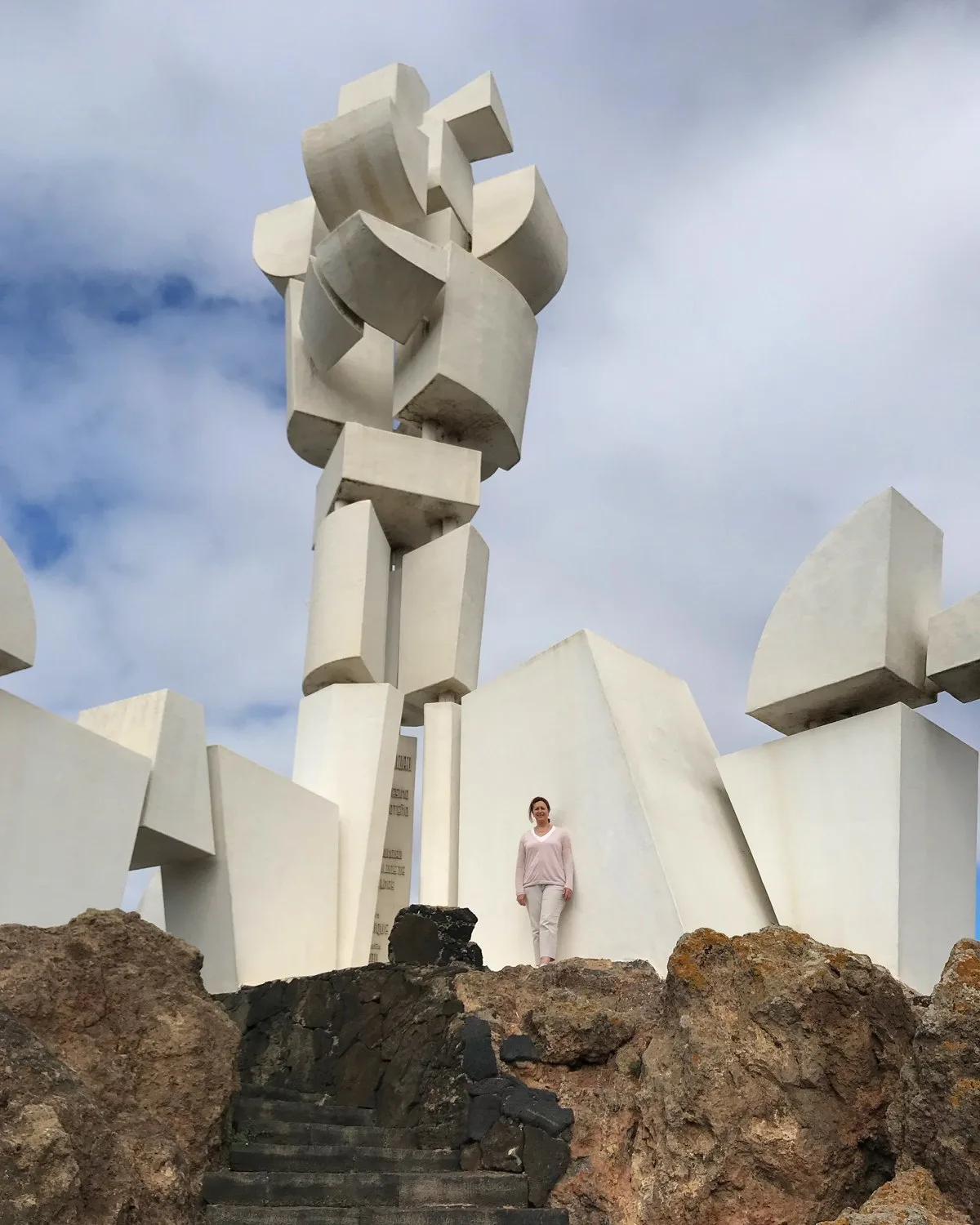
17. Lagomar
LagOmar is a unique house and visitor attraction in Lanzarote that once belonged to 70s heart-throb Omar Sharif, who bought it after filming on the island. The property was the design of artist Jesús Soto, but Omar Sharif barely lived here, since the story goes that he lost it in a game of bridge and never returned to Lanzarote.
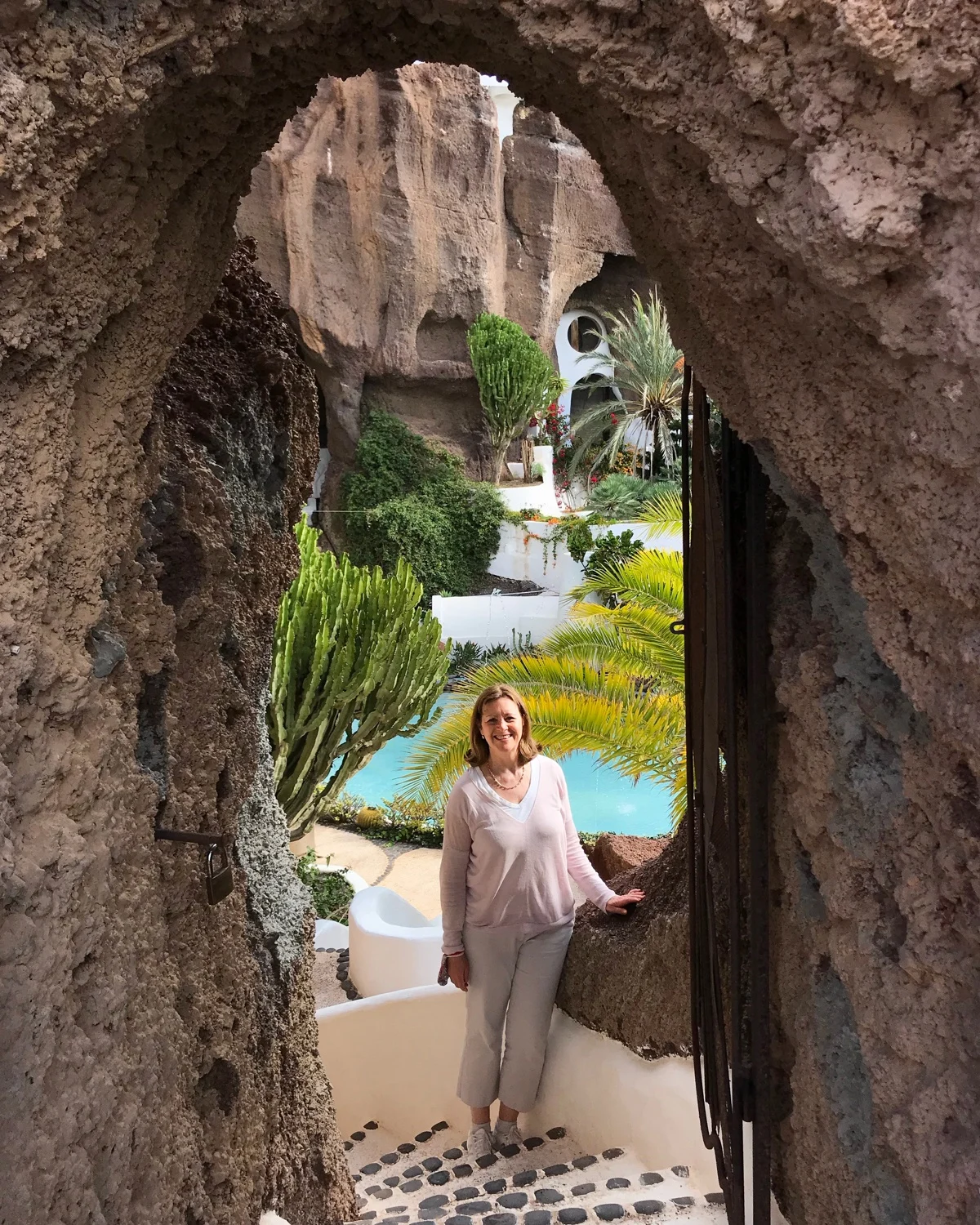
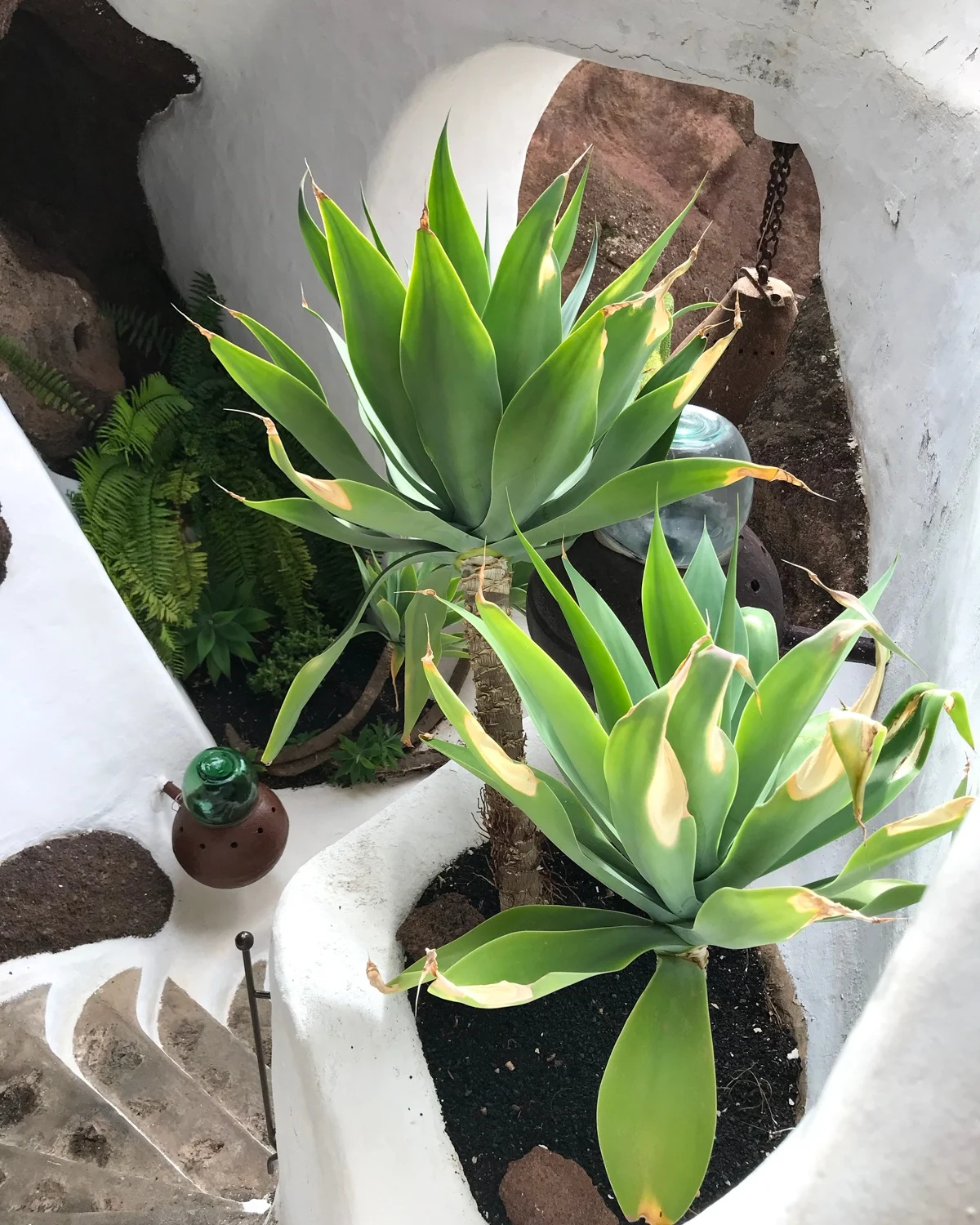
Built into the hillside, with not a straight line in sight, the property is full of hidden chambers and vistas over the turquoise pools and sheltered gardens. After falling into disrepair, LagOmar was redeveloped by new architect owners in the 1980s to create an artistic and cultural centre. This is a place where you’ll want to photograph every beautiful nook and cranny and we can also recommend the cafe and restaurant overlooking the lagoon pool.
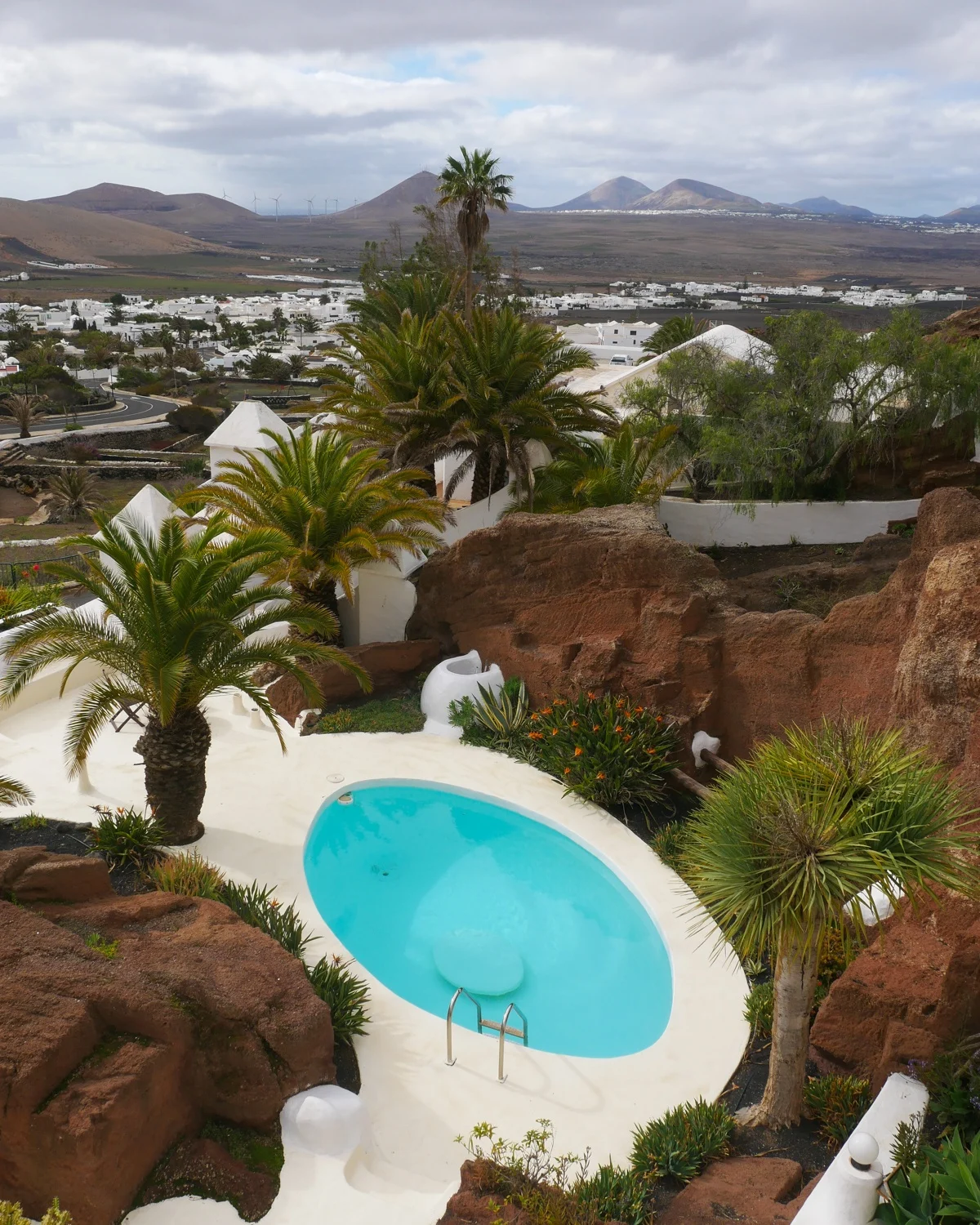
18. Cesar Manrique Foundation at Tahiche
The Volcano House near Tahiche was the home of artist Cesar Manrique for 20 years from 1968 to 1988 and is now headquarters of the Cesar Manrique Foundation that maintains his artistic legacy. Although it was closed when we visited, it’s well worth a visit to see the place that Cesar Manrique himself designed, built into a series of lava bubbles left from the volcanic eruptions.
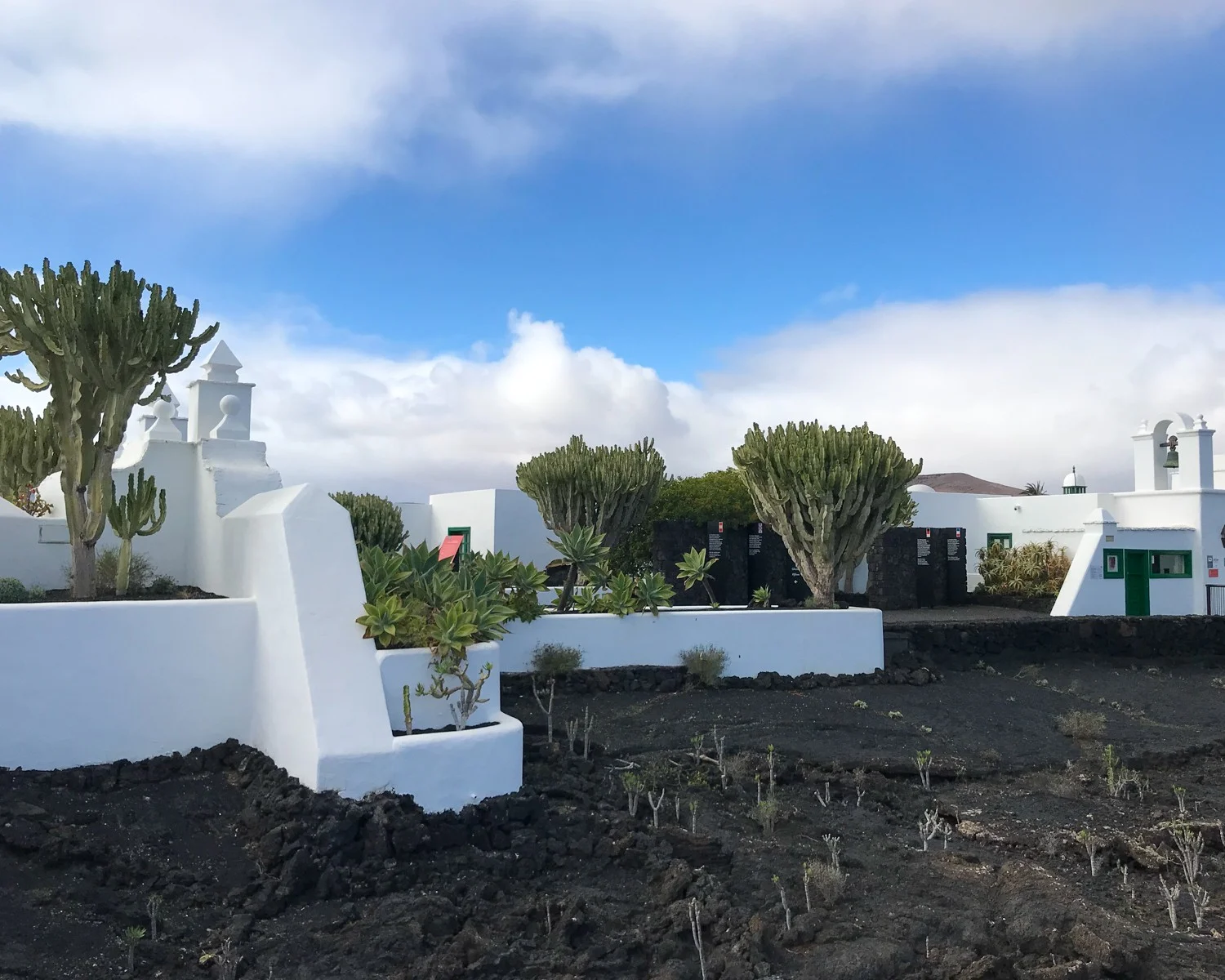
The lower floors enclosed by volcanic rock, house a characteristic turquoise lagoon pool and built in seating areas with sculptural plants and vegetation. The upper floors are spacious, light and bright, while the artists’ former studio is now used as an exhibition space.
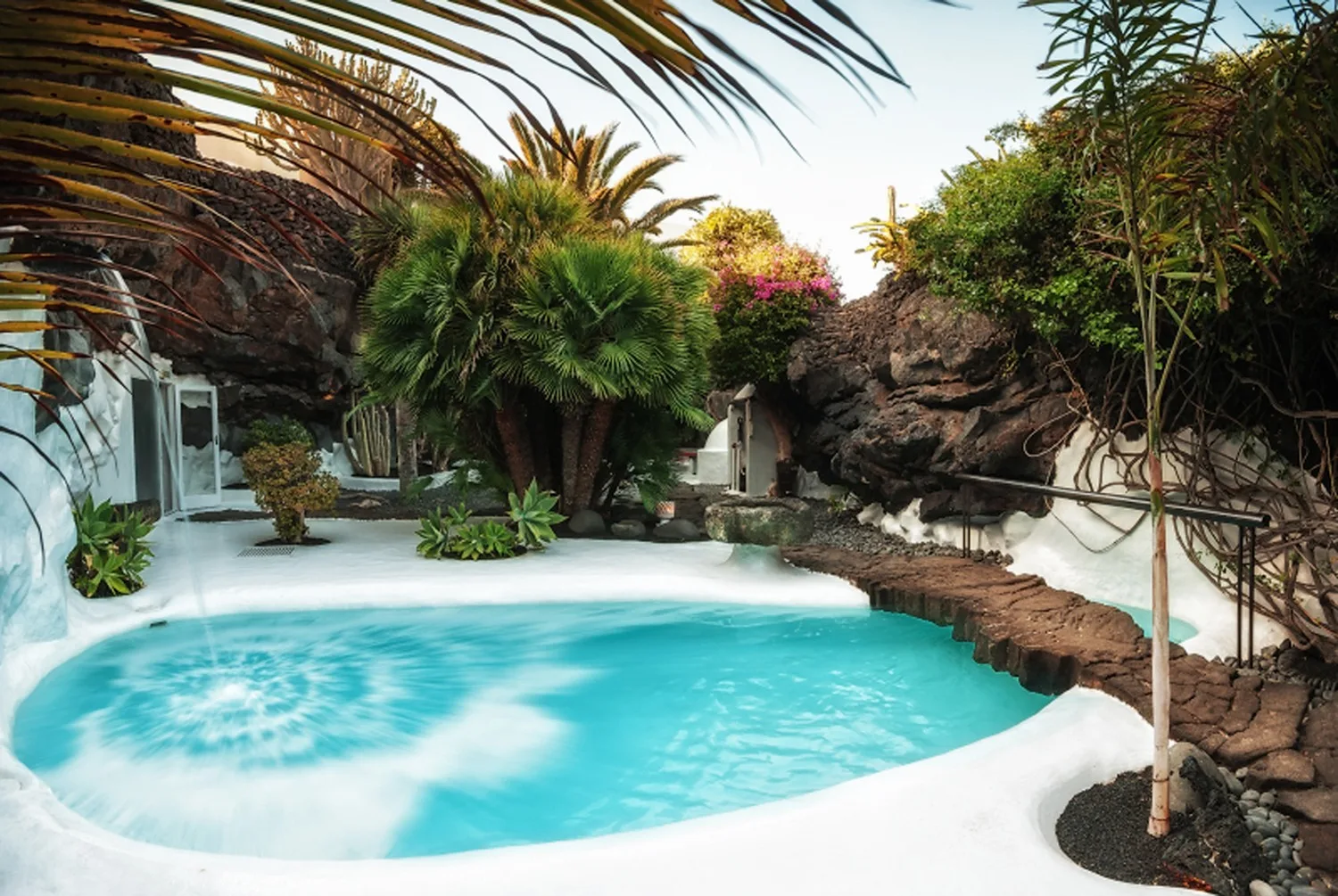
Cesar Manrique later moved to a quieter home at The Palm House in Haria (also run by the Cesar Manrique Foundation) and used the Volcano House as his headquarters and exhibition space, until he sadly died in a car crash in 1992.
If you’d like to discover more, you can take this Cesar Manrique full day tour which includes this and many other attractions designed by the artist.
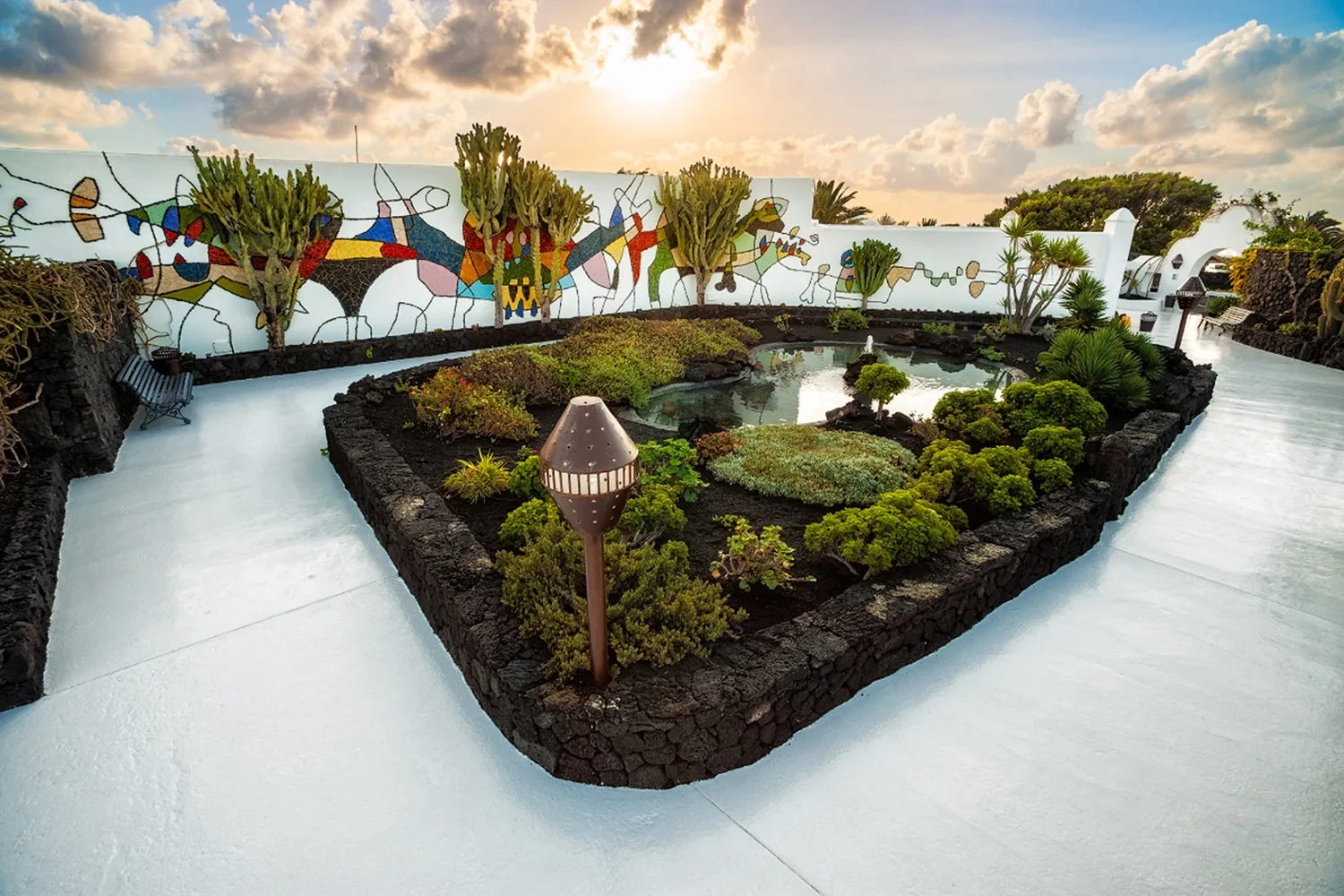
19. Teguise
Teguise is the former capital of Lanzarote which was founded in 1402 and definitely on my list of top places to go in Lanzarote. The old town area is mostly pedestrianised, so you can wander among the pretty whitewashed buildings and traditionally built houses, now converted into restaurants or gift shops. My top things to do in Teguise include:
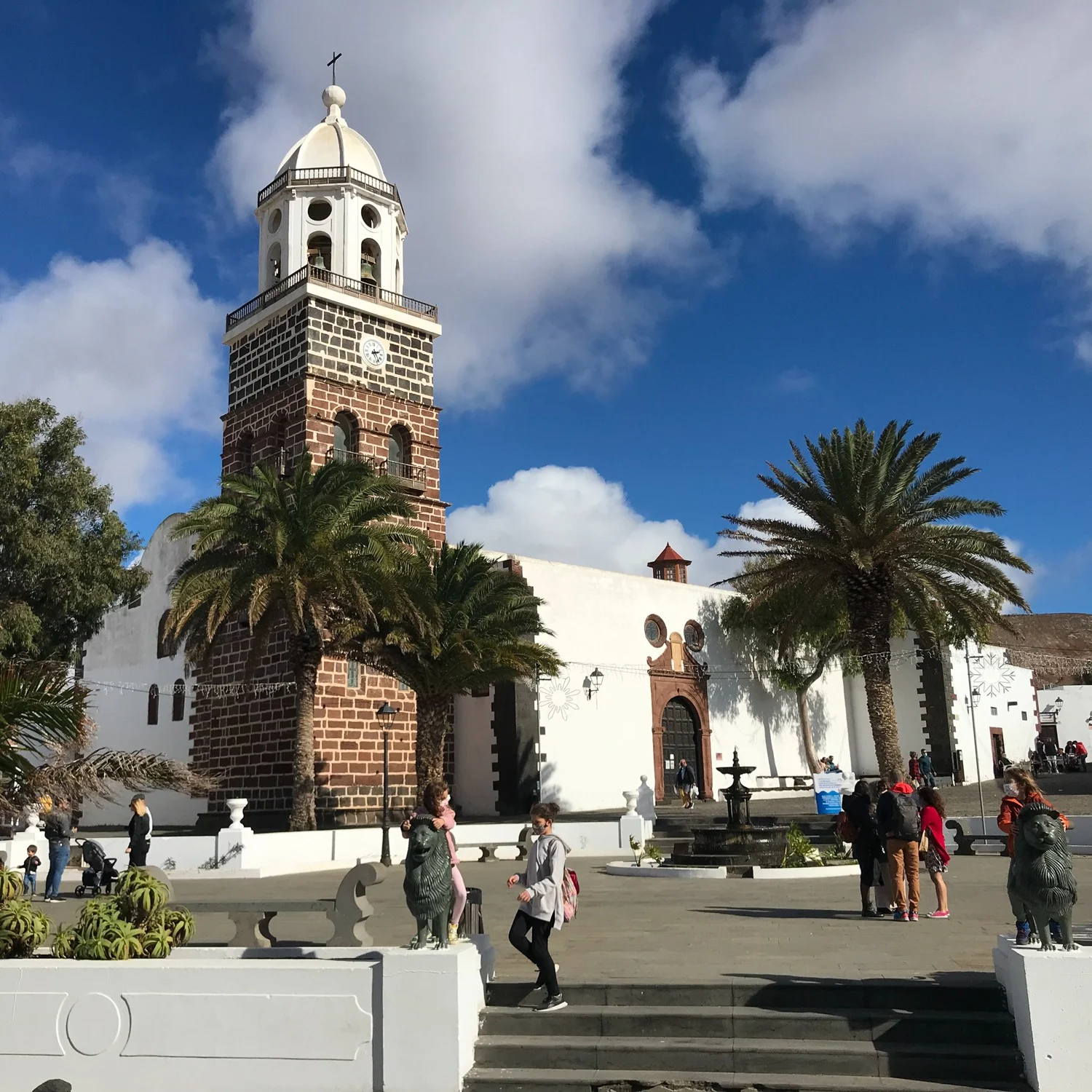
Best things to do in Teguise
- Visit the Teguise market that takes place on Sundays in the morning until around 2pm for artisan crafts and traditional produce. On market day the town is lively but it’s quieter at other times and many shops are closed on Mondays.
- Wander around the gift and artisan shops – this is the place to find a great selection of stylish items and traditional crafts.
- Have a drink or lunch in one of the pavement cafes in the old town and watch the world go by – we can recommend Cantina Teguise which has a modern take on traditional dishes.
- Visit the Casa Museo Palacio Spinola, a gorgeous old mansion that now houses the Museo del Timple dedicated to Lanzarote’s traditional instrument similar to a small guitar.
- Look around the church of Our Lady of Guadalupe and the central square that built over the giant water cistern that held the town’s water supply.
- For a place to stay in the heart of the old town, take a look at the stylish boutique hotel Palacio Ico with 9 contemporary suites and bedrooms in an historic 17th century mansion.
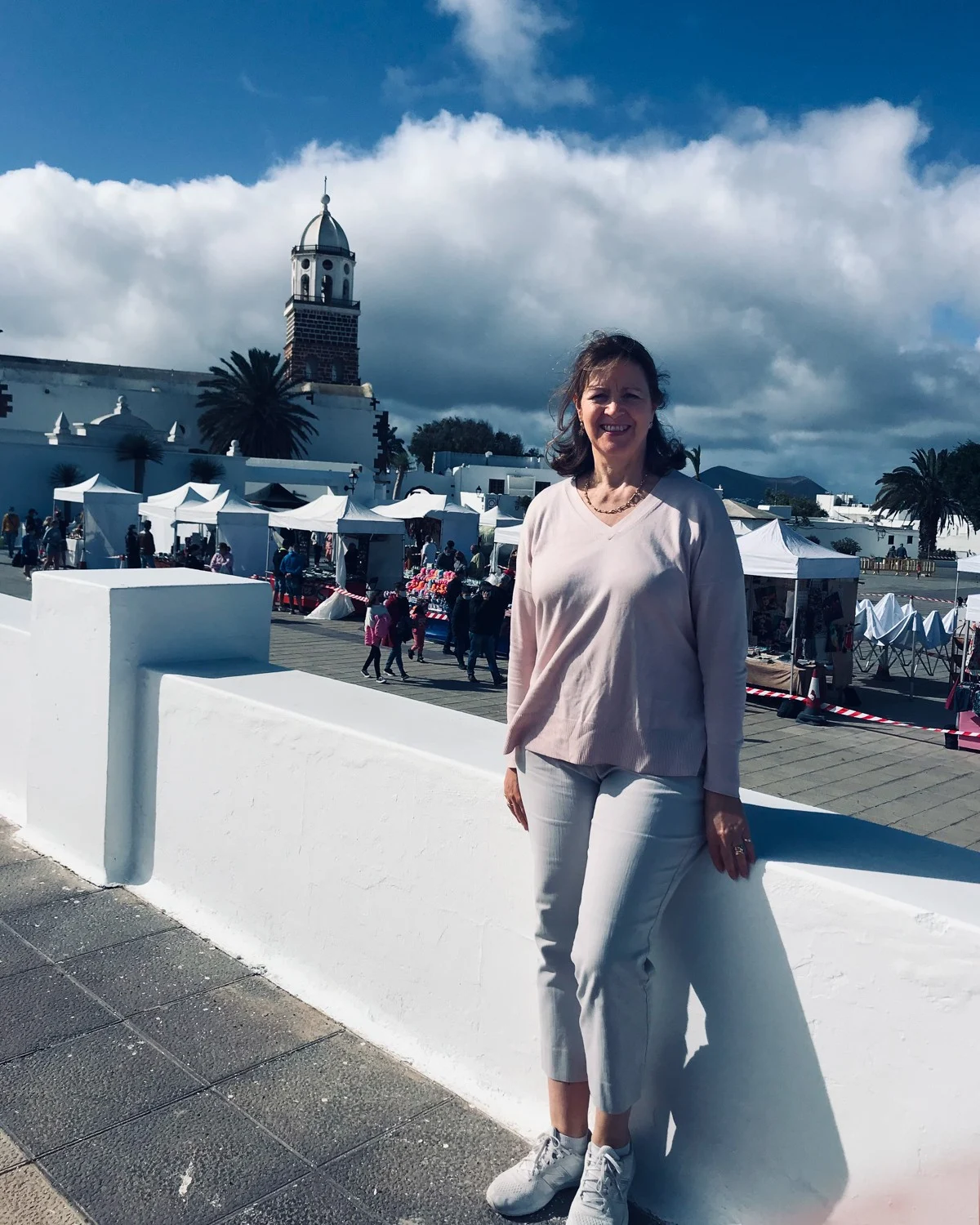
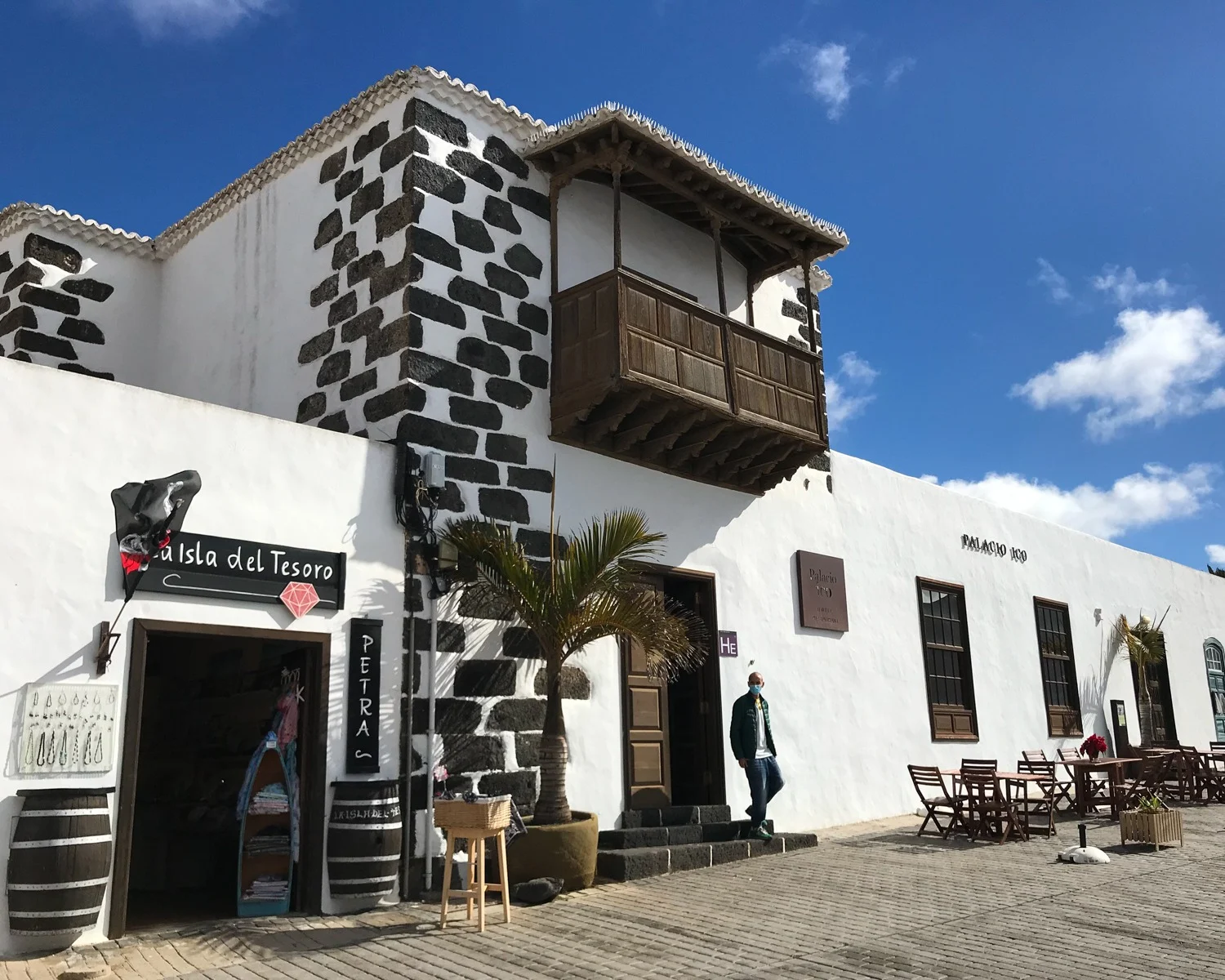
20. Castillo Santa Barbara and Pirate museum
While you are visiting Teguise, you might want to drive up the hill overlooking the town to the Castillo Santa Barbara, a fortress on the volcanic hill that was started in the 14th century. The Castillo now houses the Museo de la Pirateria which documents the Berber pirate attacks on Teguise during the 16th and 17th century.

Looking for a place to stay in Lanzarote? We can recommend the boutique vineyard accommodation at Finca Malvasia – read my review
Most of the invaders came in search of slaves or those they could kidnap for ransom. The castle and Lanzarote Pirate Museum were closed for renovation at the time of our visit but should be open later in 2021.
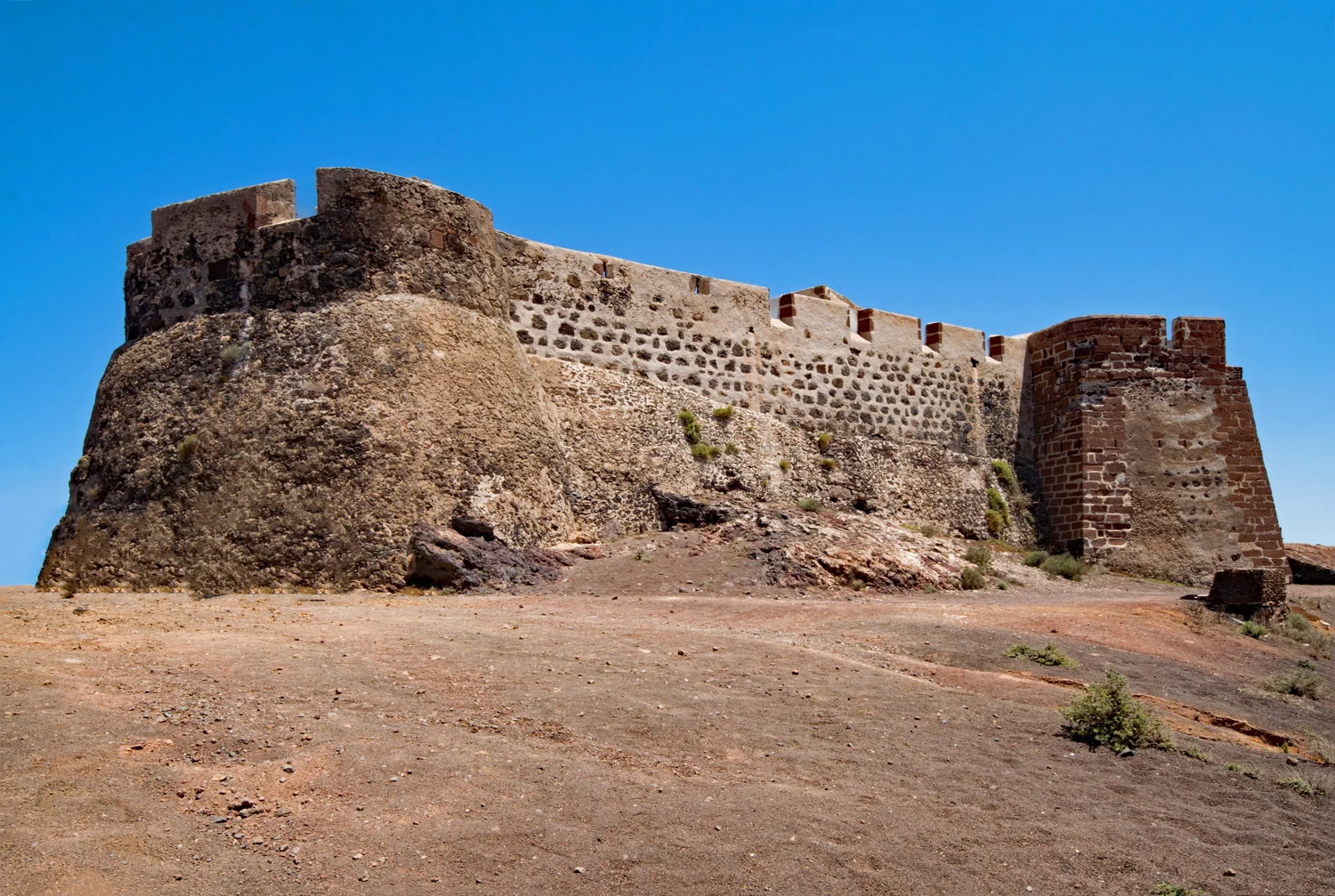
North – things to do in Lanzarote
The north of Lanzarote has a wild and rocky character, in contrast with the sheltered and warm south coast. The prevailing winds from the north make the beaches windy and popular for surfing, with dramatic cliffs and a volcanic landscape mixed with fertile hidden valleys like that at Haria.
Where to stay in Lanzarote
We stayed in the north of Lanzarote at the delightful Finca de Arrieta with Lanzarote Retreats – a small eco-village on the northern coast at Arrieta which has a number of different villas, stone lodges and yurts with a relaxed and friendly vibe, that are ideal for independent travellers. Read my review of Finca de Arrieta here.
In the centre of Lanzarote we stayed at Finca Malvasia – boutique rural accommodation in the heart of the La Geria wine region, set among a working vineyard. The stylish cottages converted from the old winery are furnished in contemporary style, around a turquoise Cesar Manrique style swimming pool. Read my review of Finca Malvasia here.
For more places to stay check out these hotels in Lanzarote.
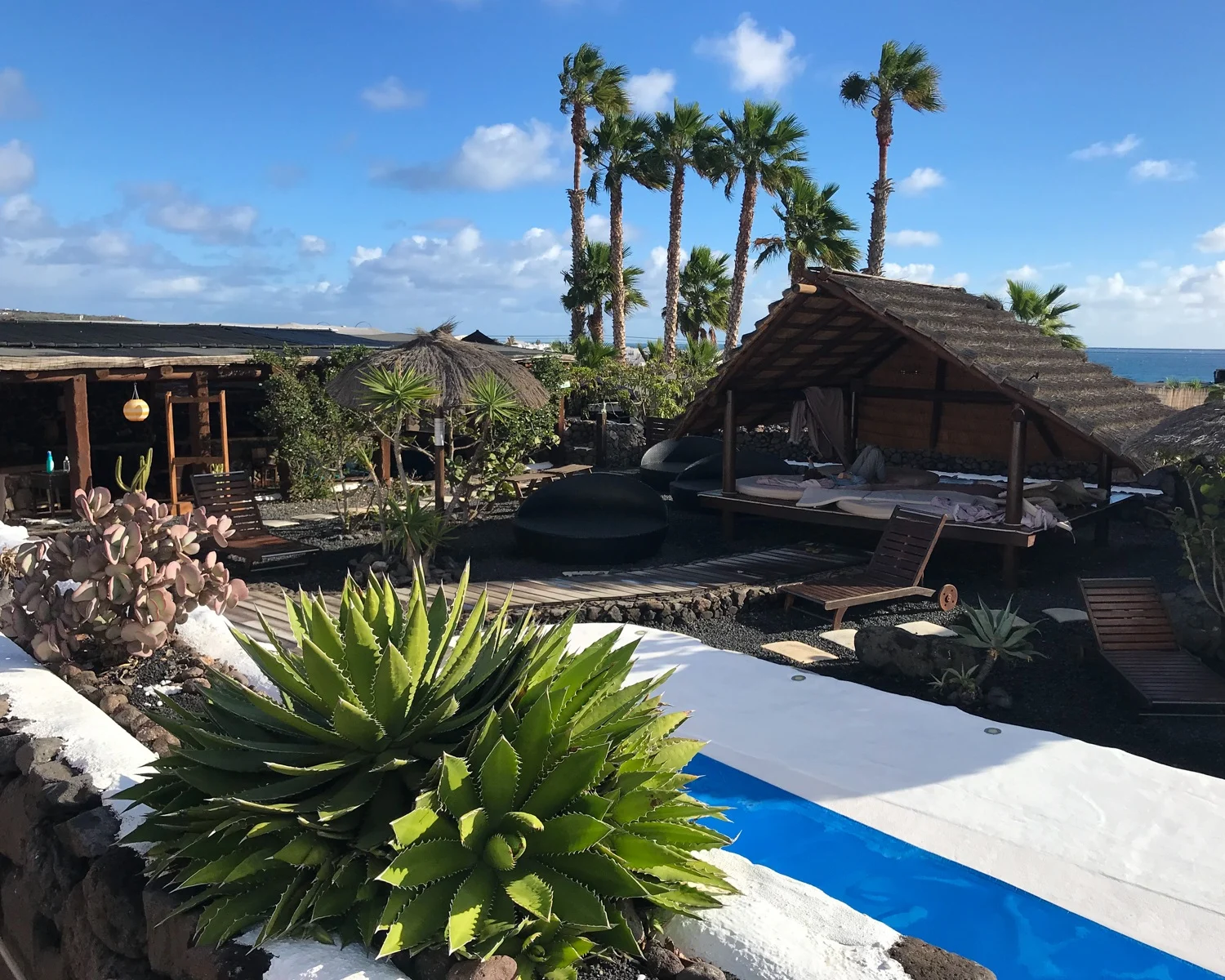
21. Haria
The small town of Haria has a peaceful, rural feel with an Arabic flavour due to the number of palm trees. It’s known as the Valley of 1000 Palms due to the local custom of planting two palm trees on the birth of a boy and one on the birth of a girl. As you approach on the hill road from Teguise you’ll get the most dramatic views of Haria as the road winds steeply down into the valley.
Most people visit on Saturday when the Haria market is in full swing, with artizan craft stalls set out on the main square of Plaza León y Castillo. At other times there isn’t a huge amount to see, other than wander around some of the craft shops or visit the Cesar Manrique House on the edge of town.
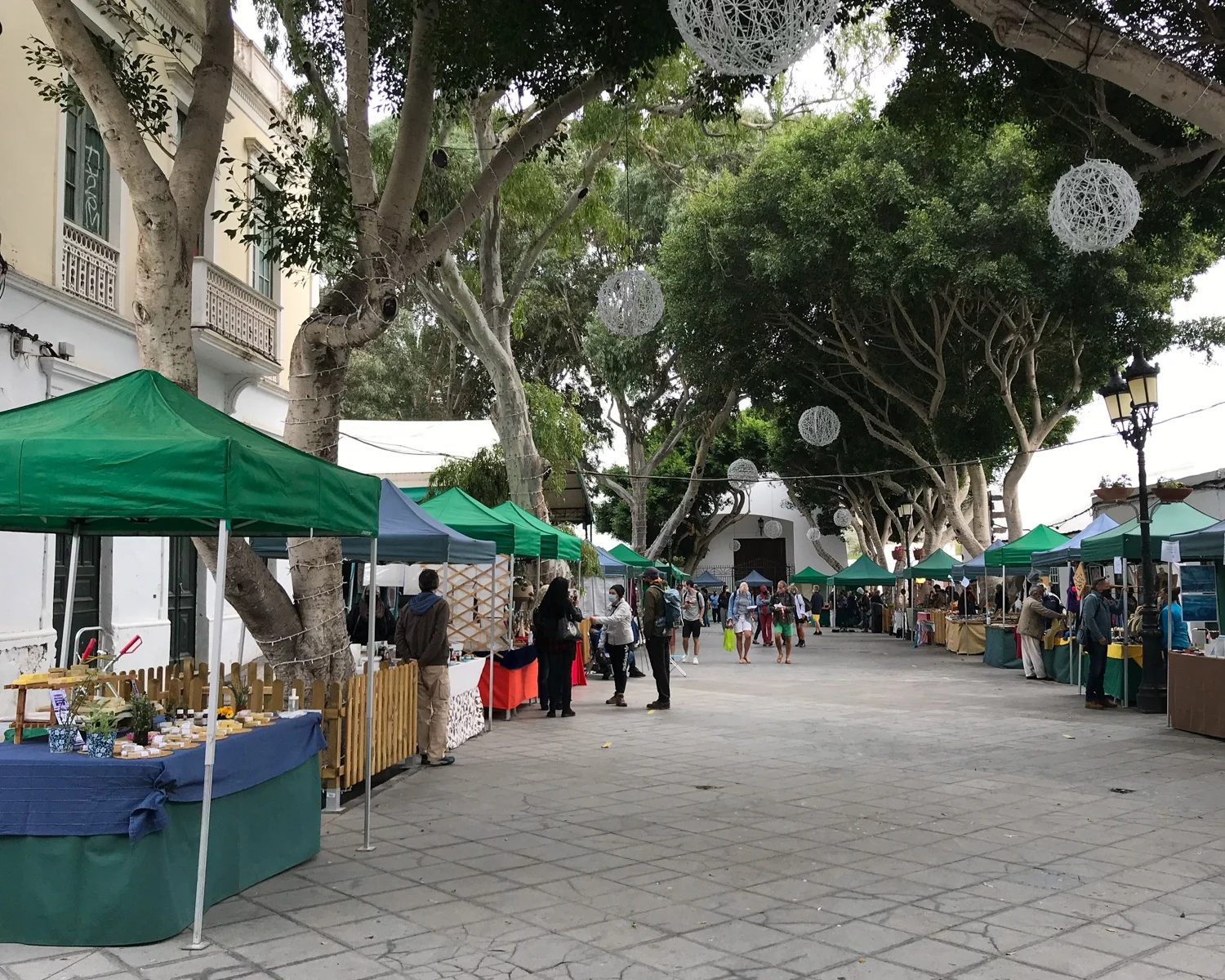
22. Cesar Manrique house museum – Haria
The Cesar Manrique house museum at Haria is in a quiet location on the edge of the town and was closed when I visited Lanzarote, but I’d love to go back to see it. After living for 20 years at his house in Tahiche (now the Cesar Manrique Foundation) the artist started work in 1986 on land that he had owned for some years, to renovate and rebuild an old farmhouse.
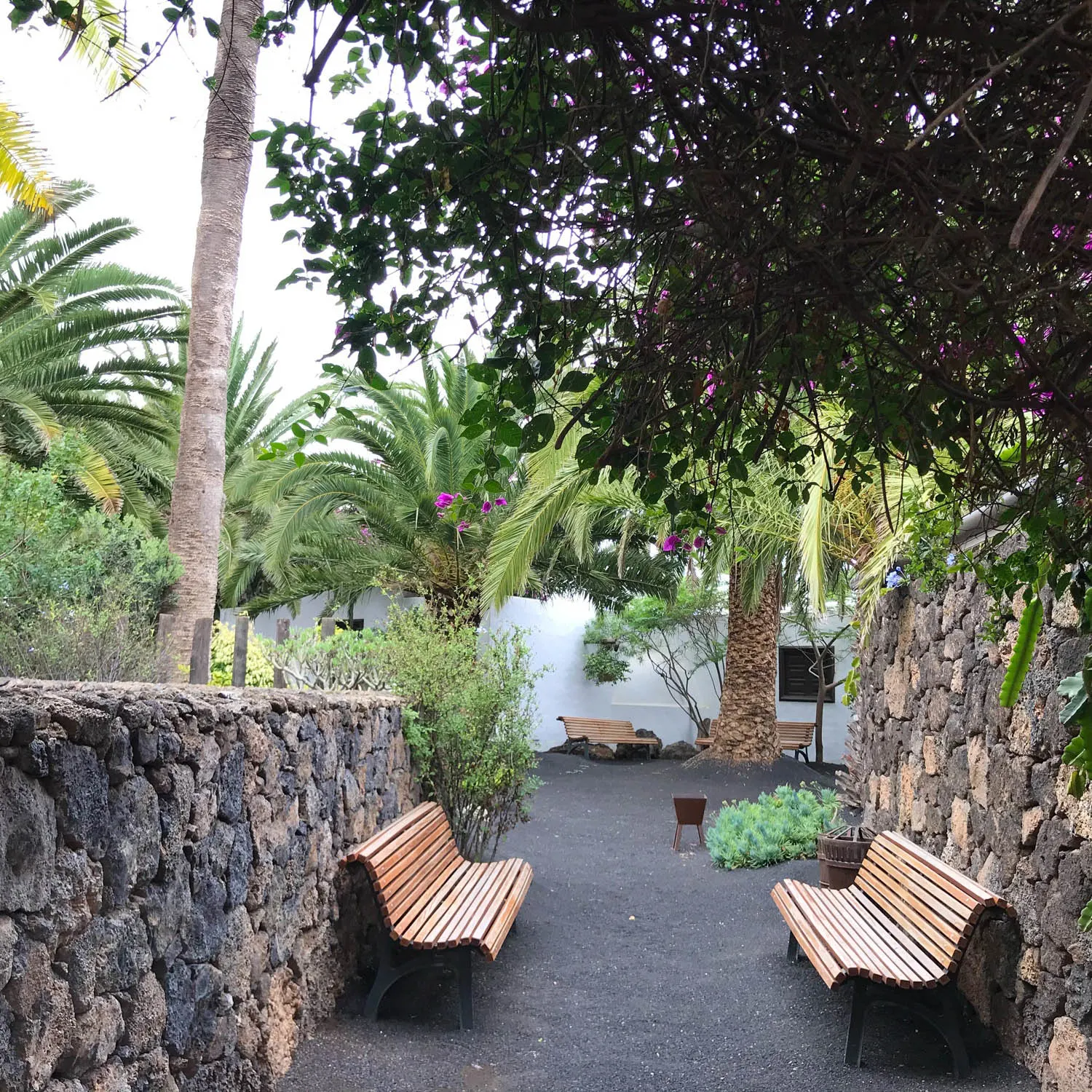
In this quieter location, set among the palm groves, Cesar Manrique made his home and had his studio until his untimely death in a car crash in 1992. The Palm House at Haria is the most intimate of the Manrique designed properties that are open to the public around Lanzarote, and has been left as if he had just walked out of the door.
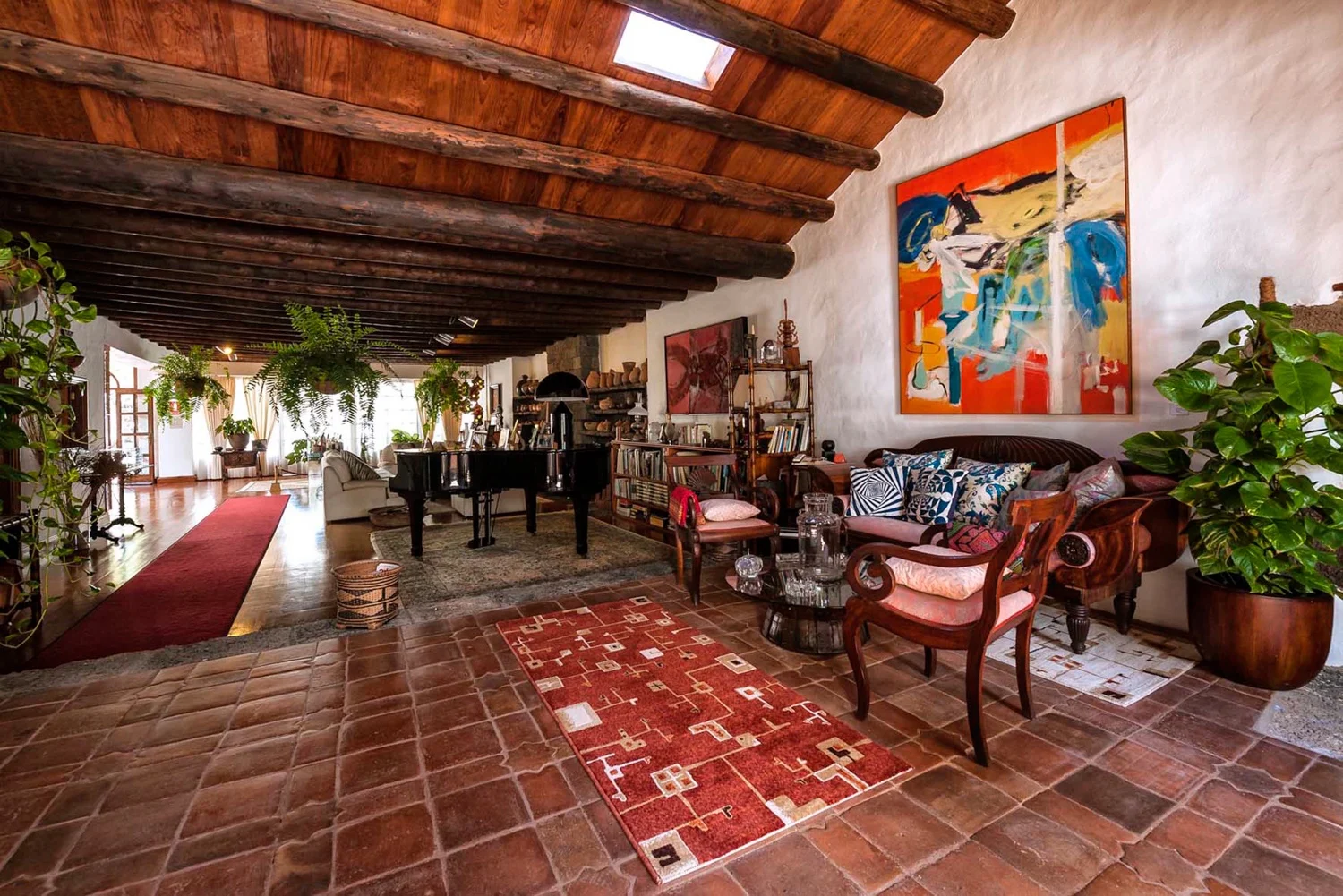
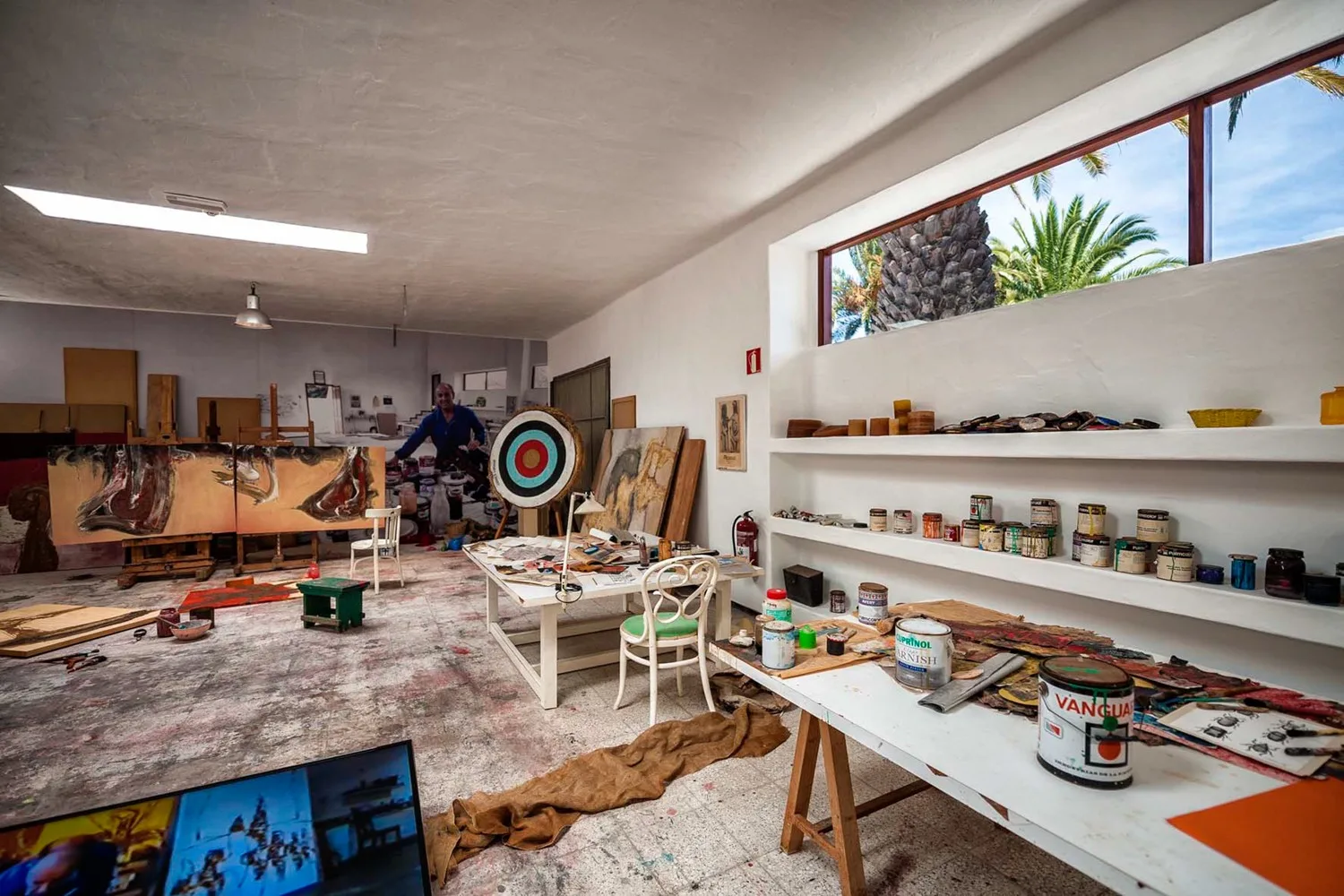
The artist’s studio in a separate building has been conserved as it was on the day he died, with canvases and unfinished paintings stacked around the walls and floor and oil paints lying all around.
If you’d like to discover more, you can take this Cesar Manrique full day tour which includes many attractions designed by the artist.
23. Jardin de Cactus
The Jardin de Cactus was one of my favourite places to visit in Lanzarote, with a collection of 4500 cactus and succulents from all over the world. They are contained within a sheltered garden surrounded by the walls of an old quarry. The cactus garden is another creation of Cesar Manrique’s, who spotted the potential of this rofera or volcanic plug, with the photogenic windmill at one end.

We spent a pleasant couple of hours here, basking in the suntrap with the high rocky walls providing shelter from the wind. It’s amazing to see the variety and sculptural quality of the cactus that take many years to grow to such size. In case you don’t have a car, the Cactus garden is included in this full day Cesar Manrique tour.

Looking for a place to stay in Lanzarote? We can recommend the eco-village at Finca de Arrieta – read my review
There’s an excellent cafe with a terrace overlooking the garden, specialising in local dishes from Lanzarote. You might like to sample the cactus burgers made from the fleshy cactus leaves or other dishes made from prickly pear cactus fruit.
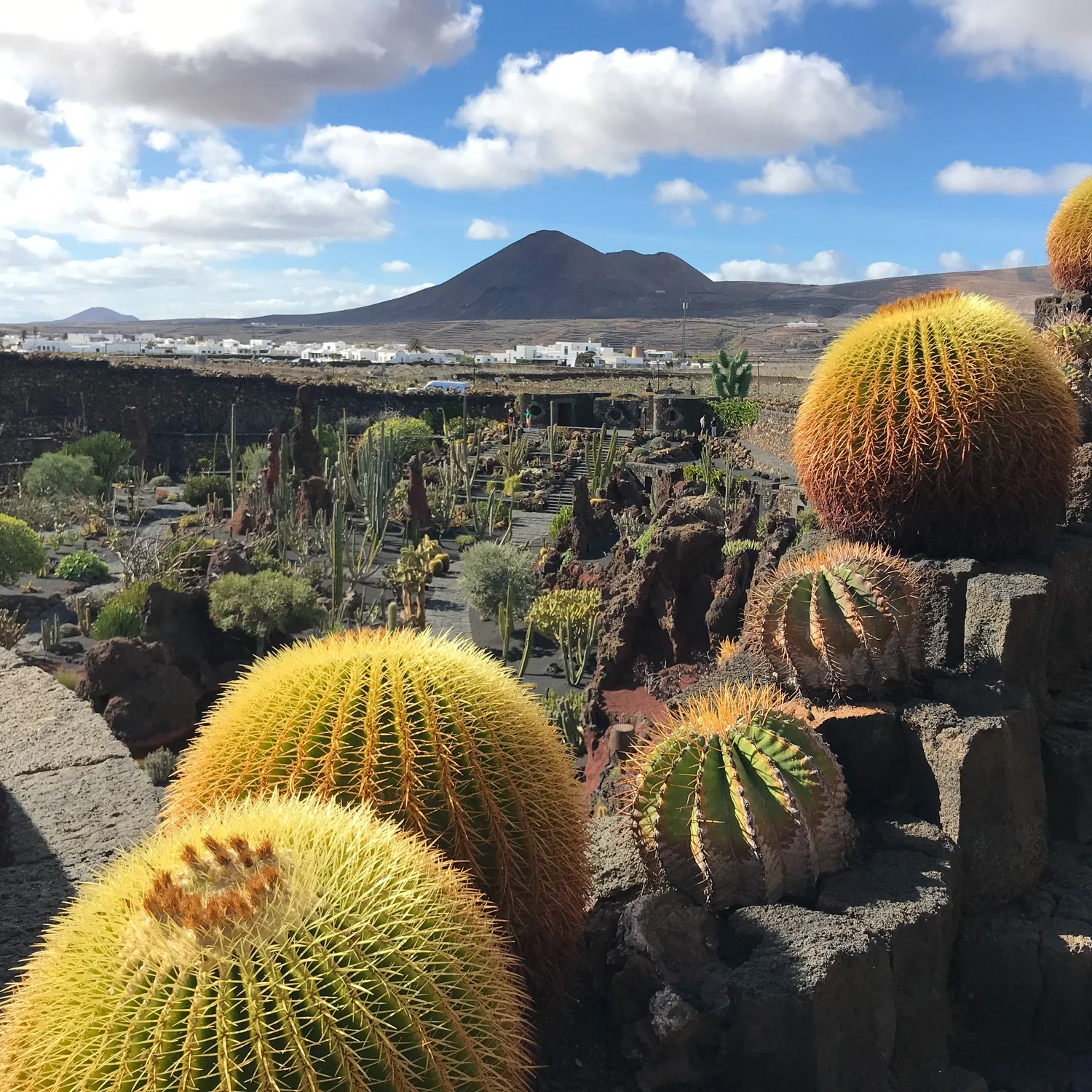
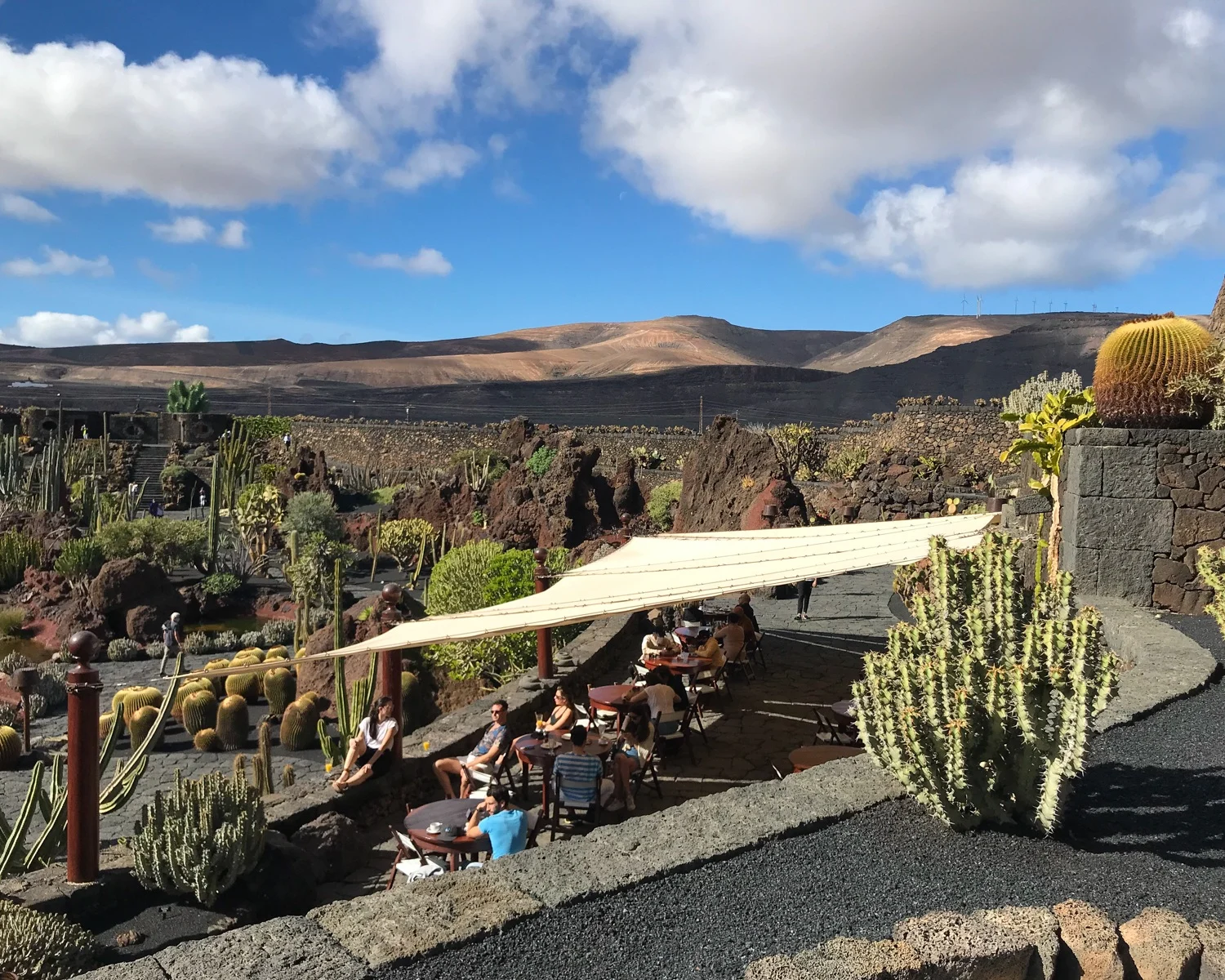
24. Cueva de los Verdes
Close to Jameos del Agua, which I’ve already mentioned in my top 5 things to do in Lanzarote, are the Cueva de los Verdes. The “Green Caves” are an underground complex of volcanic lava tubes from the eruption of nearby Volcán de la Corona. They were transformed into a tourist attraction by local artist Jesús Soto, who designed the illuminations with coloured lights and soft, atmospheric music.
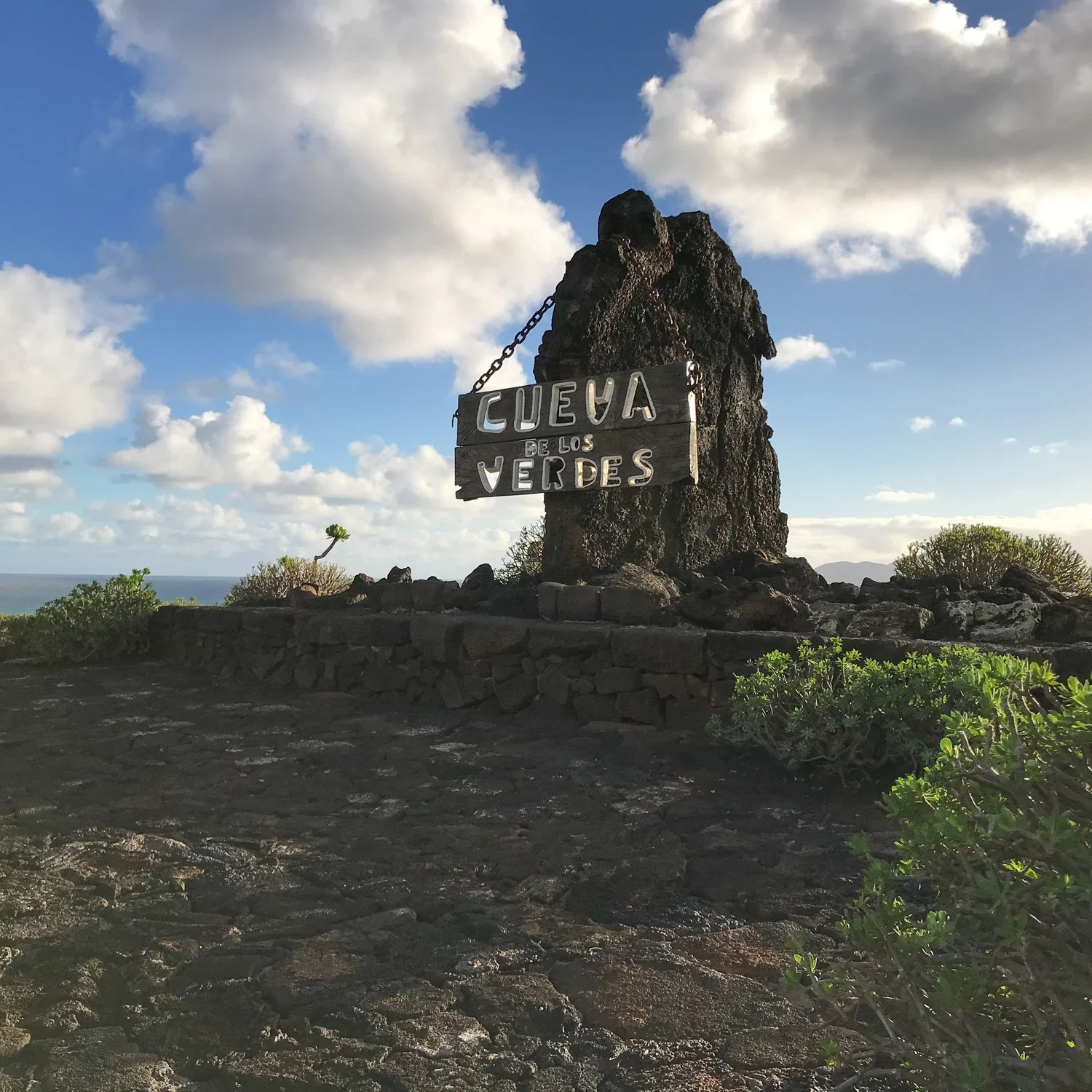
Entrance is through a guided tour that takes you through the caves, with some narrow and claustrophobic passages opening up into a series of chambers. Within the final cave is an underground auditorium, which is used regularly for underground concerts. The Green Caves are included in this full day Cesar Manrique tour which covers many of the attractions designed by the artist.
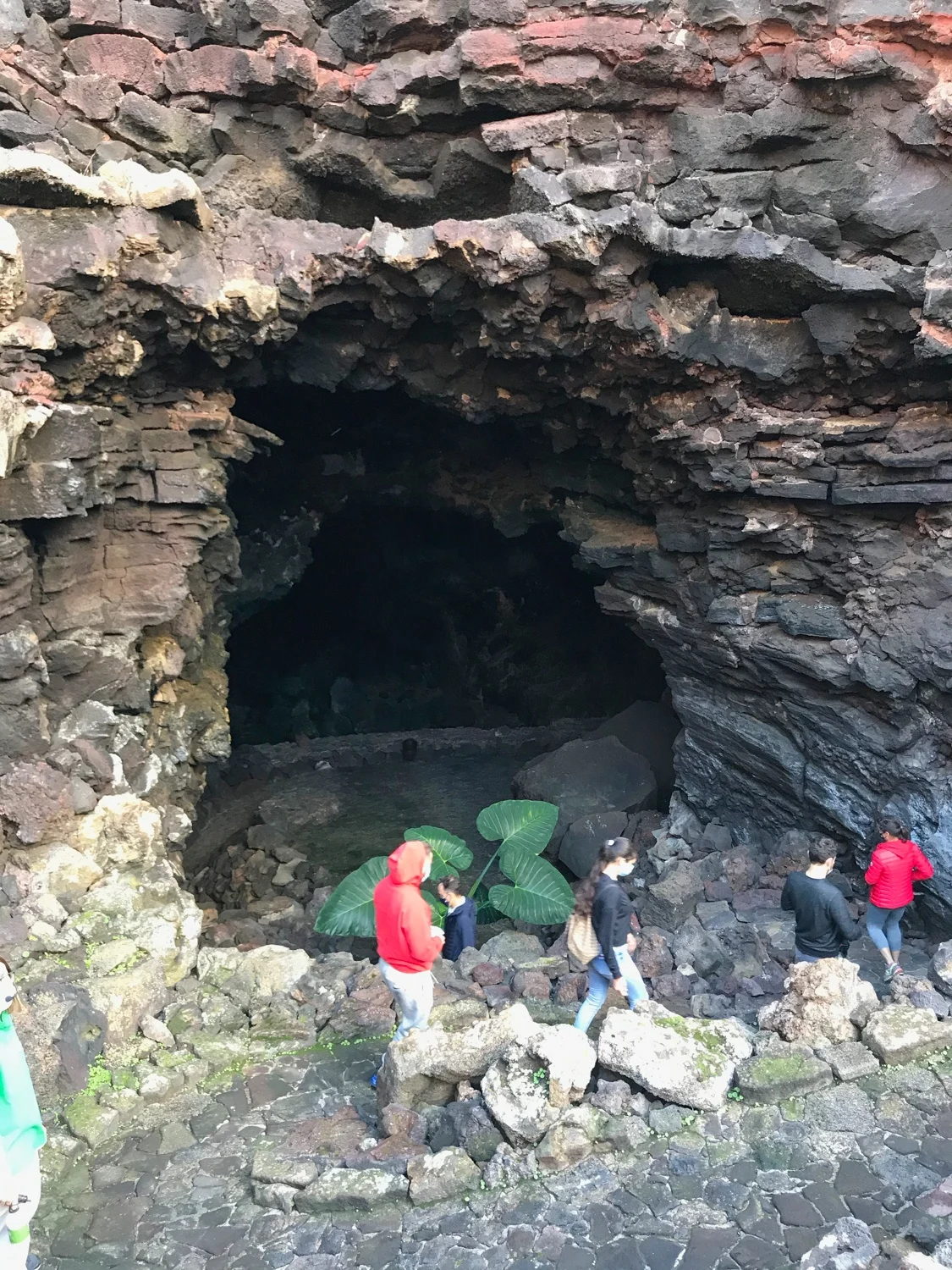
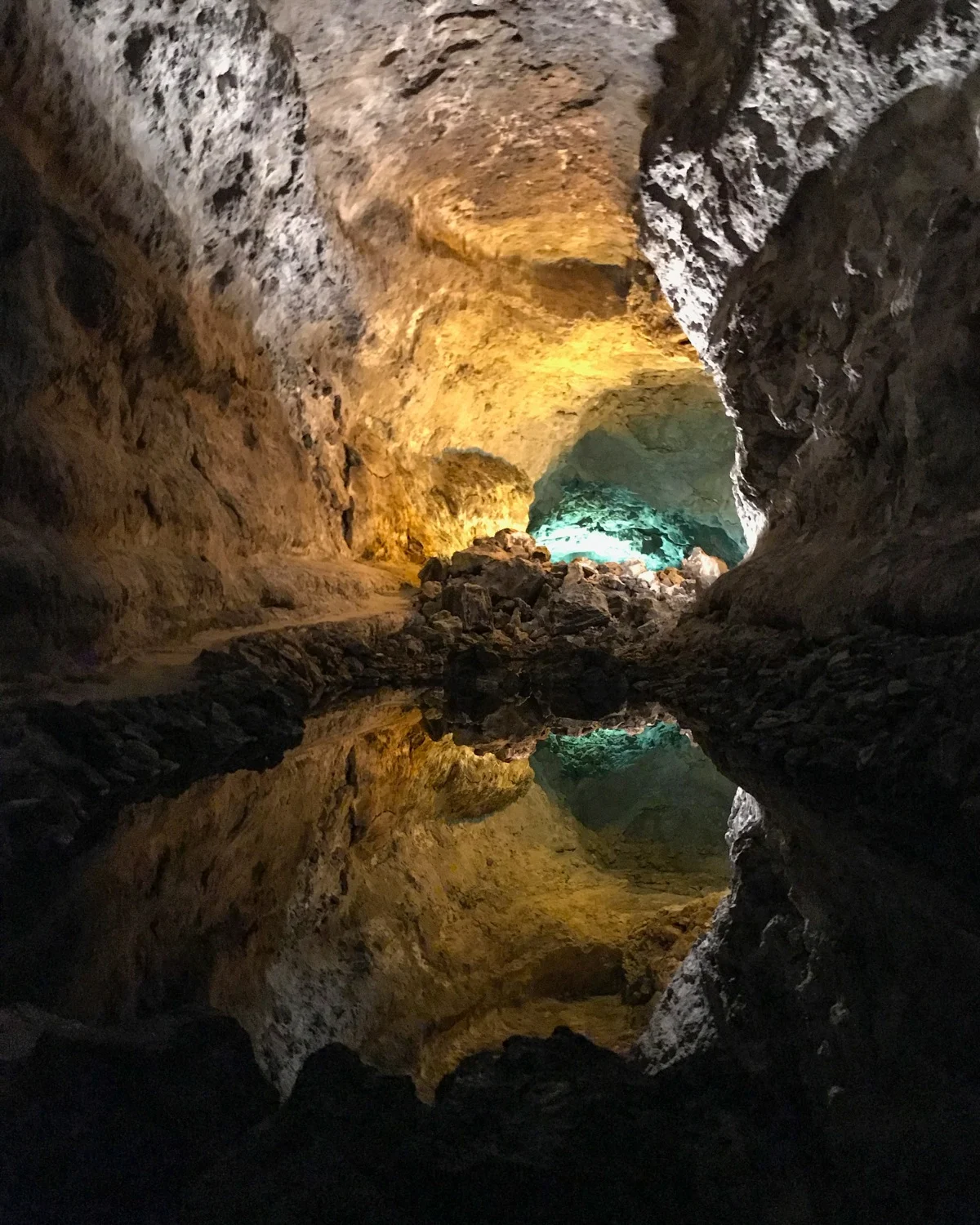
25. Arrieta
We stayed at Arrieta in the north of Lanzarote at the relaxing eco-retreat of Finca de Arrieta, with Lanzarote Retreats (read my review here). The eco-village is set just outside this laid back coastal village, made up mostly of whitewashed holiday homes and apartments with no hotels.
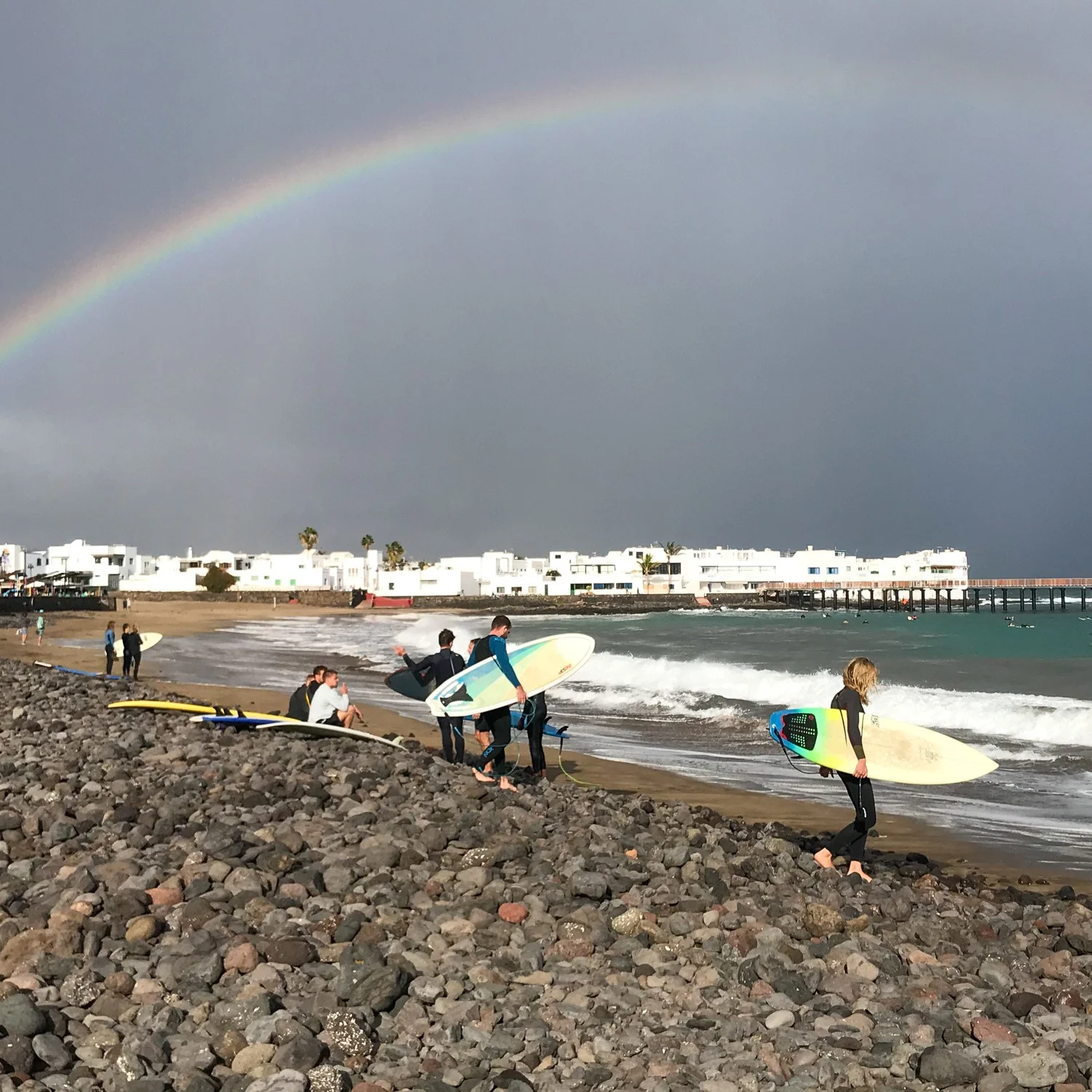
Even if you’re not staying at Finca de Arrieta, it’s worth a stop at the beach when you’re driving north along the coast road. I can recommend lunch at the Casa de la Playa beach restaurant right on the beach which serves excellent seafood or a drink at the Mojito van on the promenade. Read more about some of the best food in Lanzarote.
Playa de la Garita in Arrieta is a popular beach with surfers who are mesmerising to watch as they hang in the swell, waiting to catch the perfect wave.
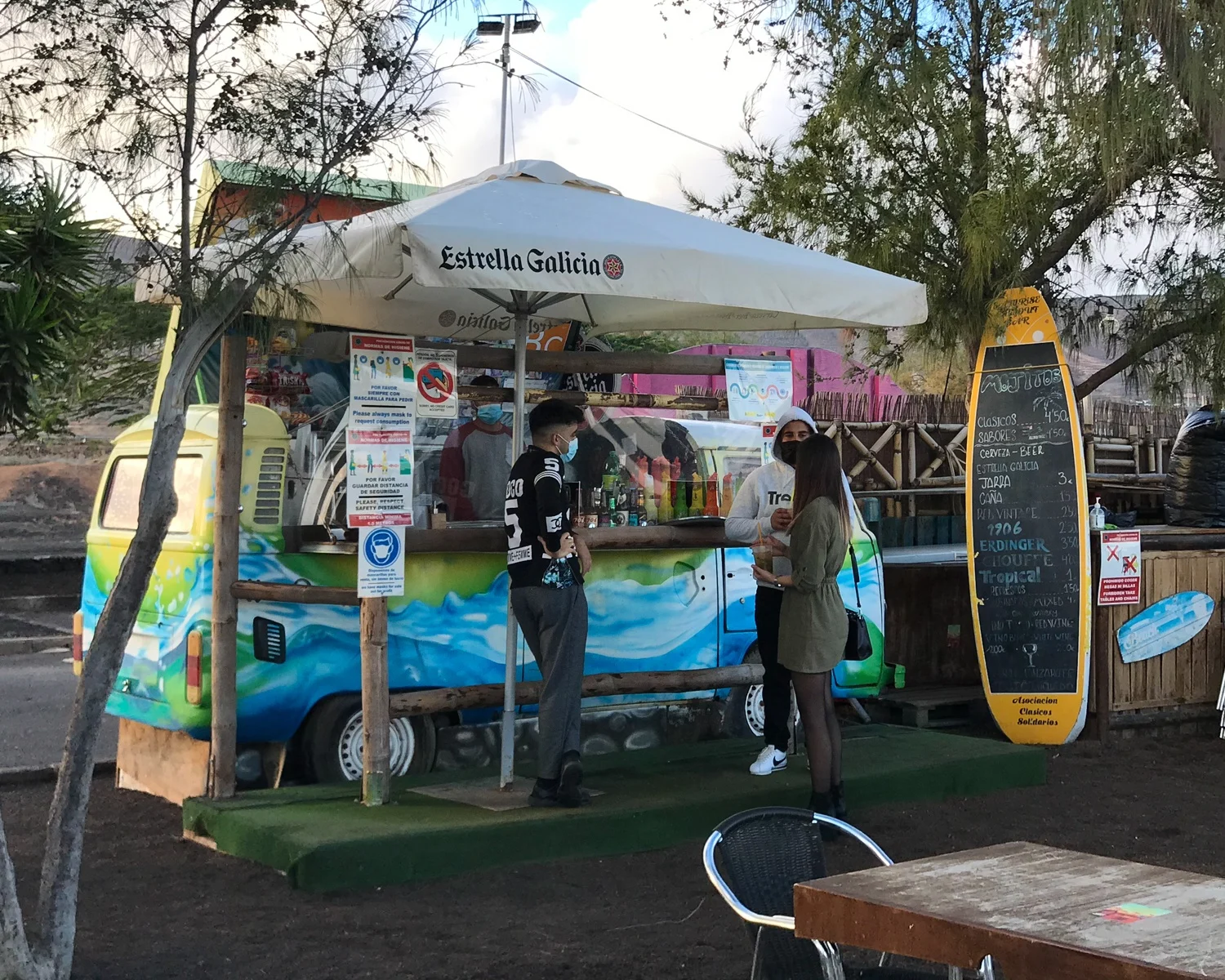
Walking through town there’s another small beach with the unusual Casa Azul, which was built by a local man for his daughter so that she could recover from tuberculosis, which is said to be modelled on her doll’s house.
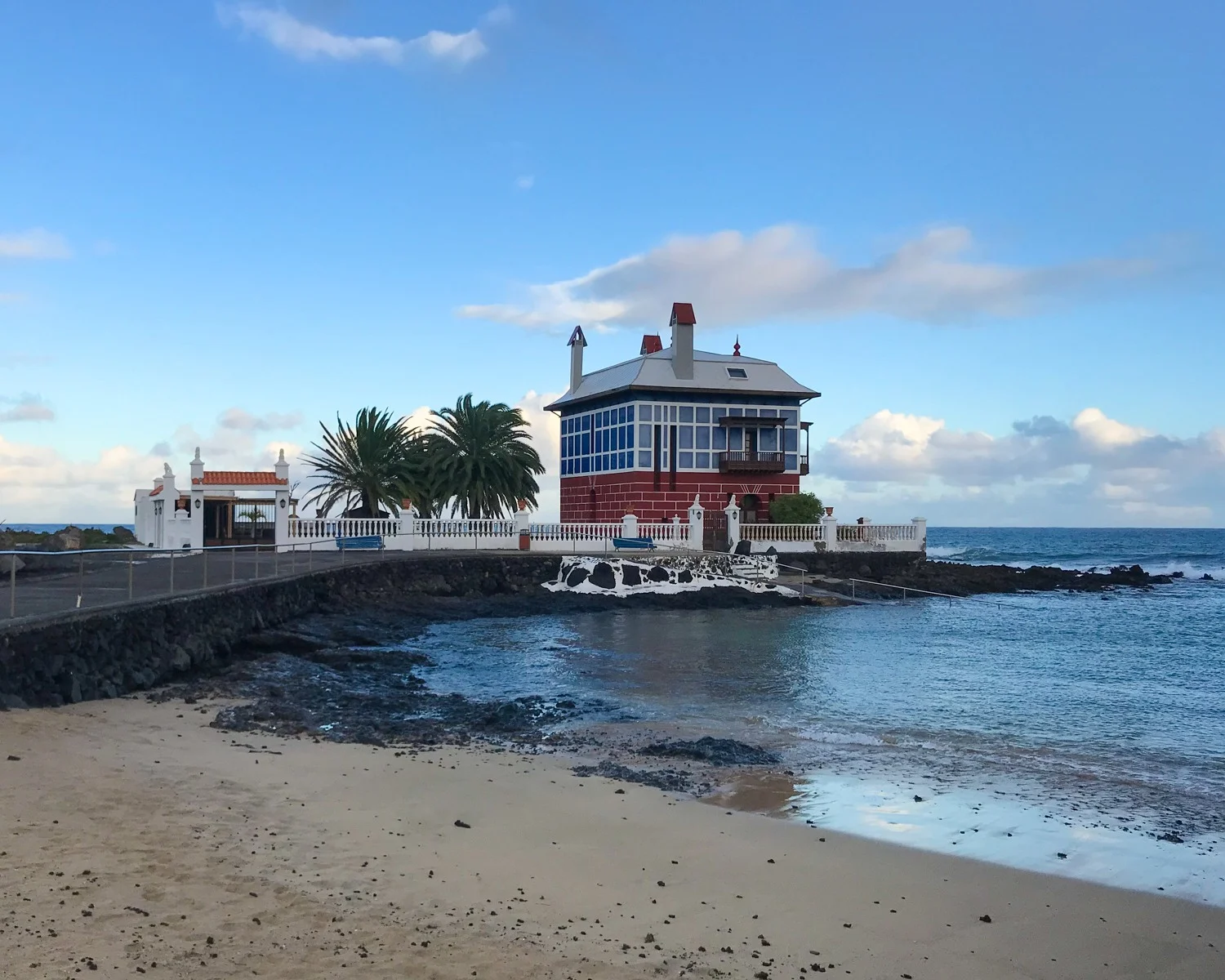
26. Mirador del Rio
Yet another creation of Cesar Manrique, the Mirador del Rio on the northern tip of Lanzarote, is part viewpoint, part visitor centre, part cafe. Sitting 400m high on top of the sheer Famara cliffs, the views are towards the island of La Graciosa and the “Rio” or strait of water that lies between it and Lanzarote.
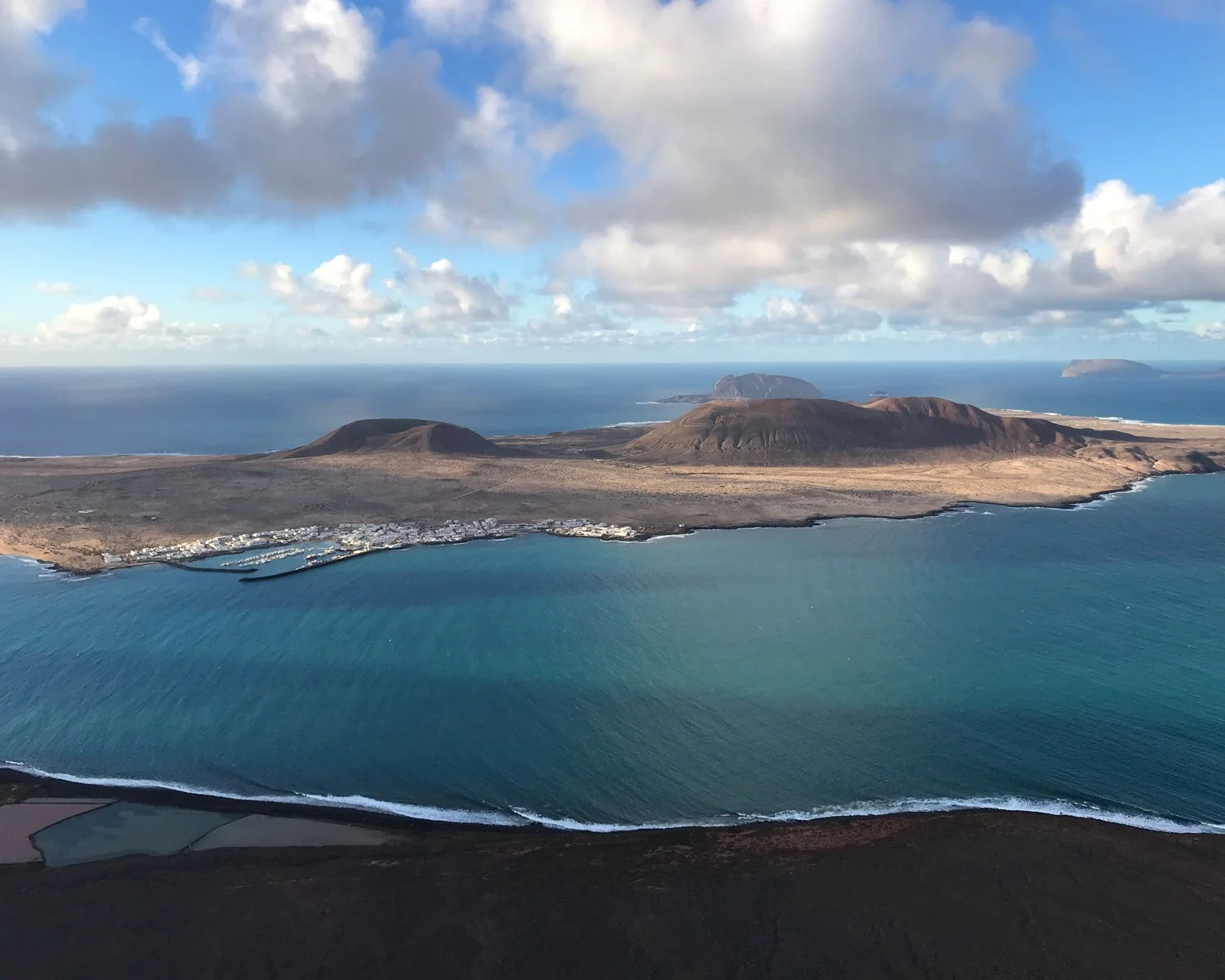
We visited right at the end of the day, when the light was turning golden and illuminating the flat plain of Isla Graciosa with just a few bumps of the extinct volcanoes. There are several different viewing levels and numerous ‘selfie’ spots, as well as the coffee shop designed by Cesar Manrique with panoramic windows. The Mirador del Rio is included in this full day Cesar Manrique tour which covers many of the places designed by the artist.
Explore the volcanic landscape of Teide National Park in Tenerife
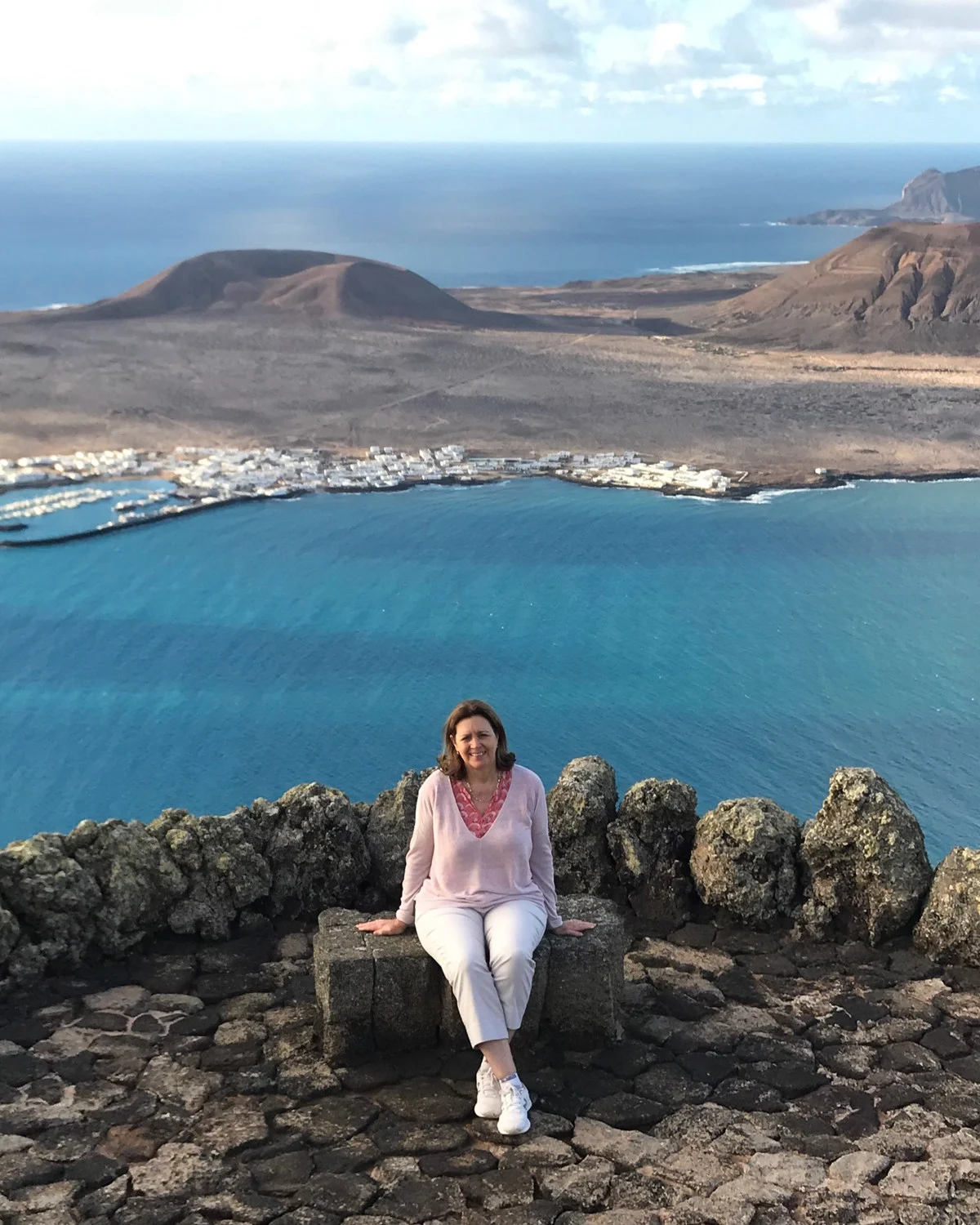
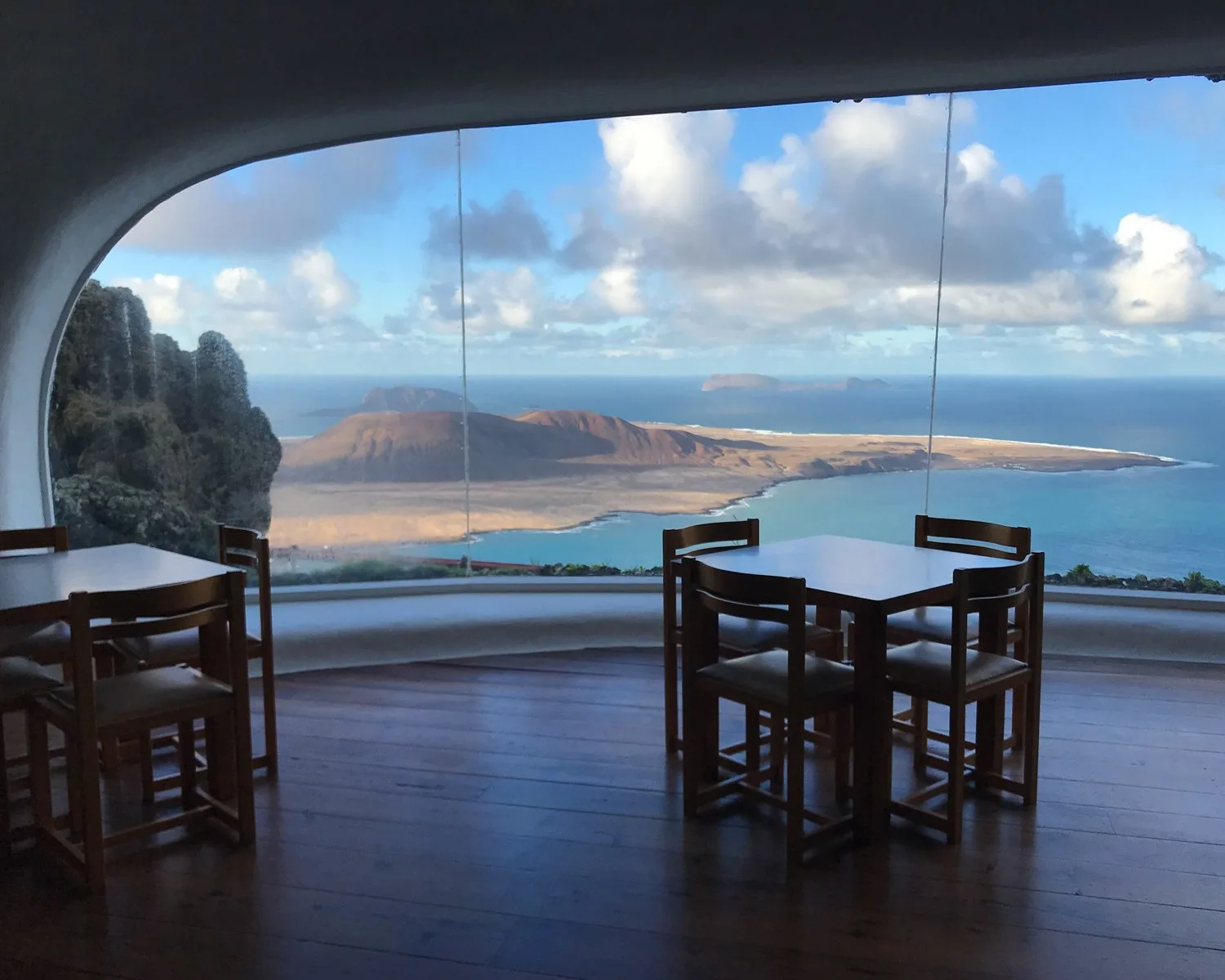
There’s a charge to visit, or you can buy a multi-visit card to include the other attractions run by CACT Lanzarote. If you’re on a budget you can just walk a little way down the road to find other viewpoints on the clifftop.
27. Famara surfing
On the north-west coast of Lanzarote, Famara beach is known for its long stretch of sand backed by dunes, which is a mecca for surfers. The Atlantic surf that pounds this beach makes it an obvious choice for surfing and other sports such as kitesurfing, with numerous surf schools that offer surfing lessons.
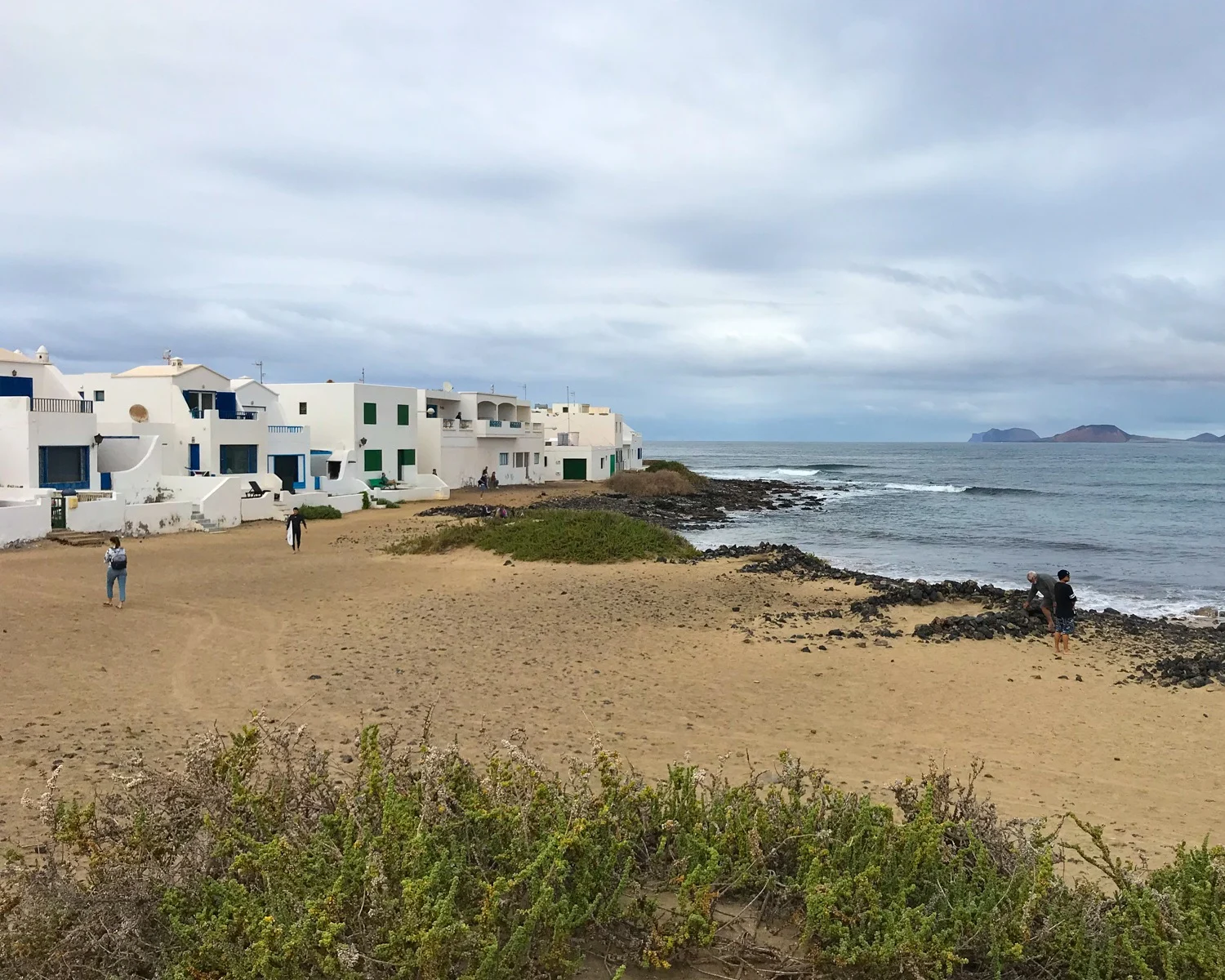
There’s a cool, hippy vibe here, with a string of cafes, seafood restaurants and side streets that are covered with sand between the low whitewashed houses facing the ocean. I can recommend the cafe of Las Bajas which had super- friendly staff, where they make the most amazing Venezuelan arepas, a spongy wrap made with corn flour and lots of tasty fillings.
Although I didn’t try out the surfing, I found it very soporific watching the surfers in action from the beach, willing them to stay on their board as they caught each wave.
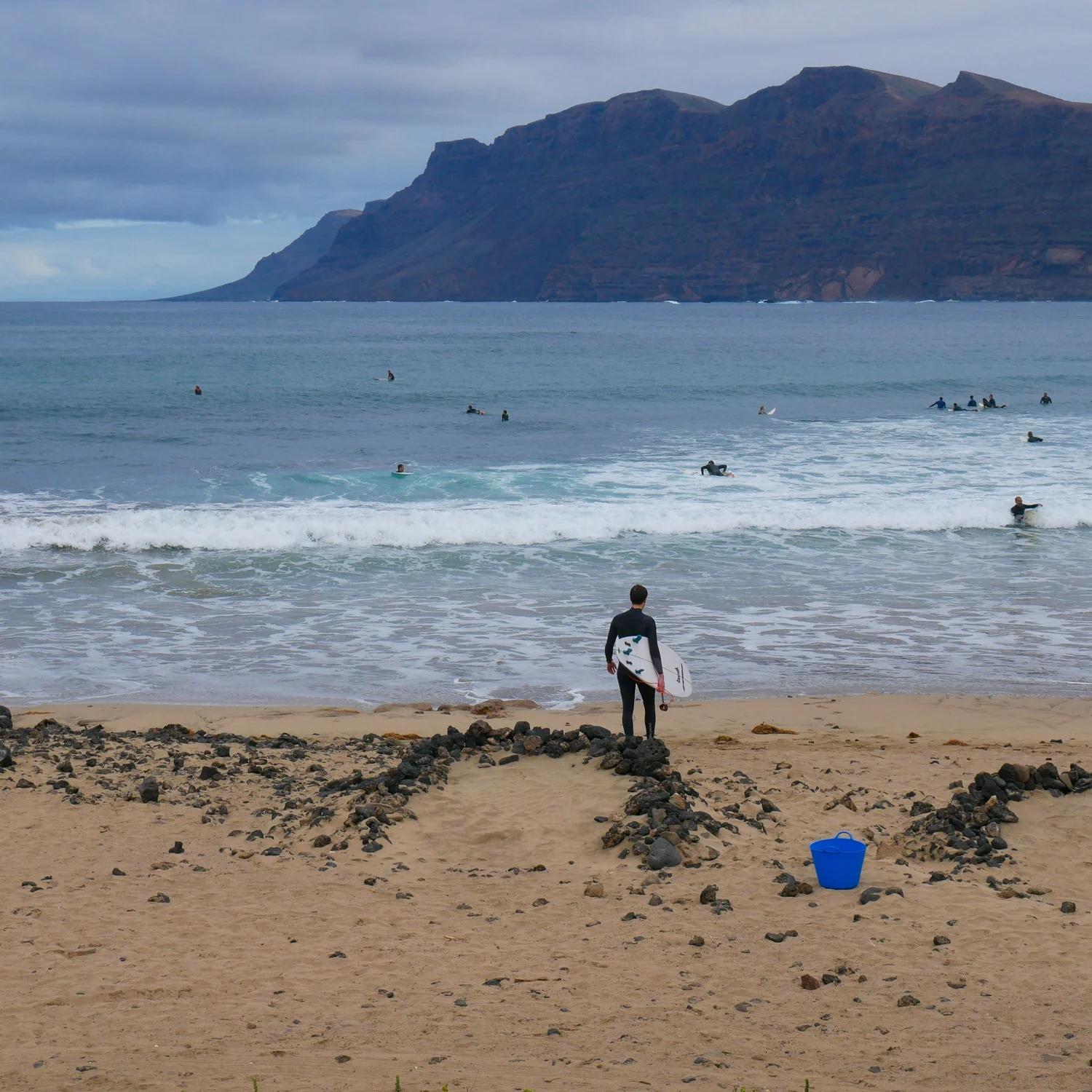
28. Ermita de las Nieves
At the top of the Famara cliffs, looking down on the beach, is an amazing viewpoint at Ermita Nieves, well worth driving up to for the views. The small chapel, which is closed except for services, was established in the 15th century and is dedicated to the “Virgin of the Snows”.
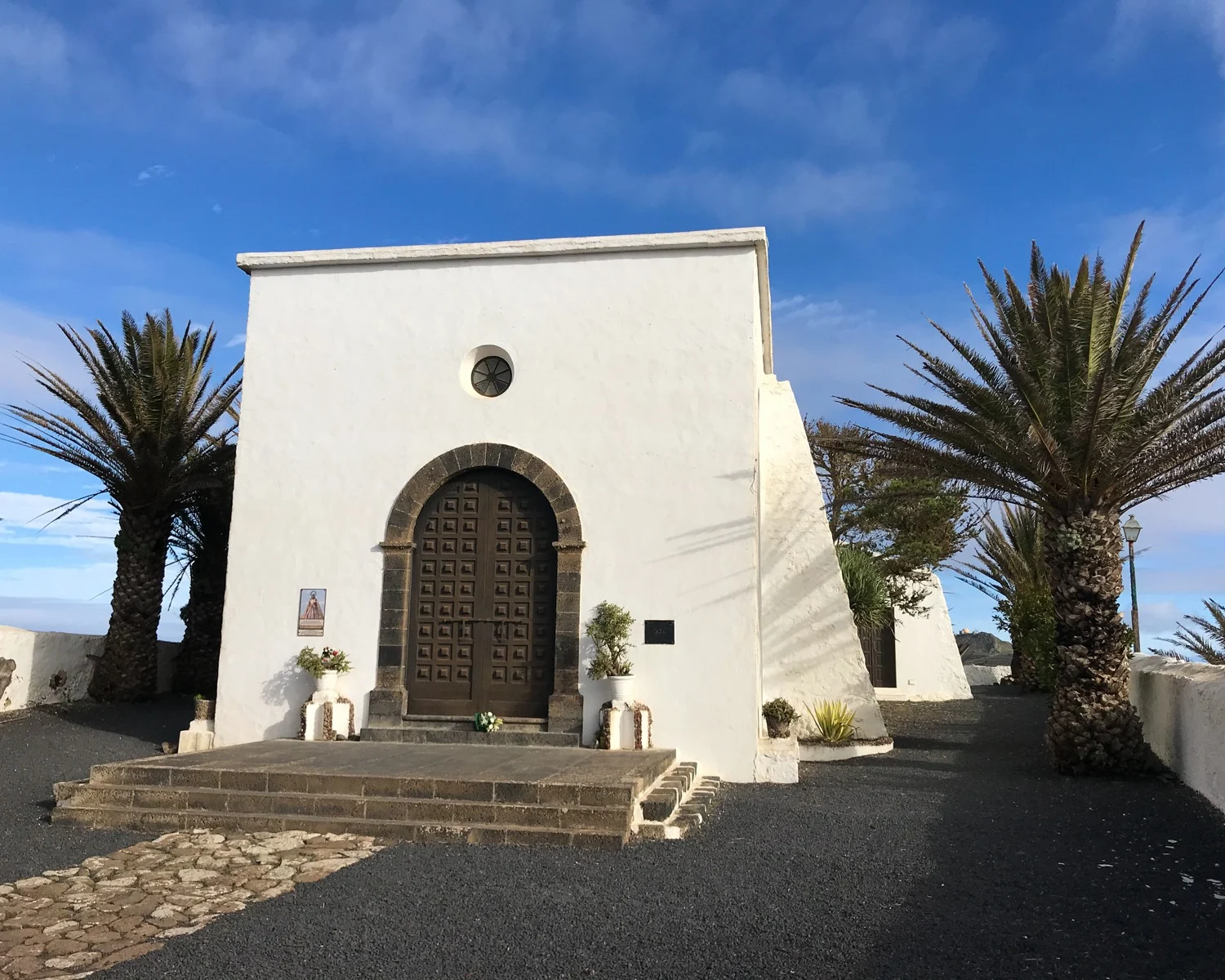
In front is a large parking area and from here you can walk along the cliff top to look down on the town of Famara. There are numerous rocks and boulders where you can perch for that perfect Instagram image, making you look as if you are on the edge of a sheer drop even though you are a little way from the edge! For walkers there’s a path from here that winds steeply down the cliff and takes you to the beach at Famara.
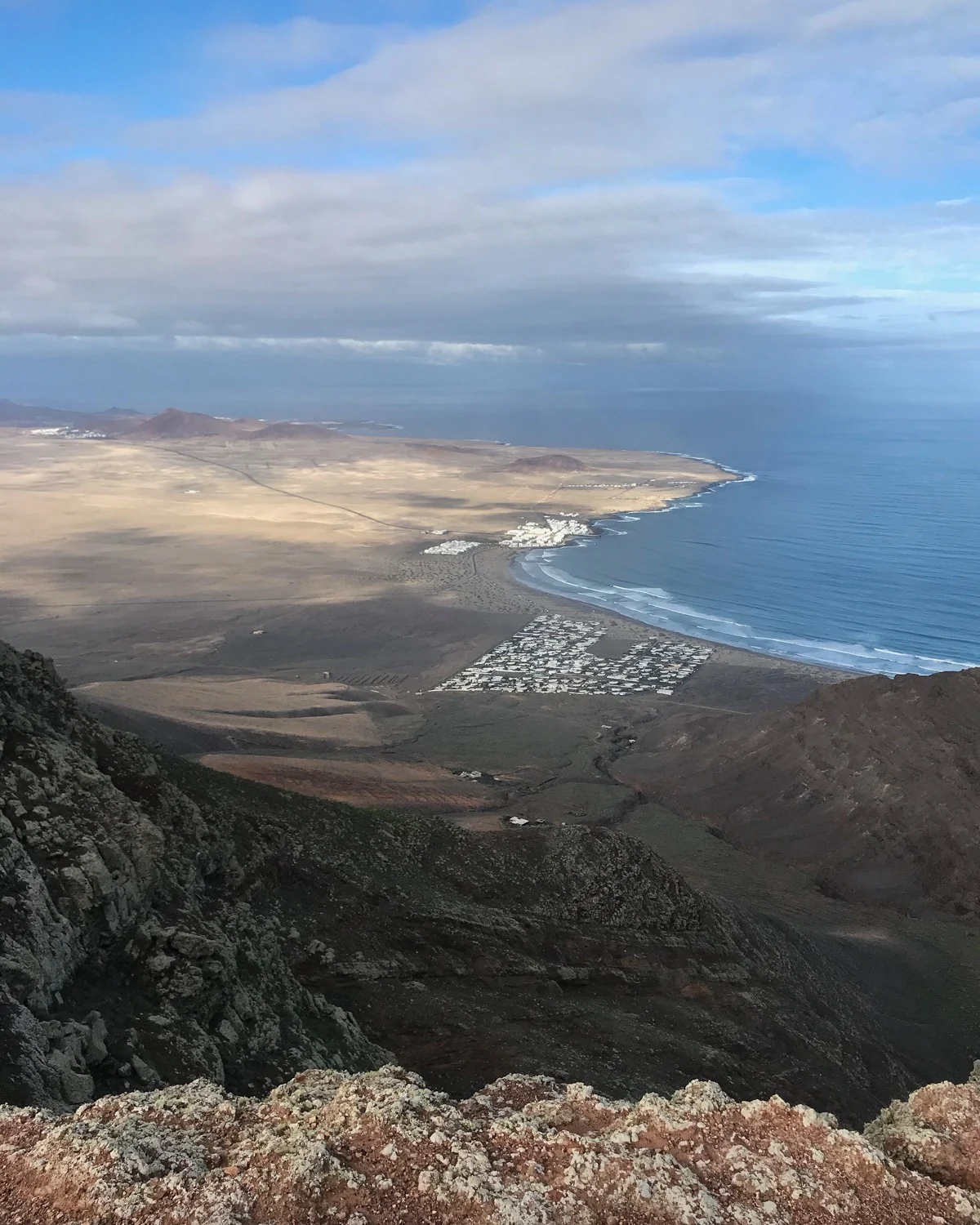
Around Lanzarote
There are a few other things to do in Lanzarote that I want to recommend that aren’t specific to one part of the island.
29. Local markets in Lanzarote
The local markets in Lanzarote are a fun way to discover the artisan crafts and shop for authentic souvenirs. Look out for the stalls that sell traditional food products such as goats cheese, fig or mulberry jam, local breads and fresh vegetables like the local cherry tomatoes.
Some of the markets focus on fruit and vegetables, ideal if you are self-catering and want to buy locally grown produce. The best known are Haria market on Saturday and Teguise market on Sunday but there are many more. Here’s a list of some of the popular Lanzarote markets:
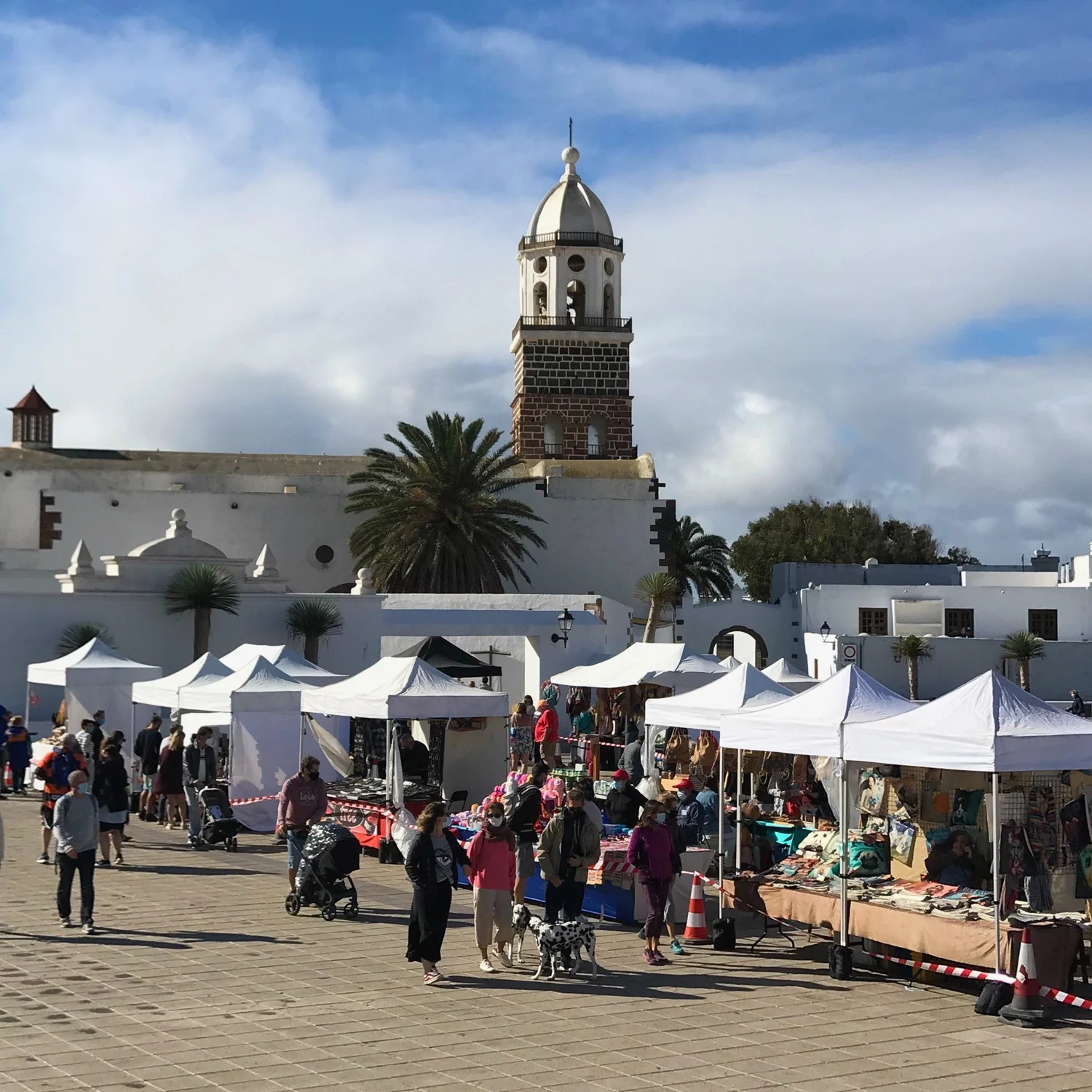
List of Lanzarote markets
- Teguise market – Sunday 9am – 2pm
- Haria market – Saturday 10am – 2pm Plaza León y Castillo
- Uga market Saturday / Sunday 10am – 2pm
- Puerto del Carmen – Friday 10am – 3pm Plaza del Varadero
- Puerto Calero market – Tuesday and Friday 10am – 2pm Plaza de Las Carpas
- Mancha Blanca market – Sunday 9am – 2pm by Church of Nuestra Señora de Los Dolores
- Playa Blanca market at Marina Rubicon Wednesday and Saturday 9am – 2pm
- Arrecife market – Saturday 9am – 2pm Old Town
- Arrecife market – Wednesday and Thursday 9am 2pm Charco de San Ginés
- Costa Teguise market – Wednesday 6pm – 10pm and Friday 5pm – 10pm Plaza del Pueblo Marinero
- Tahiche market – Thursday 9am – 2pm Plaza del C.S.C. Santiago el Mayor
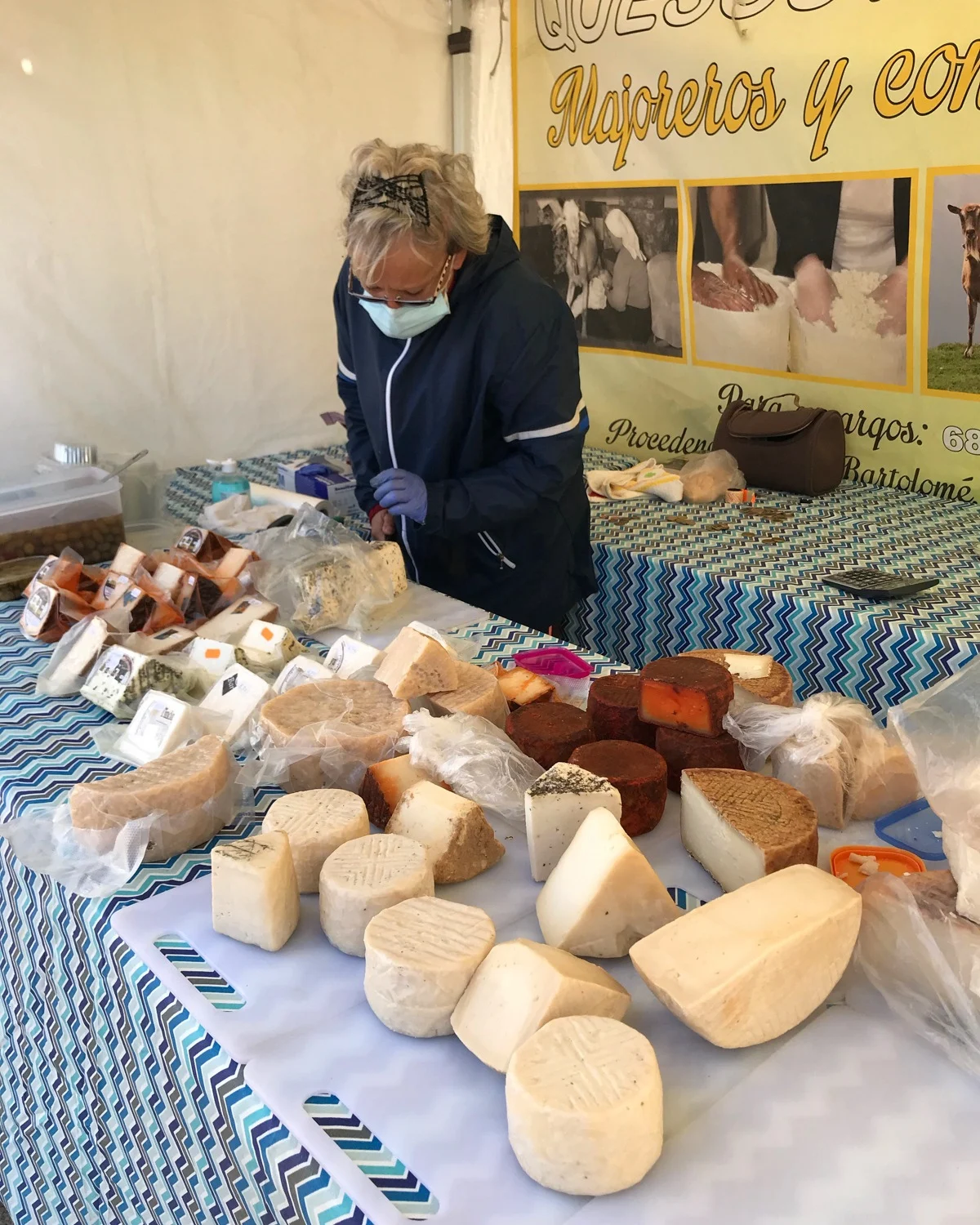
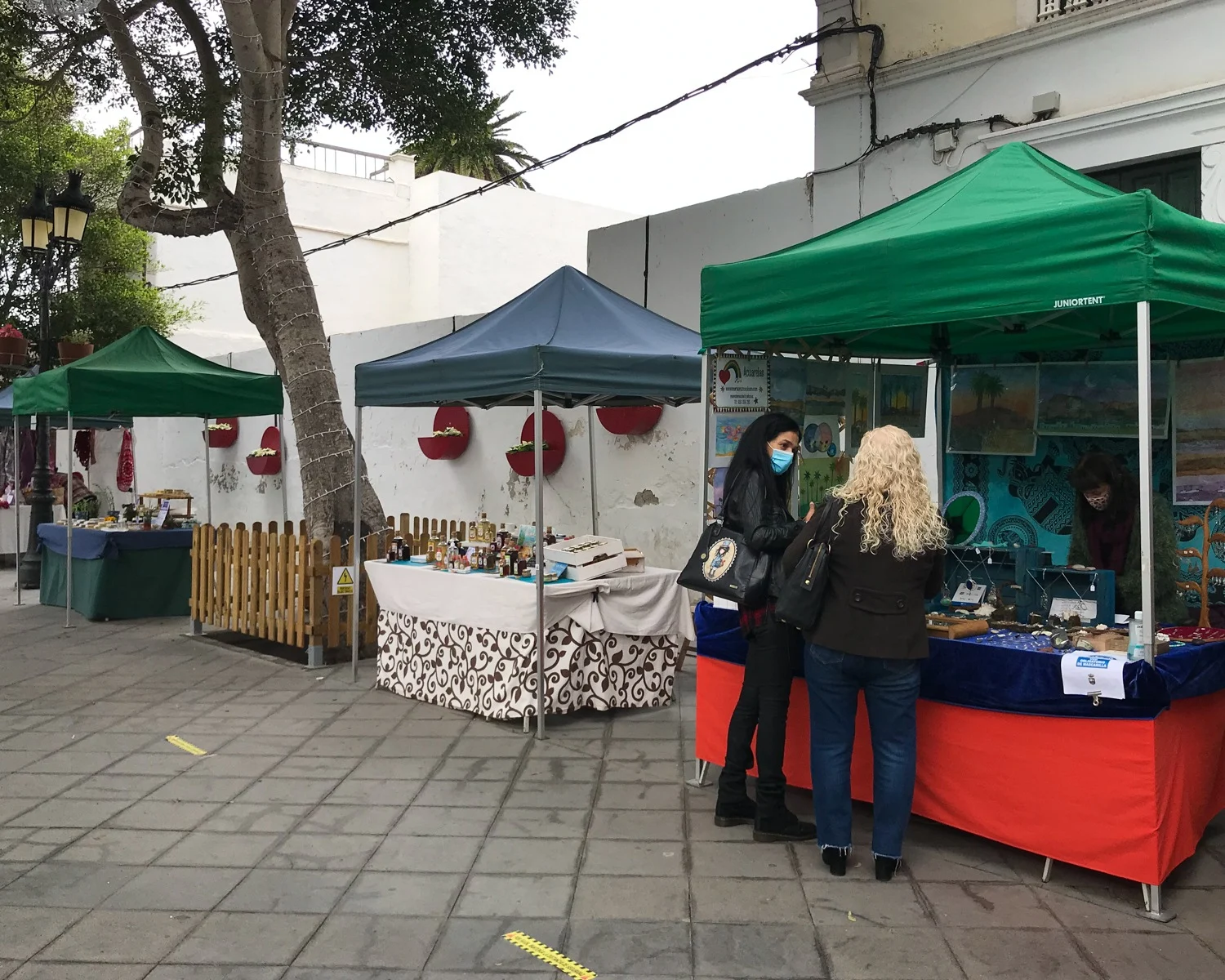
30. Swim in the natural pools
For lovers of wild swimming, the natural swimming pools in Lanzarote make a fun change from the beaches. They are created on rocky shores where the rock formations have been enclosed and equipped with ladders and steps to make it safer to swim, sheltered from the waves and surf.
We visited the rock pools at Punta Mujeres, just north of Arrieta where we were staying. This small fishing village has a whole series of rock pools on the seafront, which are easy to locate as you walk along the promenade.
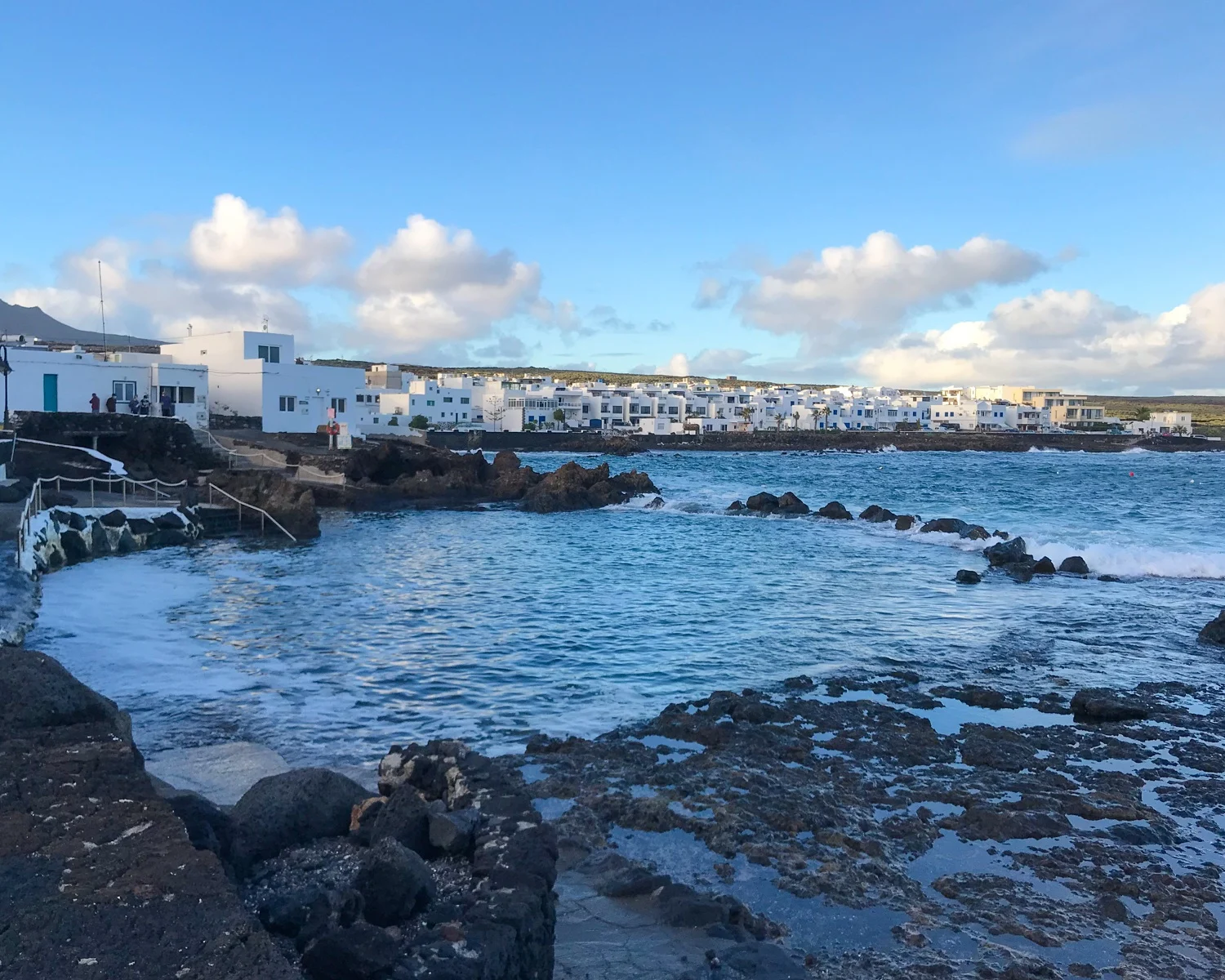
The other well known rock pools of Los Charcones are in a more secluded location off the small LZ-701 road between Playa Blanca and las Salinas de Janubio. The access track is rocky and you’ll need good shoes to climb down to the pools to be rewarded by swimming in clear, turquoise water.
31. Eat seafood in Lanzarote
The seafood in Lanzarote is outstanding and inexpensive, much of it locally caught by the fishing boats that work from different ports. All around the island you’ll find seafood restaurants, overlooking a rocky shore or Chiringuita style on a sandy beach, where you can dine with a view of the ocean.
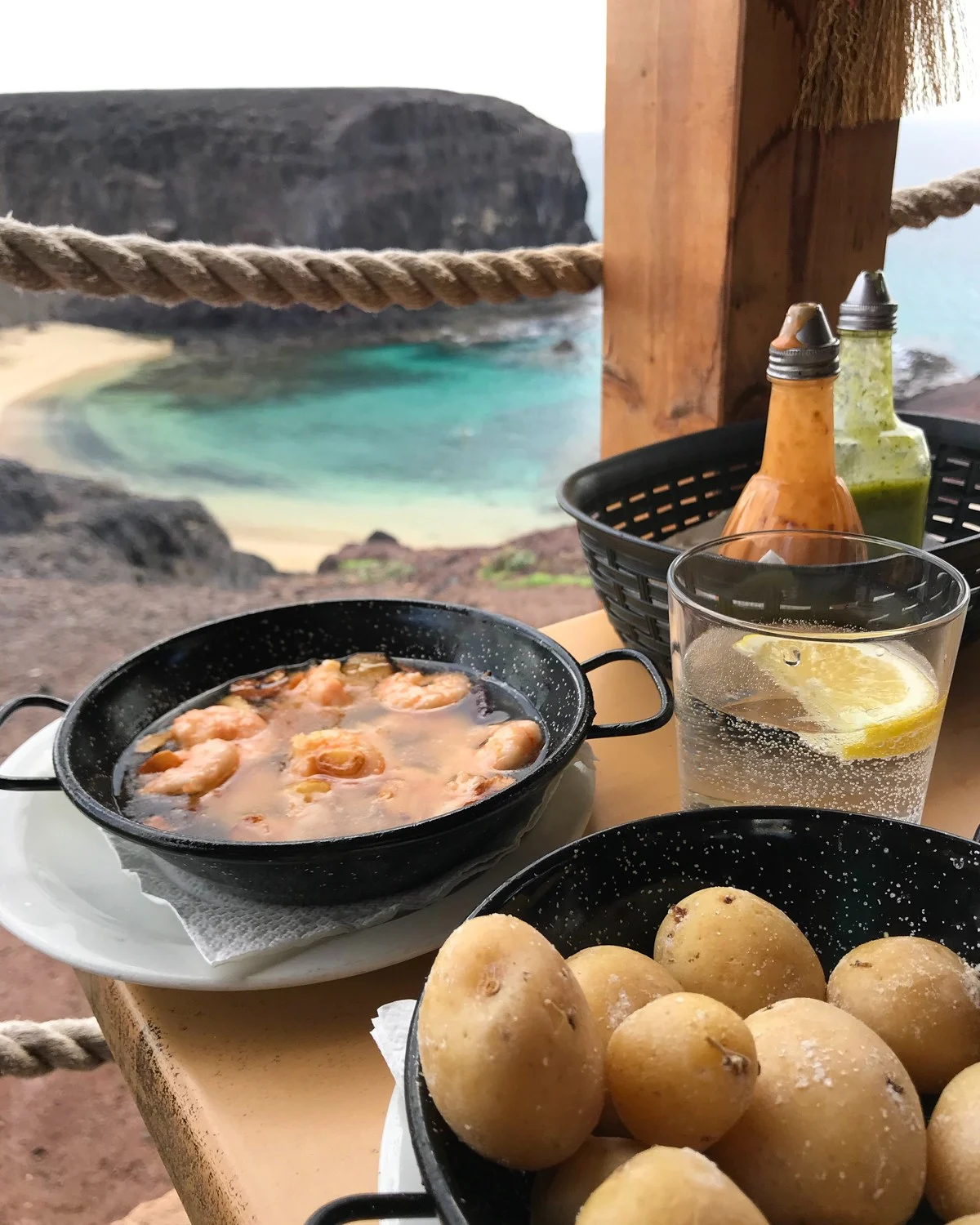
The waiter will recite a list of the fresh fish of the day but if you’re not sure what to order, a paradilla or platter for two is a good option, giving you a selection of fish and seafood.
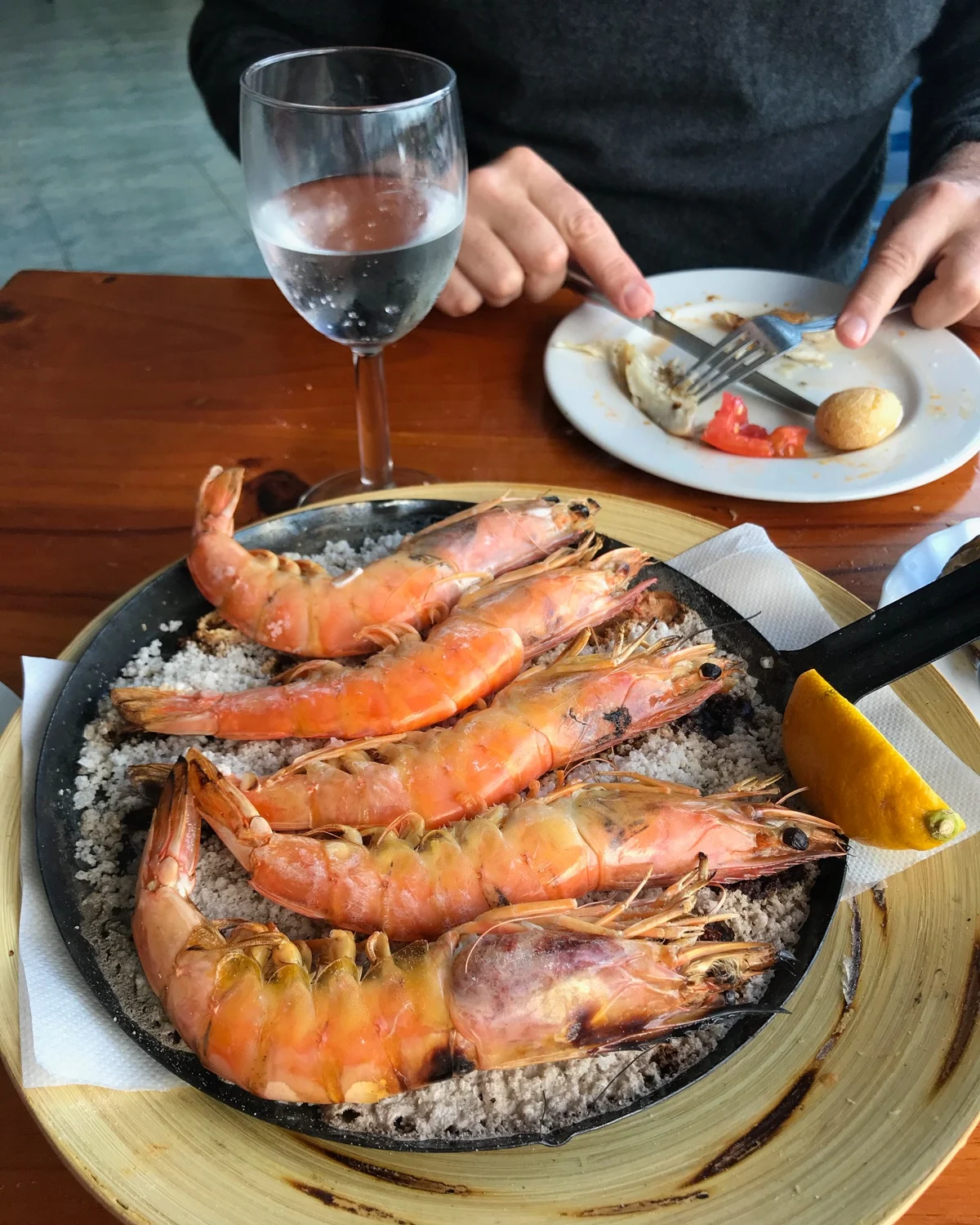
Typical specialities are Sancocho (fish stew), pulpo a la plancha (grilled octopus) gambas al ajillo (garlic prawns in sizzling oil) and lapas (limpets) grilled with green Mojo sauce.
Read more about the delicious seafood: Food in Lanzarote: 25 dishes and drinks you’ll want to try!
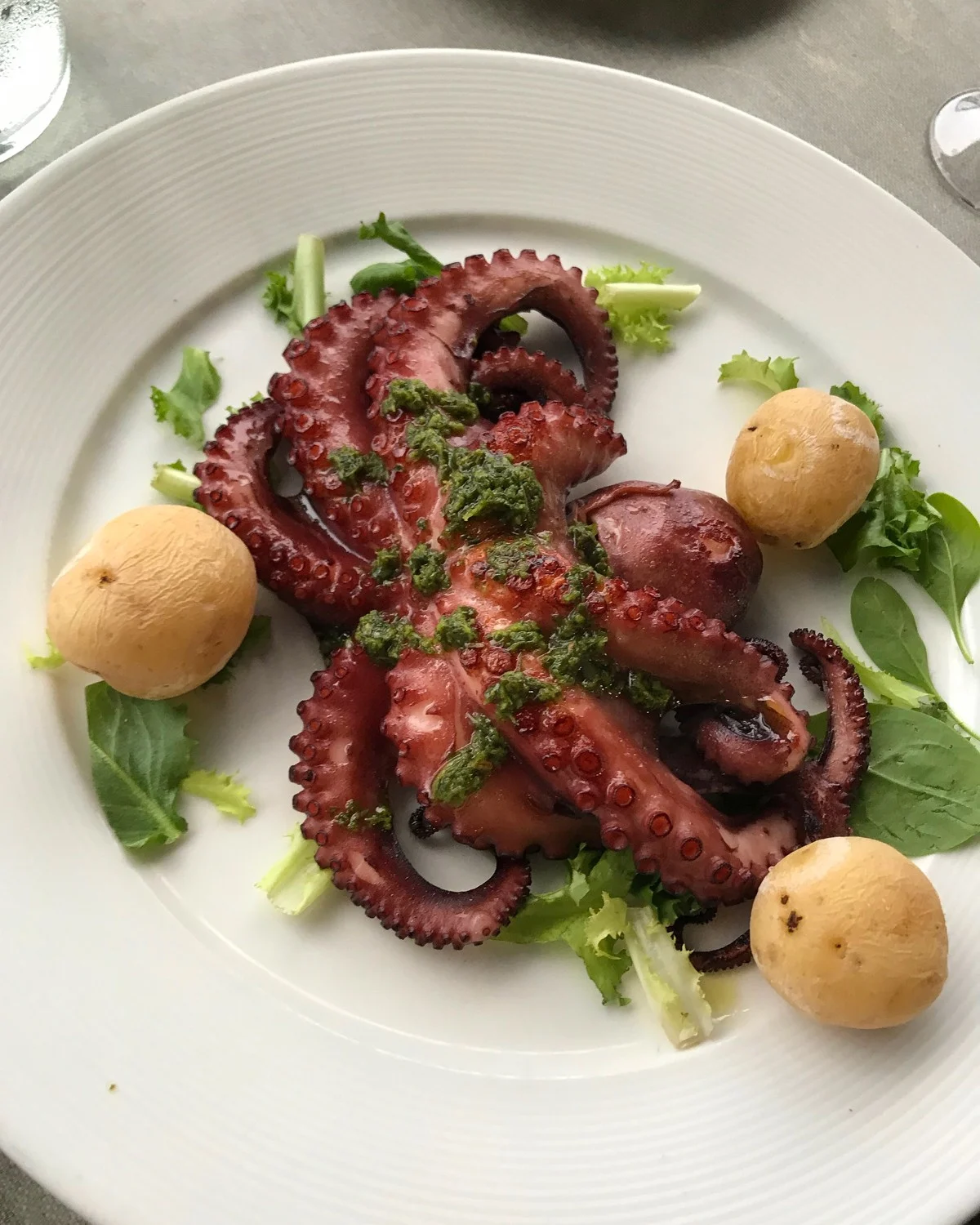
32. Cesar Manrique wind toys
Driving around the island, we came across unusual sculptures on some of the roundabouts and learned that these juguetes del viento or “wind toys” were designed by artist Cesar Manrique. As they catch the trade winds from the north, the sculptures move and turn to catch the eye, in a reference to the windmills that were once common on Lanzarote.
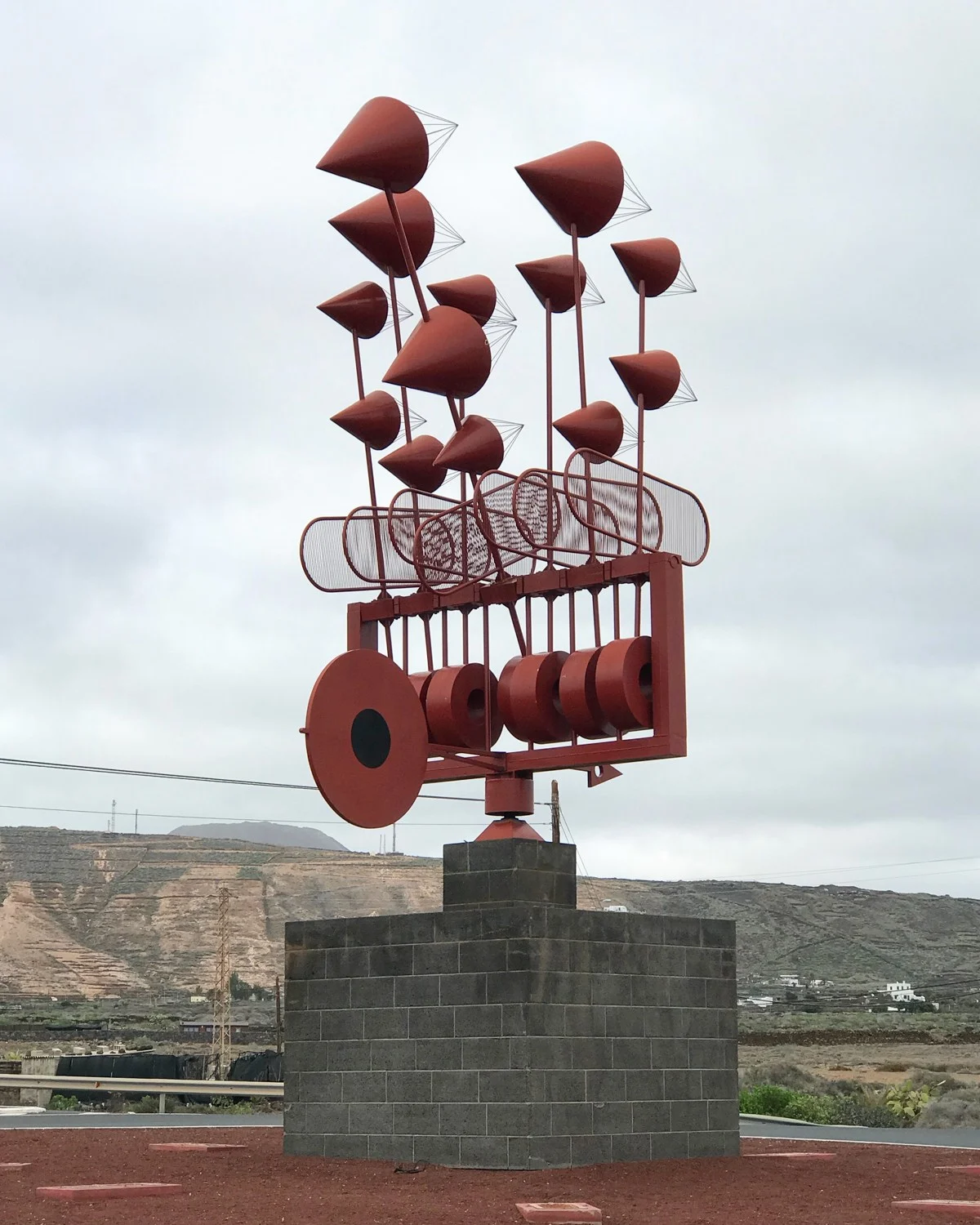
The Cesar Manrique wind toys can be found at the following locations:
- Arrieta – near the garage on the roundabout into town
- Tahiche – on the roundabout closest to the Cesar Manrique Foundation Volcano House
- Tahiche – in the gardens of the Cesar Manrique Foundation Volcano House, which can only be viewed as part of a visit.
- Lanzarote airport – on the roundabout as you exit the airport
- Montaña Blanca – the roundabout on the road from Tías to San Bartolomé, where you turn off for Montaña Blanca.
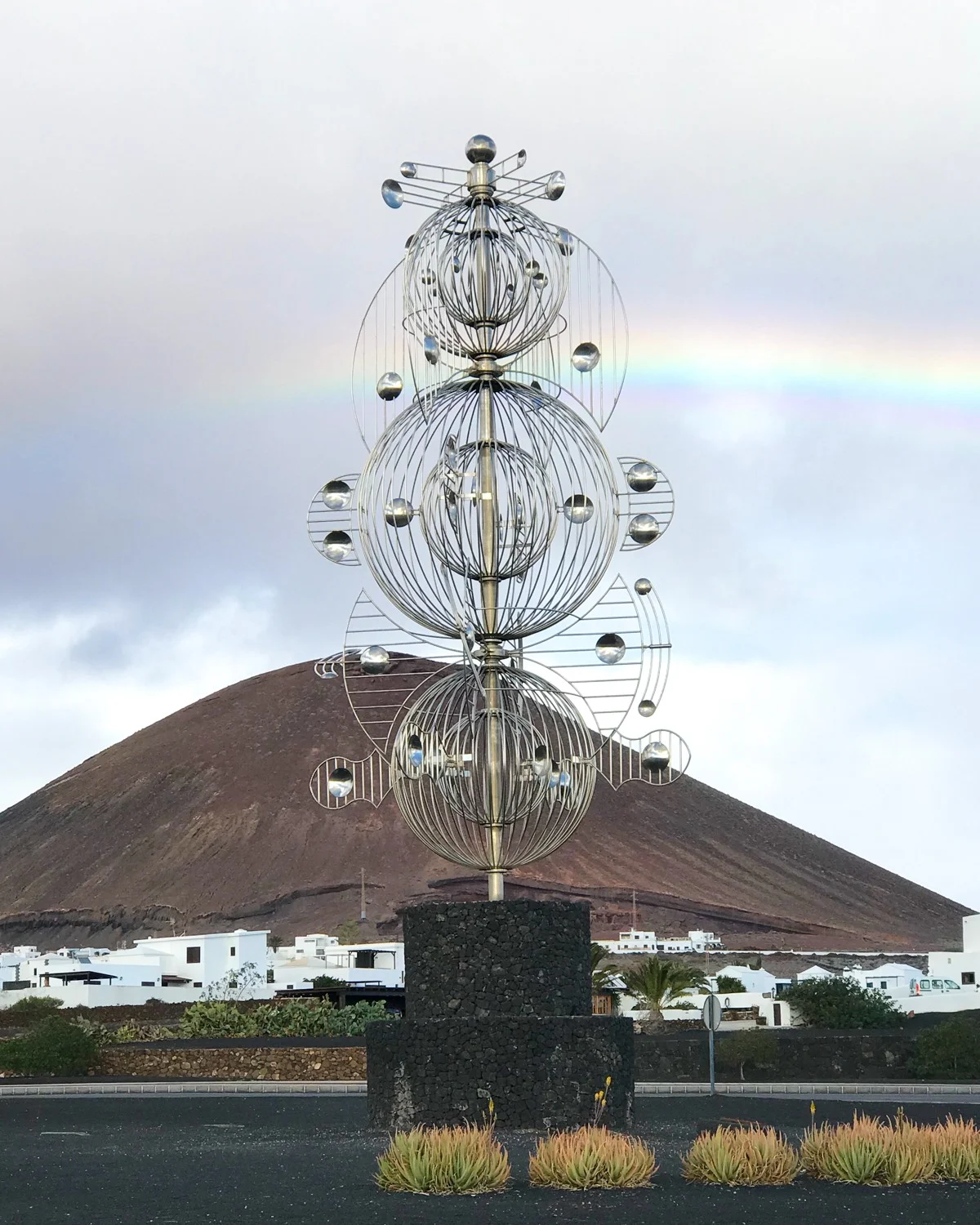
Plan your trip to Lanzarote
For a comprehensive but compact guidebook covering all you need to know about Lanzarote, I recommend the Lanzarote Marco Polo pocket guide.
This is the guidebook that I used while were were there and it gives lots of background information and insider tips on the best things to see, including a free touring app with maps to download and use offline.
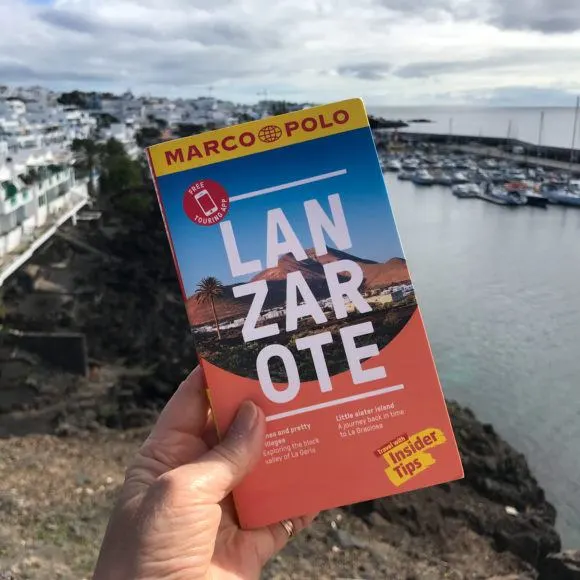
Looking a guidebook for Lanzarote? We used and can recommend the Marco Polo pocket guide
Where to stay in Lanzarote
We stayed at two delightful places during our 10 day trip to Lanzarote
- Finca de Arrieta with Lanzarote Retreats – a small eco-village on the northern coast at Arrieta which has a number of different villas, stone lodges and yurts with a relaxed and friendly vibe, that are ideal for independent travellers. Read my review of Finca de Arrieta here.
- For more places to stay check out these hotels in Lanzarote.

- Finca Malvasia – boutique rural accommodation in the heart of the La Geria wine region, set among a working vineyard. The stylish cottages converted from the old winery are furnished in contemporary style, around a turquoise Cesar Manrique style swimming pool. Read my review of Finca Malvasia here.
- For more places to stay check out these hotels in Lanzarote.

Find more information to plan your visit to Lanzarote on the Turismo Lanzarote website and the Hello Canary Islands website.
Map of Lanzarote
Click on the my map of the best things to do in Lanzarote to explore some of the places mentioned in this article.
Pin it for later!
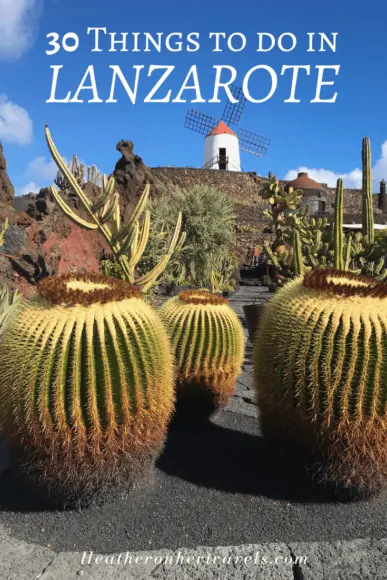
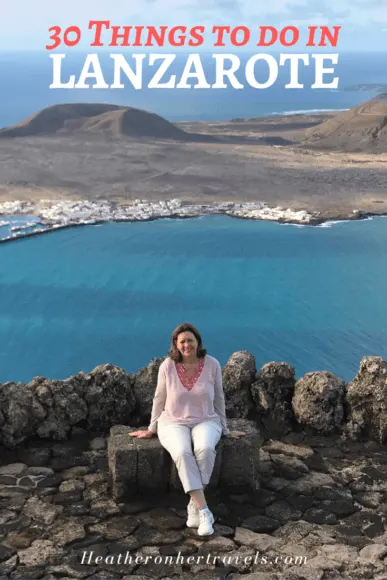
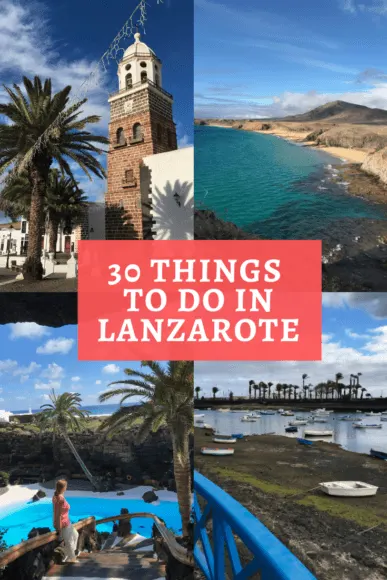
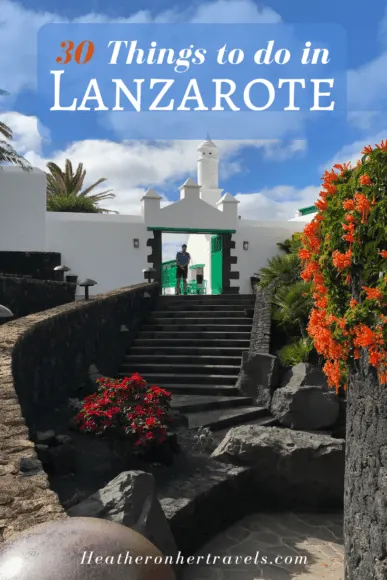
Some of the activities, attractions or tours mentioned were provided* by Lanzarote Tourism or the tour companies concerned, while other costs we covered ourselves.
* More info on my policies page
This article is originally published at Heatheronhertravels.com

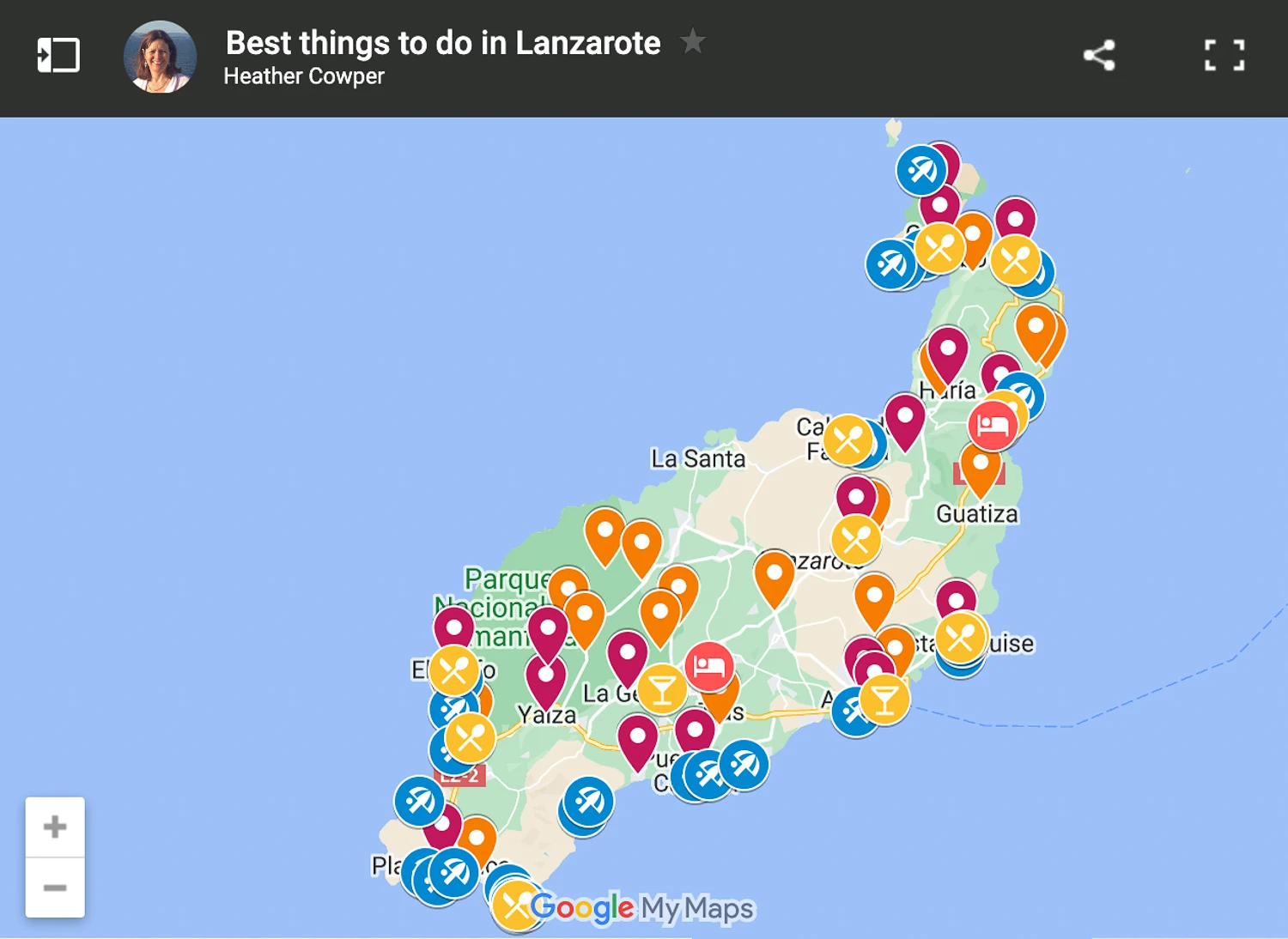


Rachel
Monday 13th of June 2022
Great write up on Lanzarote! There are so many cool things to see on the island. Favourite hikes have to be Caldera Blanca and walking from Puerto Del Carmen to Puerto Calero. The diving is spectacular as well! So much marine life to see! The Angel Sharks and Seahorses are amazing to see!
Heather Cowper
Tuesday 14th of June 2022
@Rachel Thanks for your tips
modelawer
Sunday 6th of June 2021
Wow! that sounds like a real adventure. I can't wait to visit Lanzarote and having fun in Volcanic Timanfaya National Park and those caves, which are amazing. Thanks, Heather for sharing your experience.
Rocky
Monday 24th of May 2021
Okay now! I am LOVING the vibe there! You've made Lanzarote sound absolutely amazing. I lived in Spain for some time, but I've never been to the Canary Islands. I think after seeing this, that's going to have to be a priority in the future! Thanks for putting together this wonderful, in-depth guide to help inspire us! By the way, I'm Rocky from The Rocky Safari https://www.therockysafari.com/ travel blog. It's so fabulous to connect with you! Keep up the awesome work.
Heather Cowper
Monday 24th of May 2021
@Rocky So pleased you enjoyed the article, Lanzarote is really worth a visit!
Happy camper
Thursday 1st of April 2021
Lanzarote has been on my list of place to visit for some time. As an armature surfer and foodie it has the perfect balance of great food market and also I would love to visit the The Mojito van in Arrieta. Great in-depth article
Heather Cowper
Sunday 23rd of May 2021
@Happy Camper - so pleased you found it useful